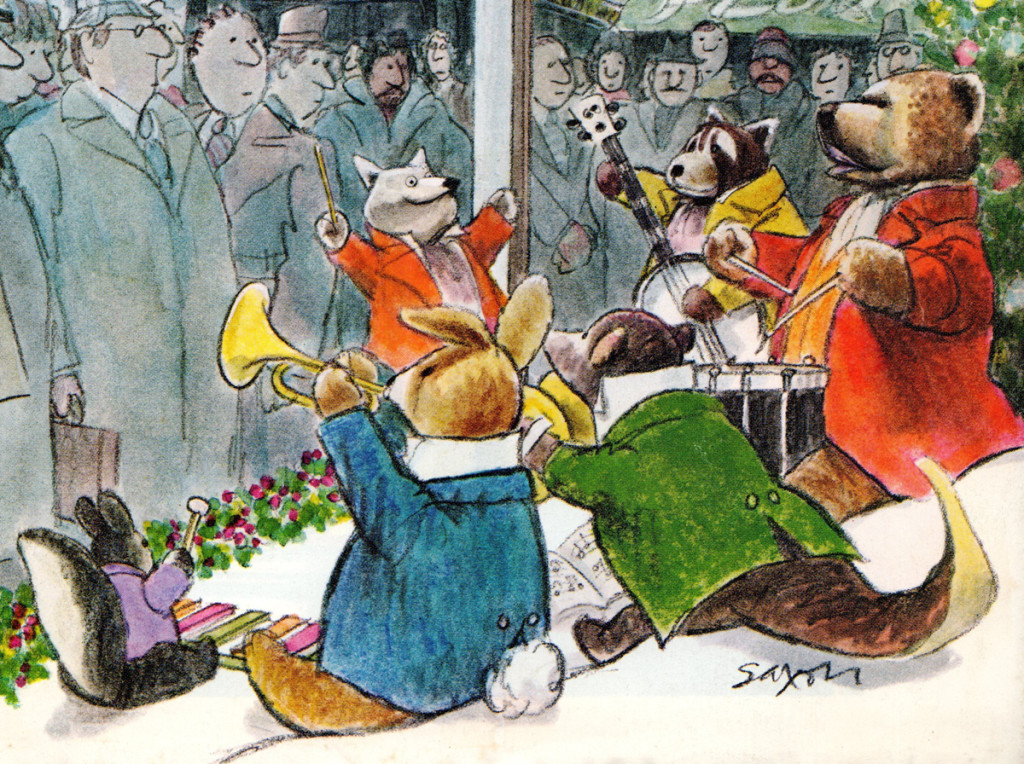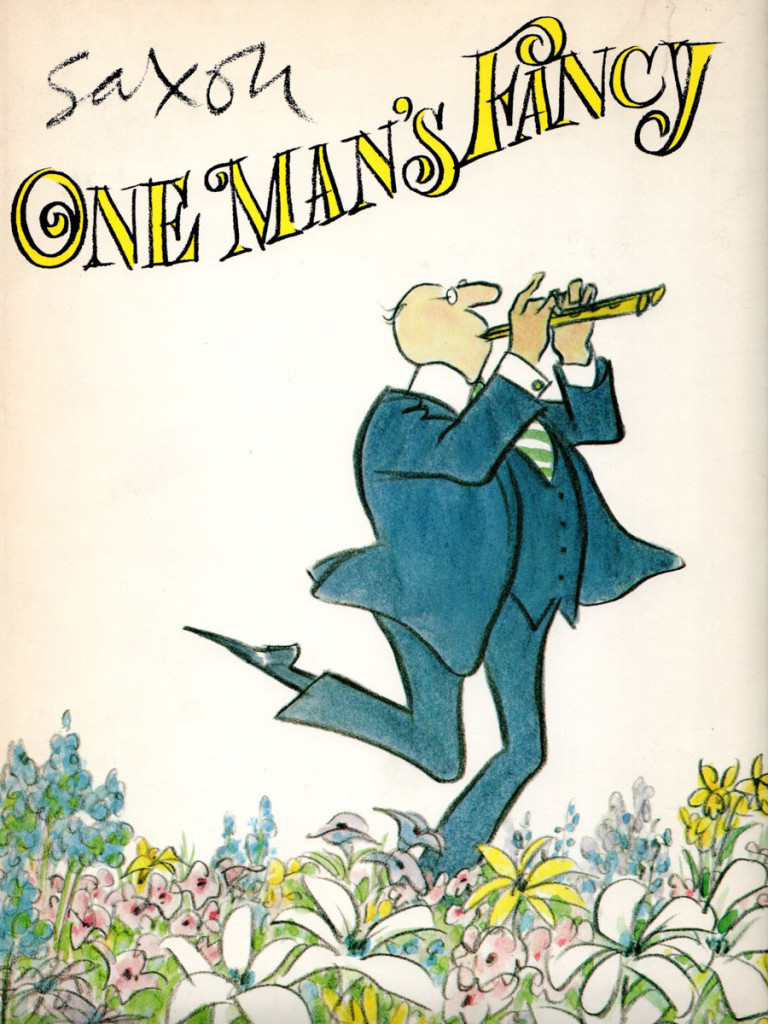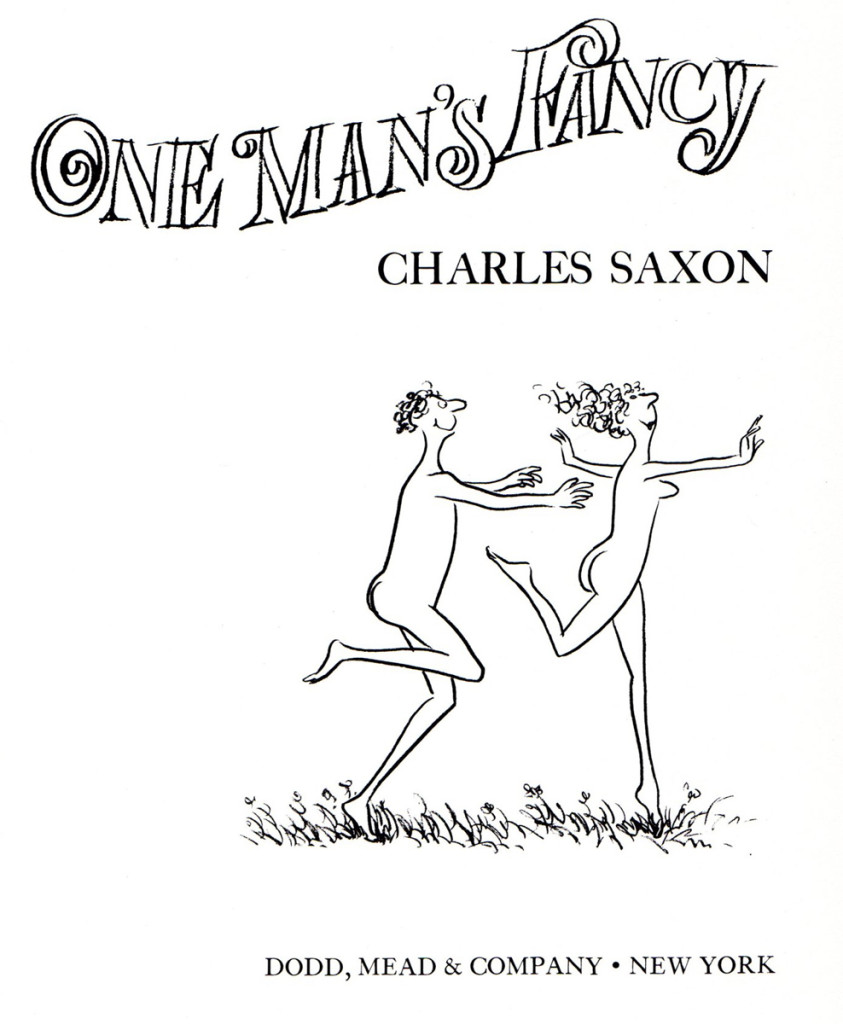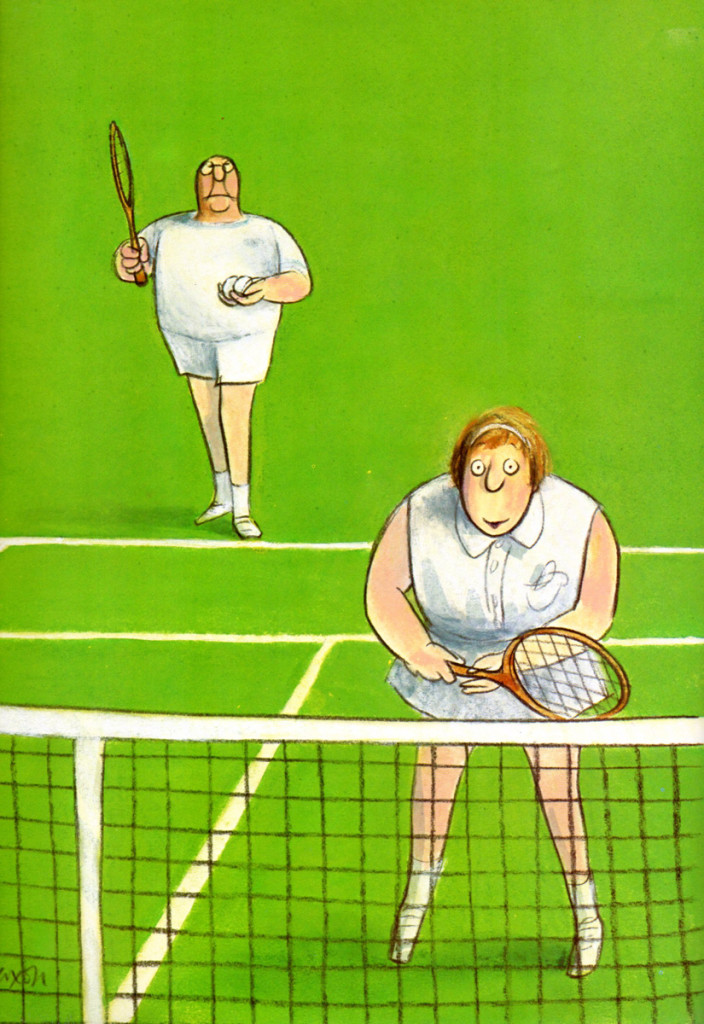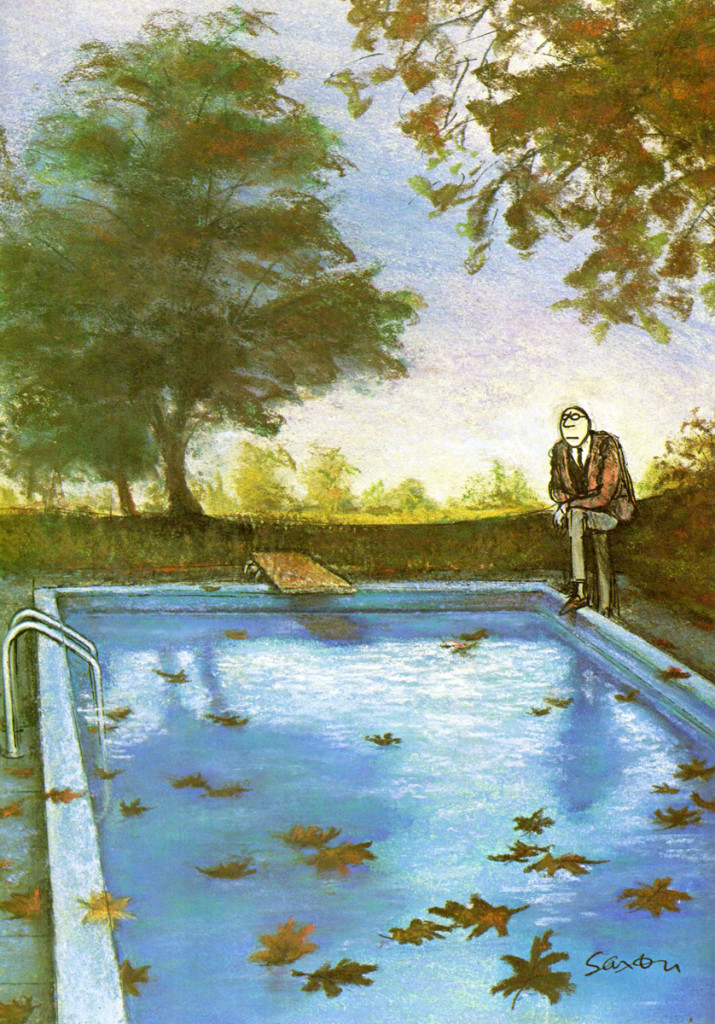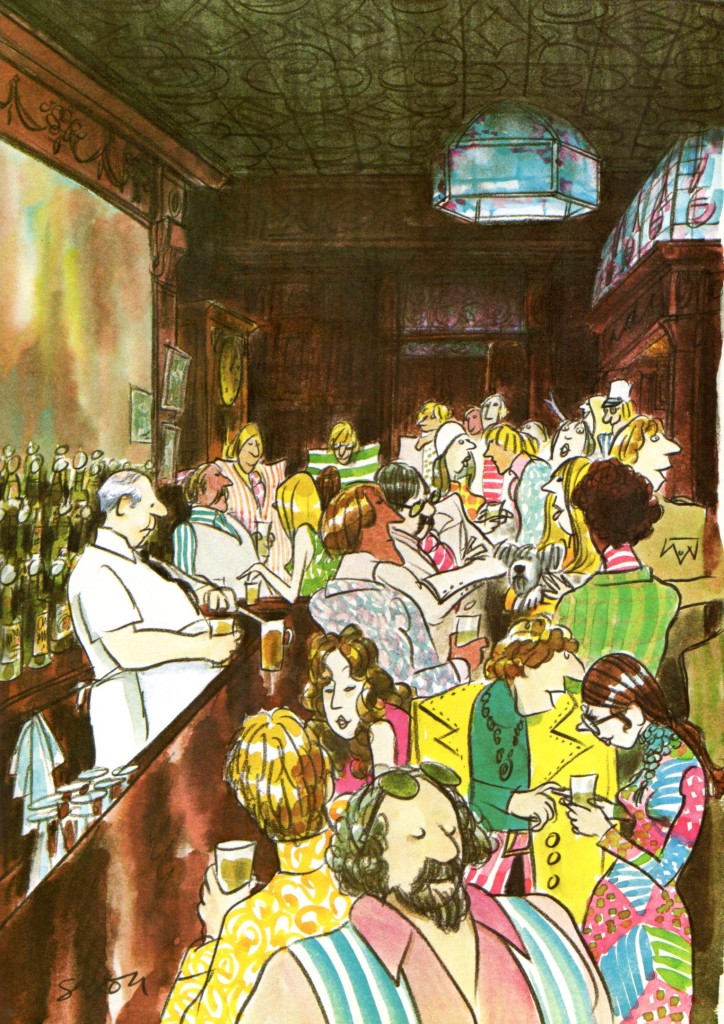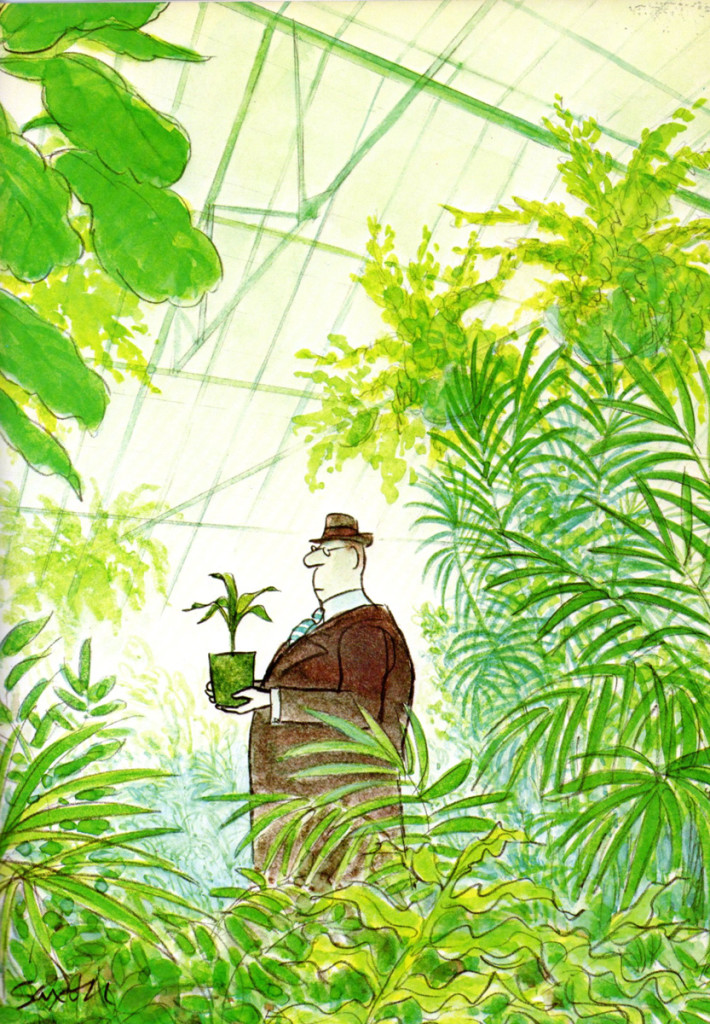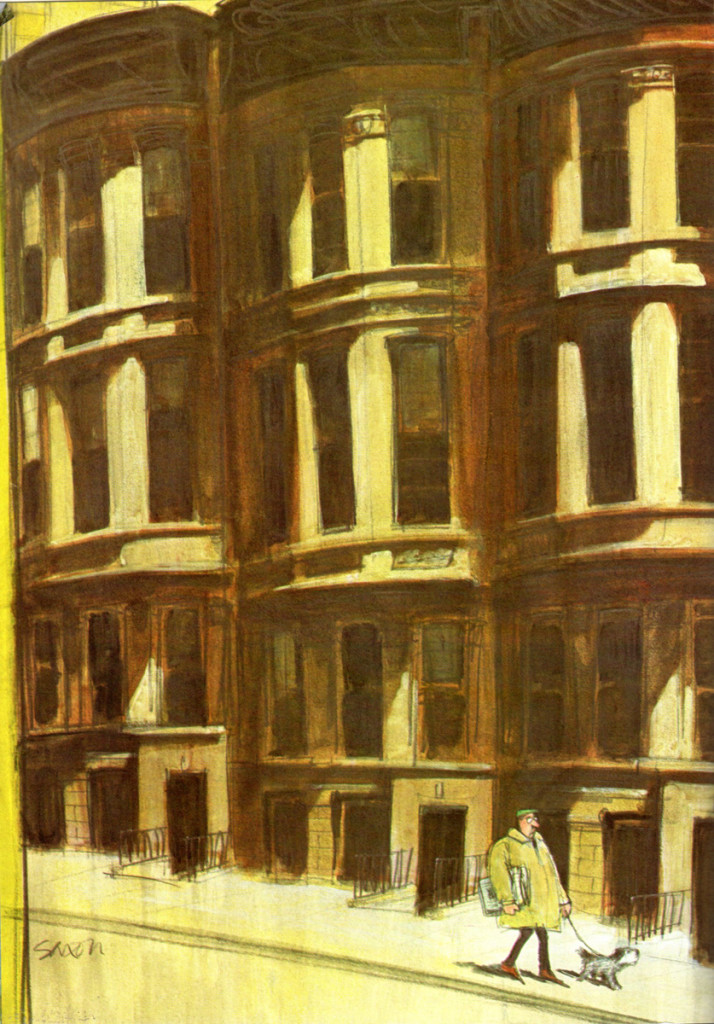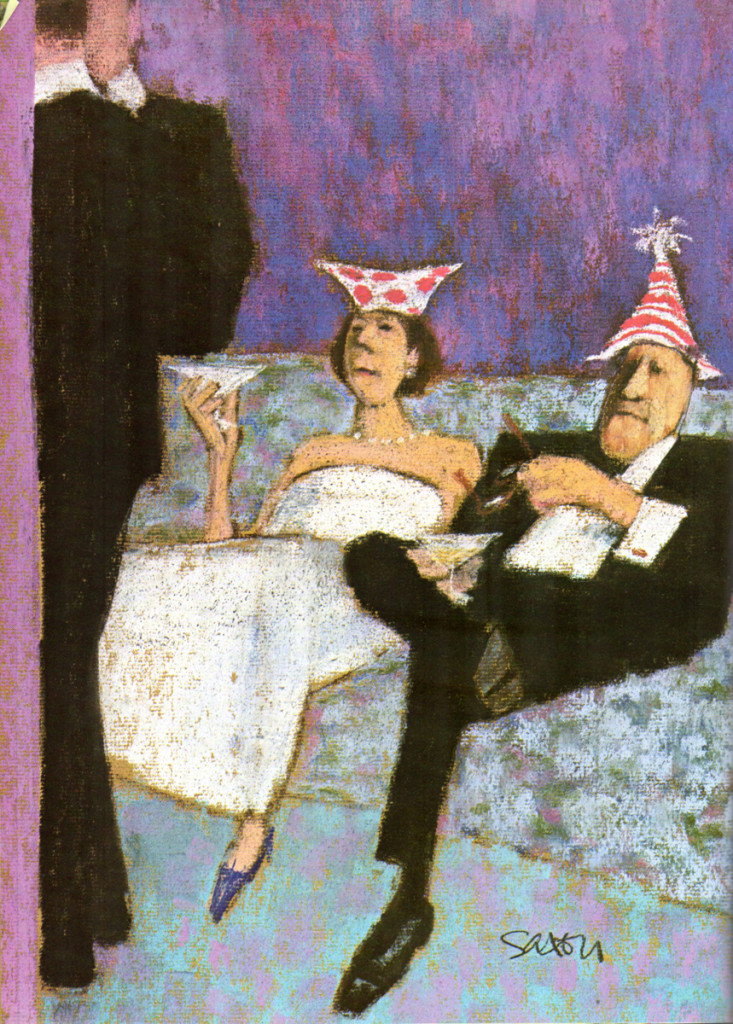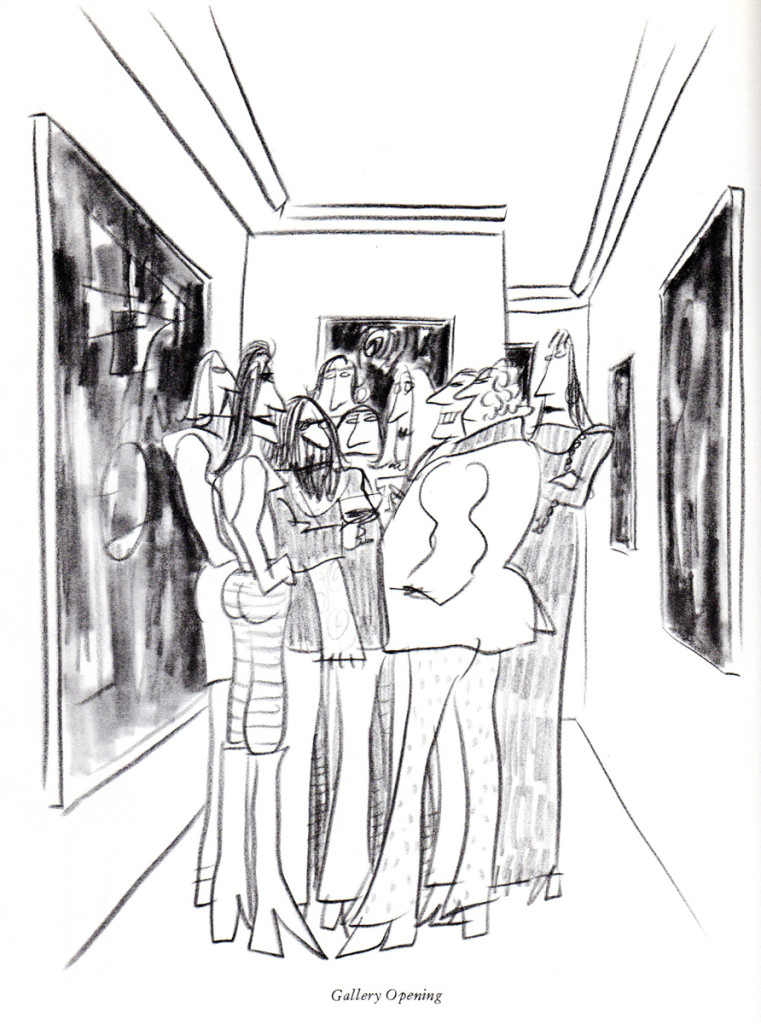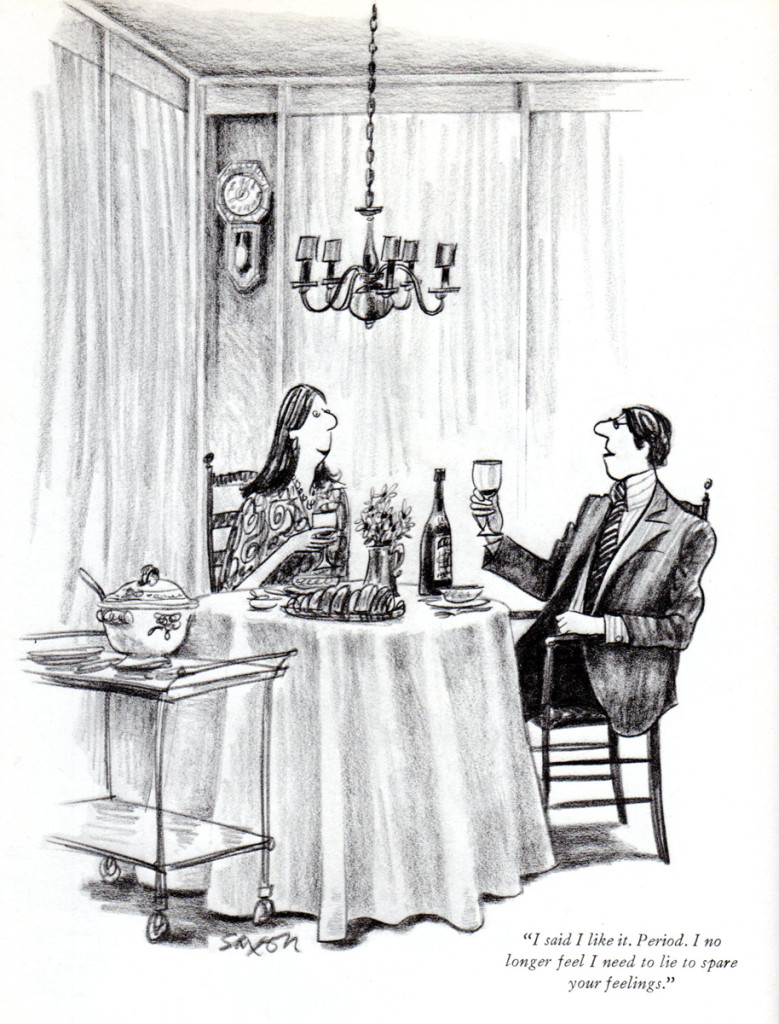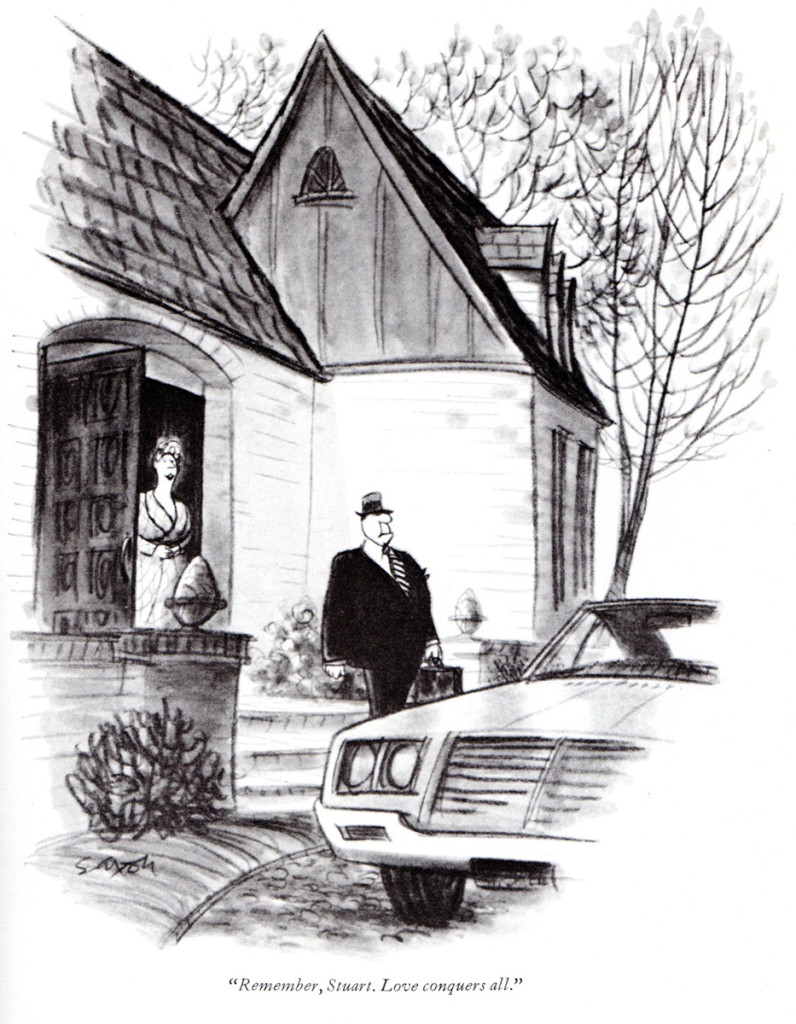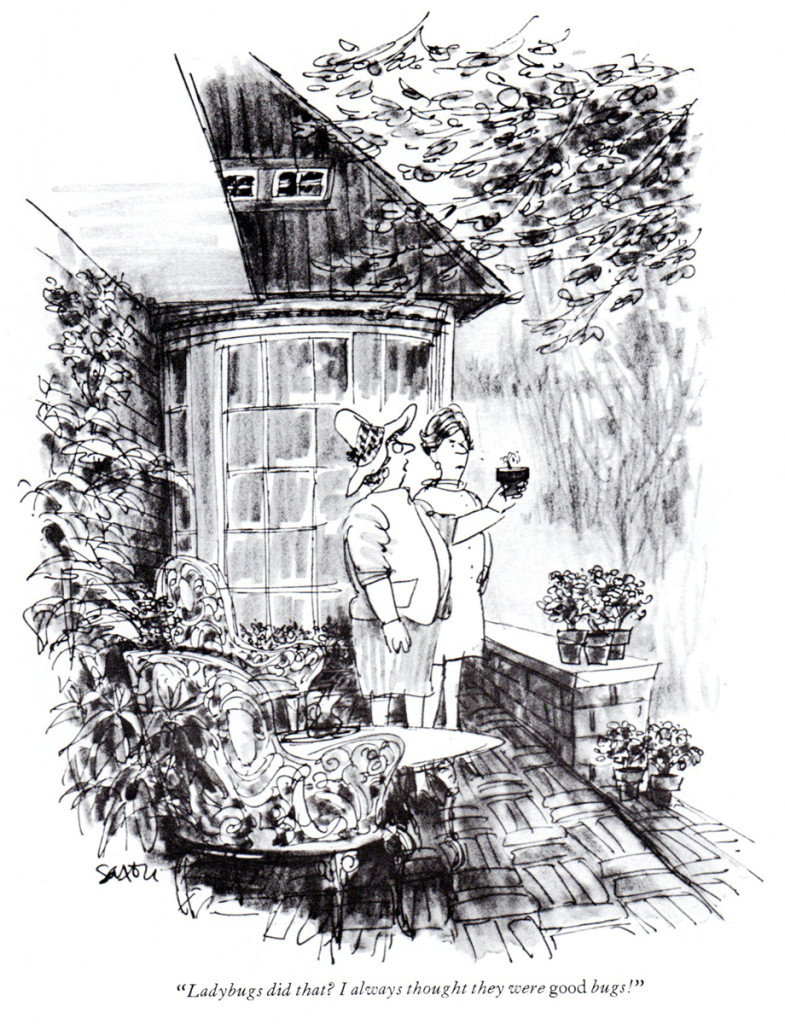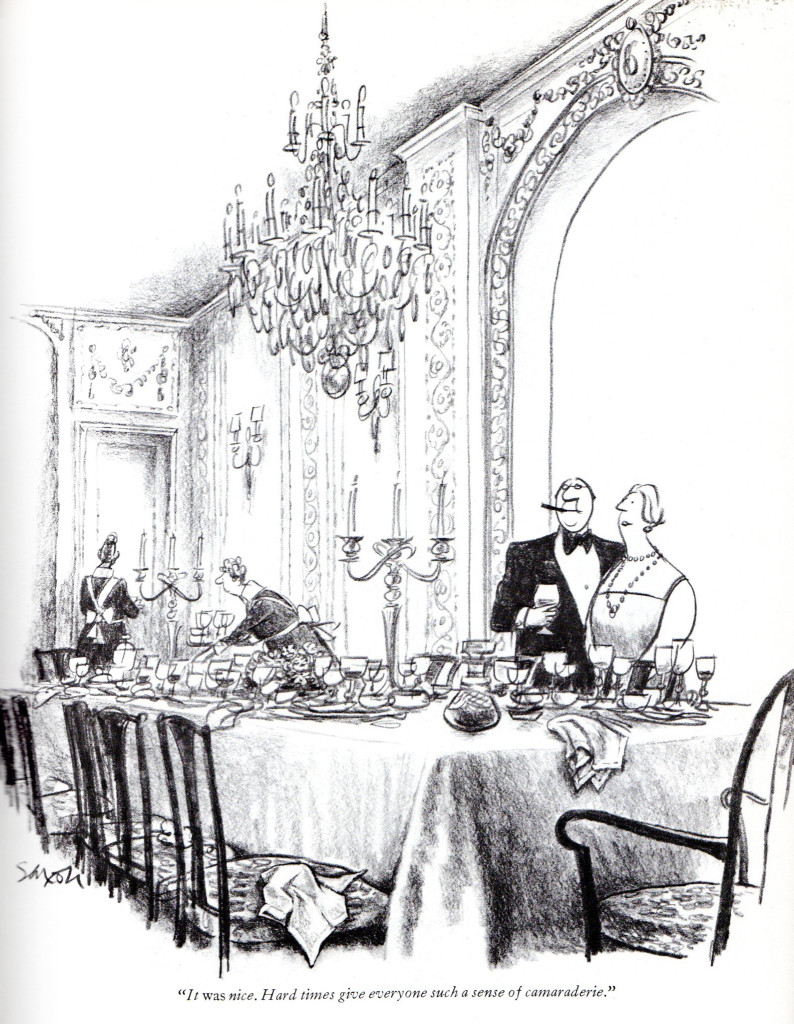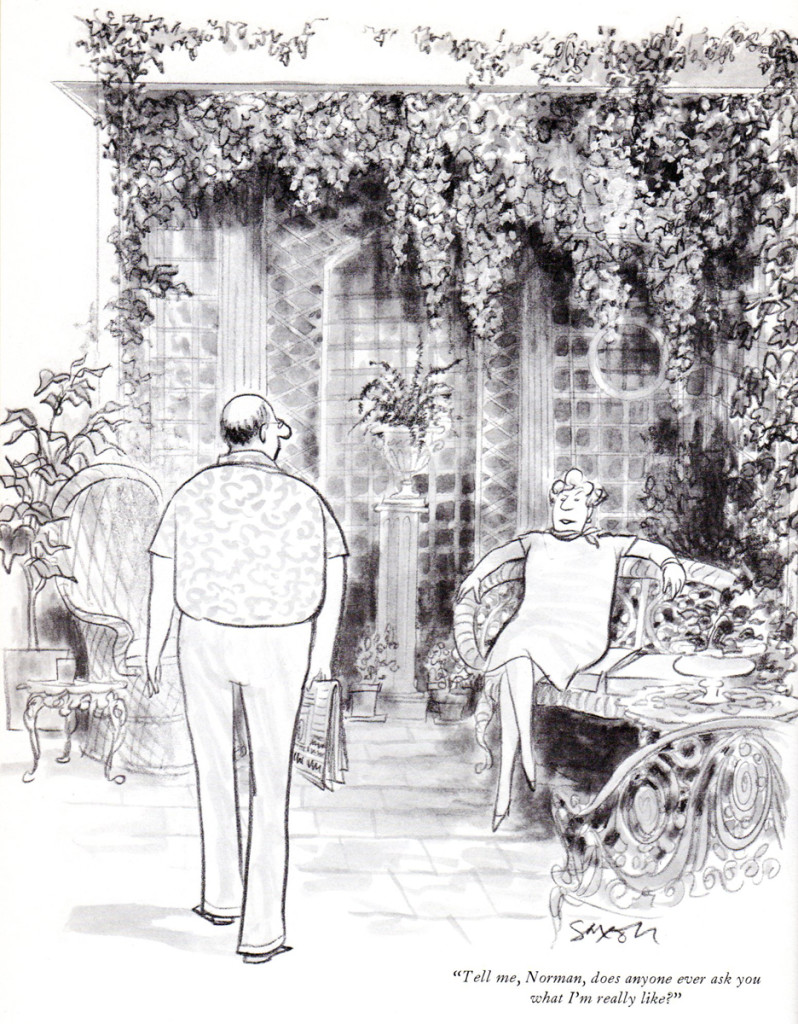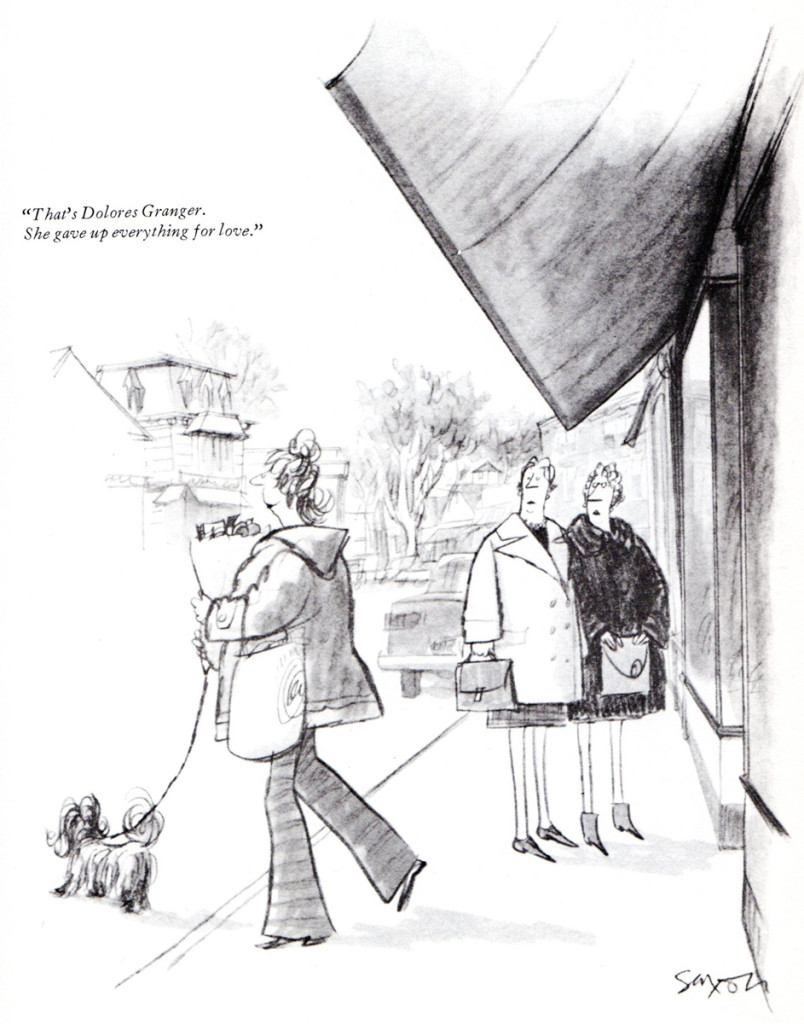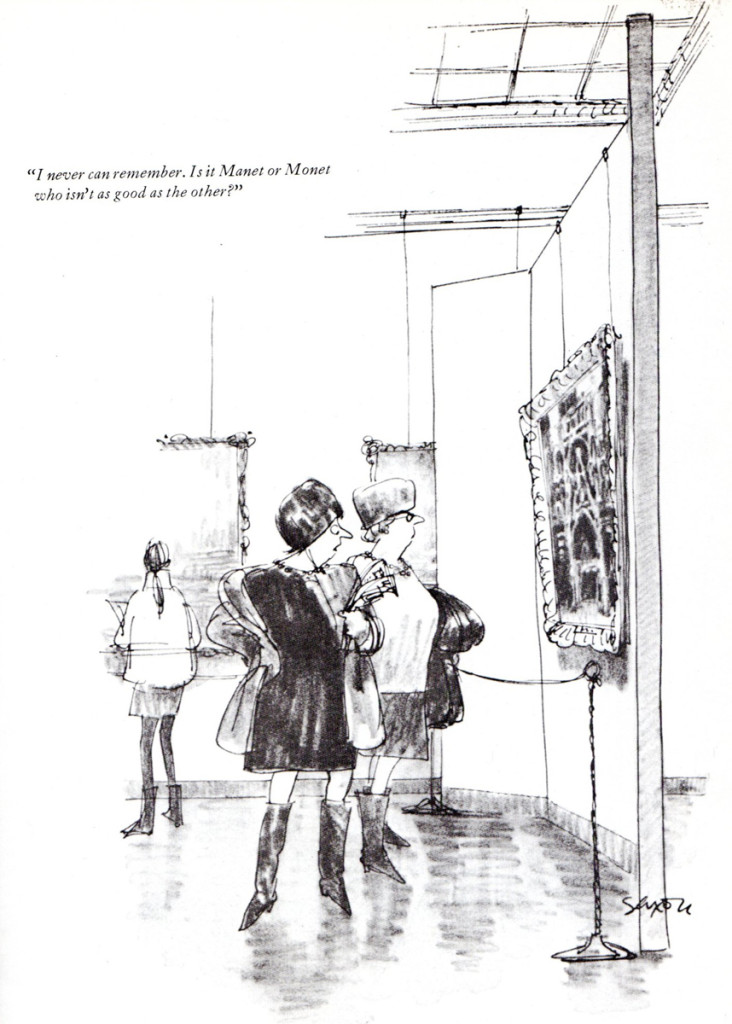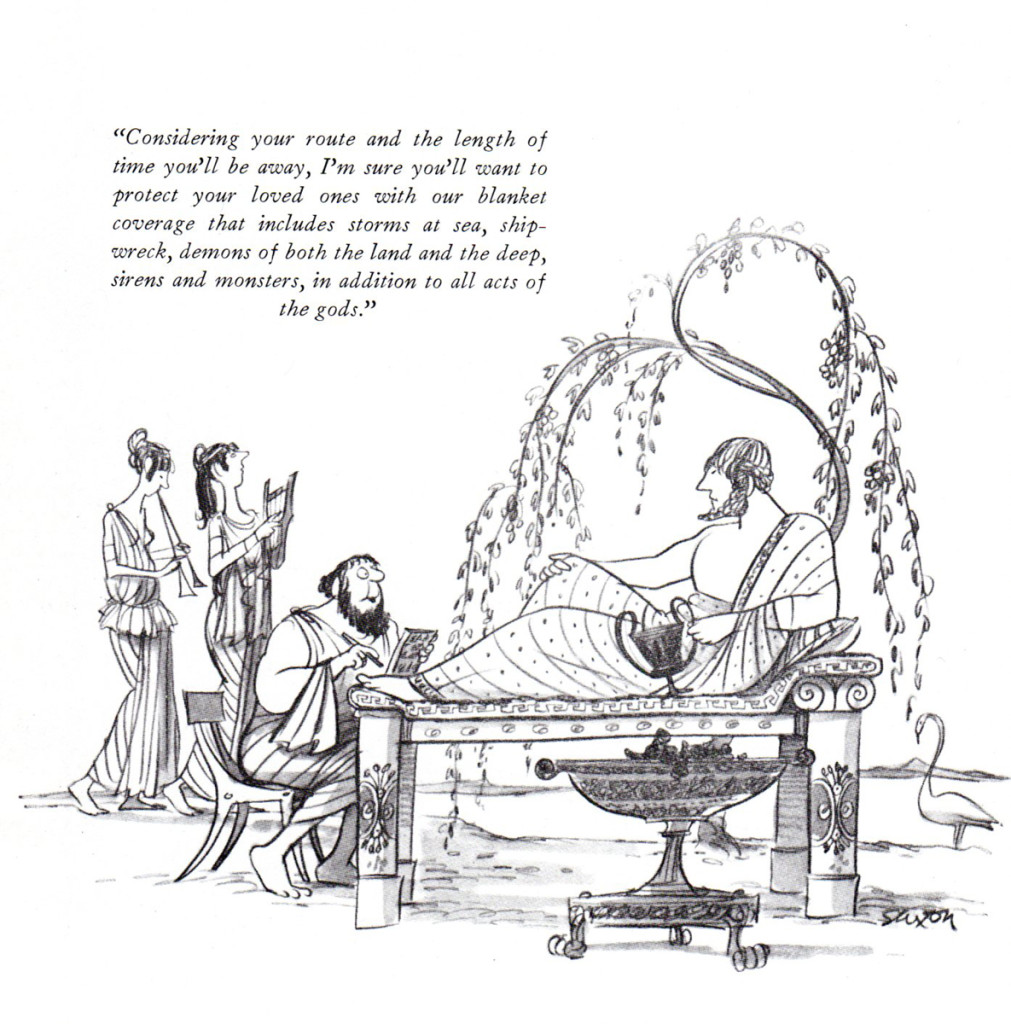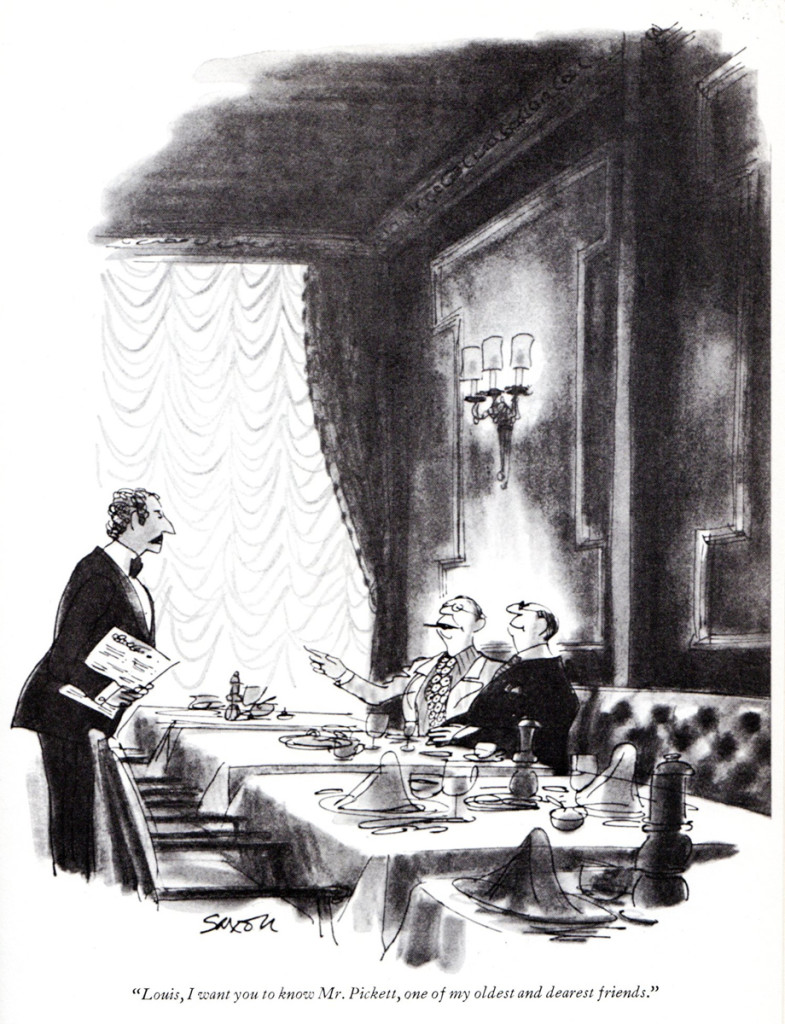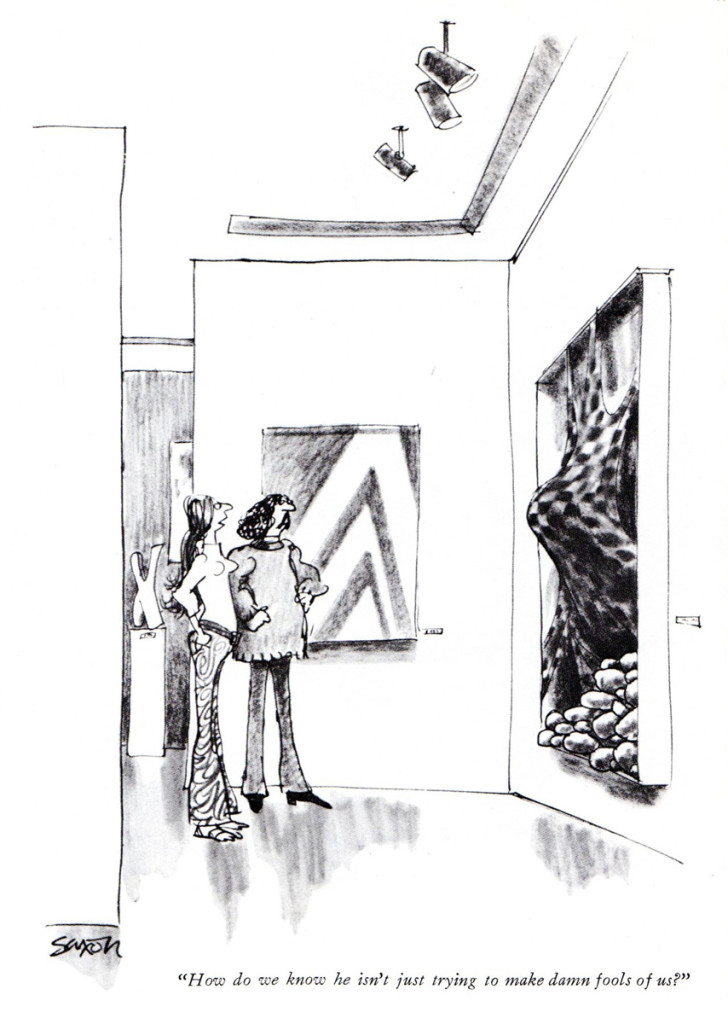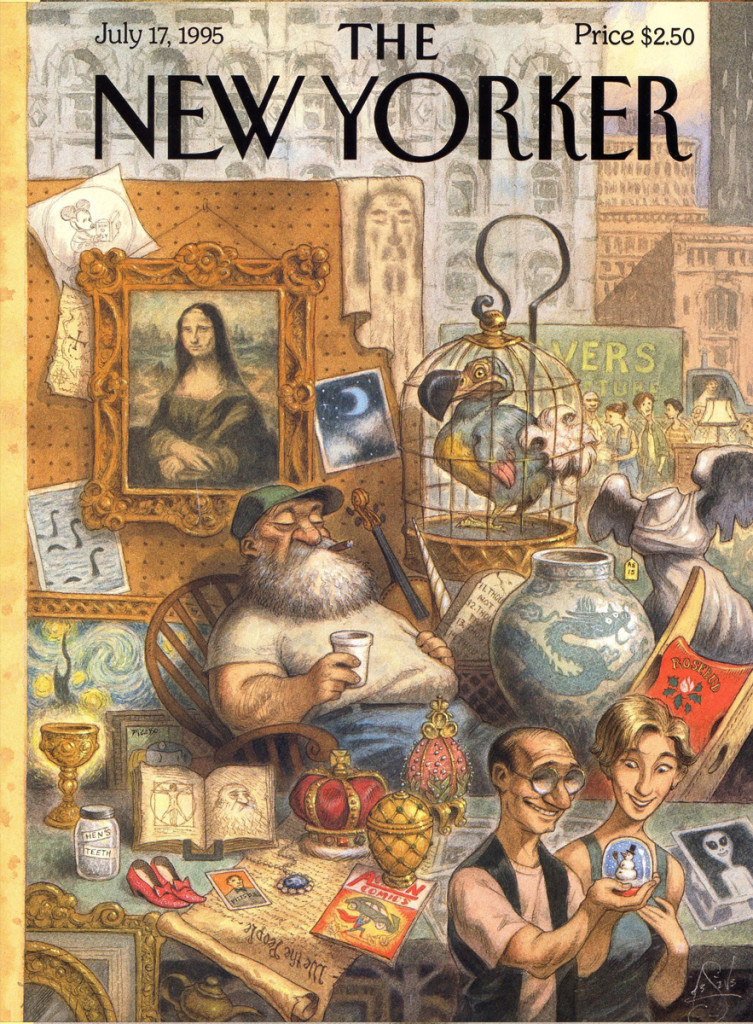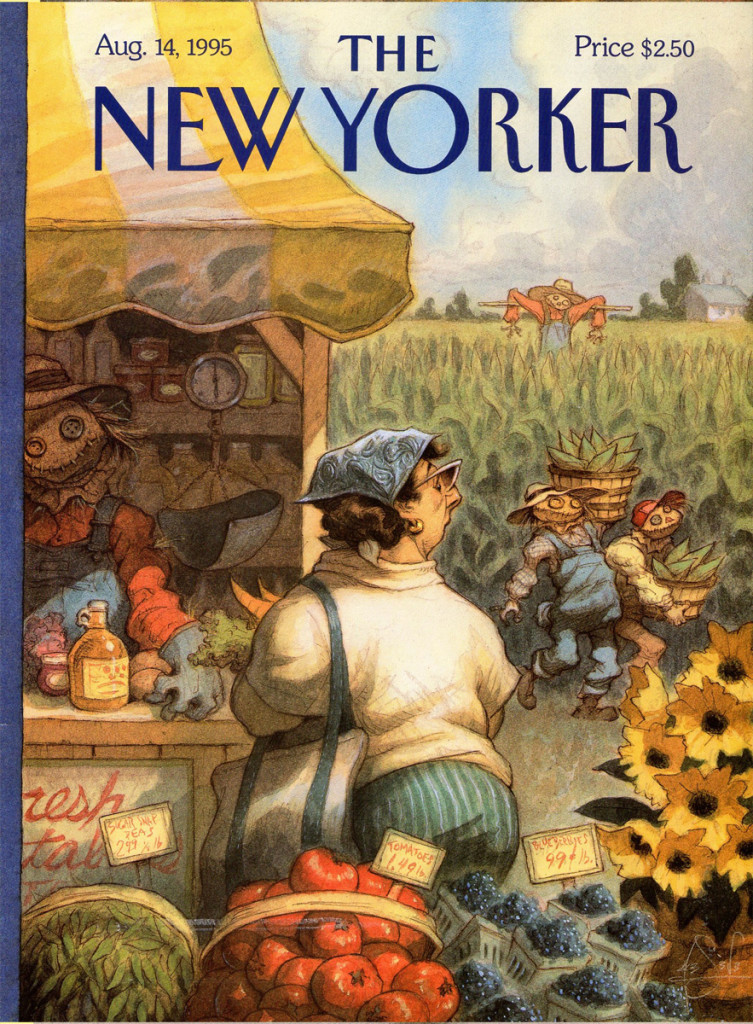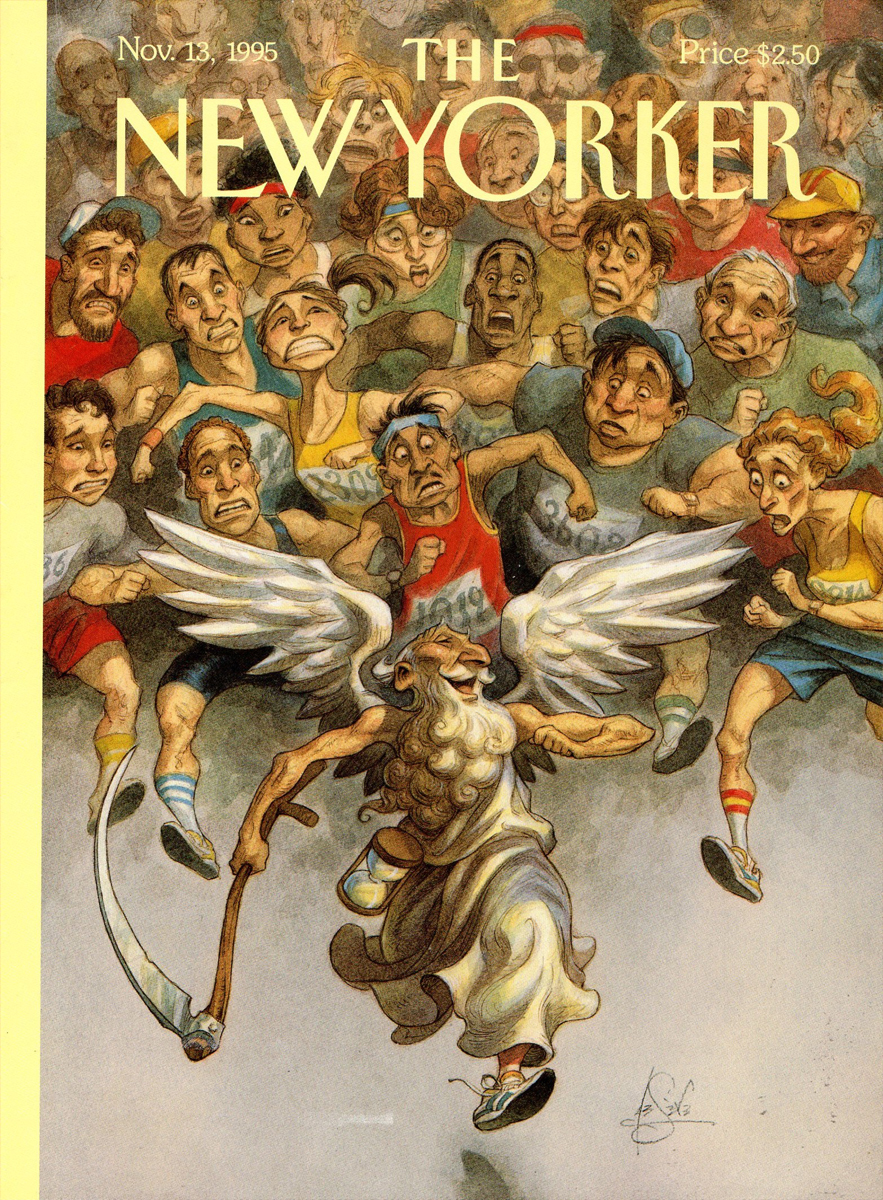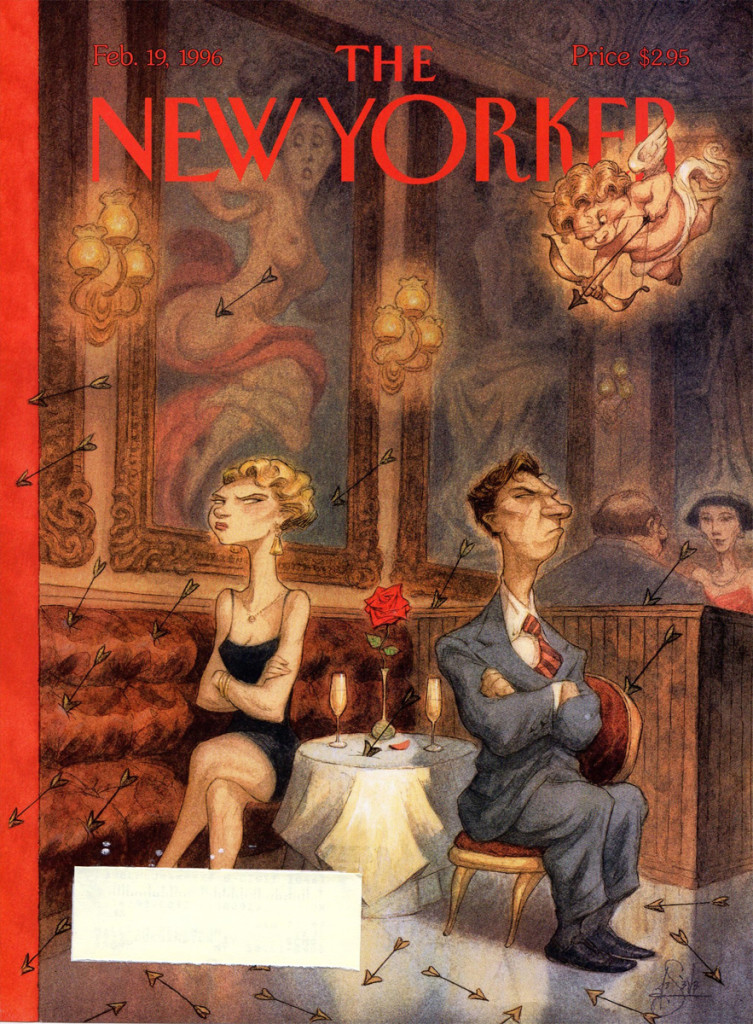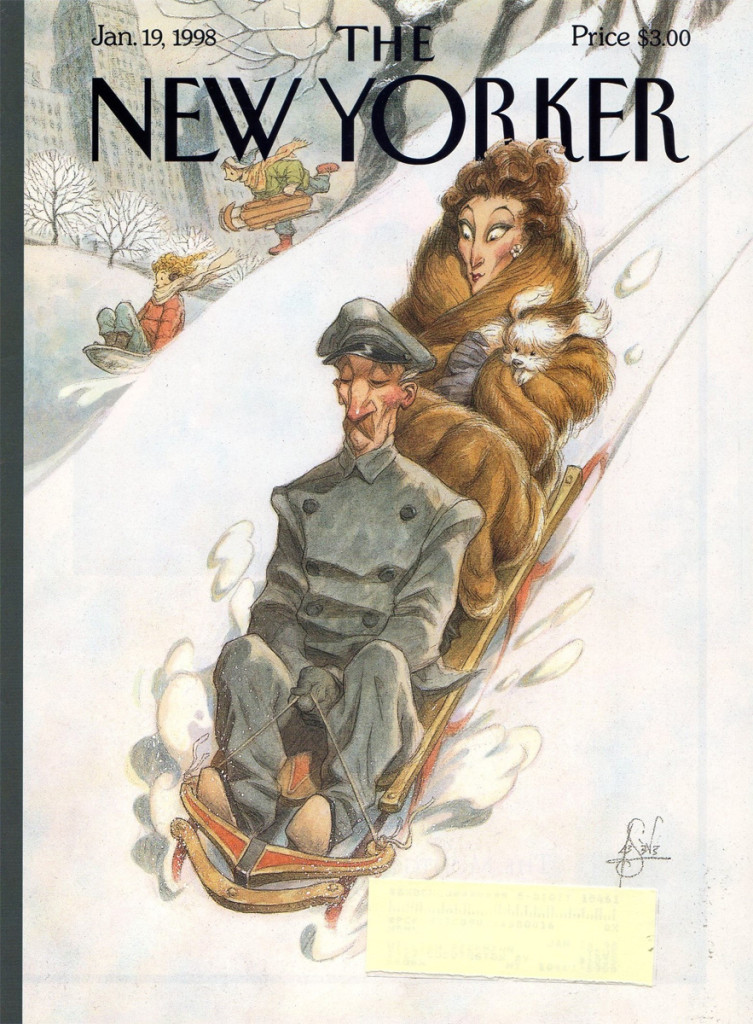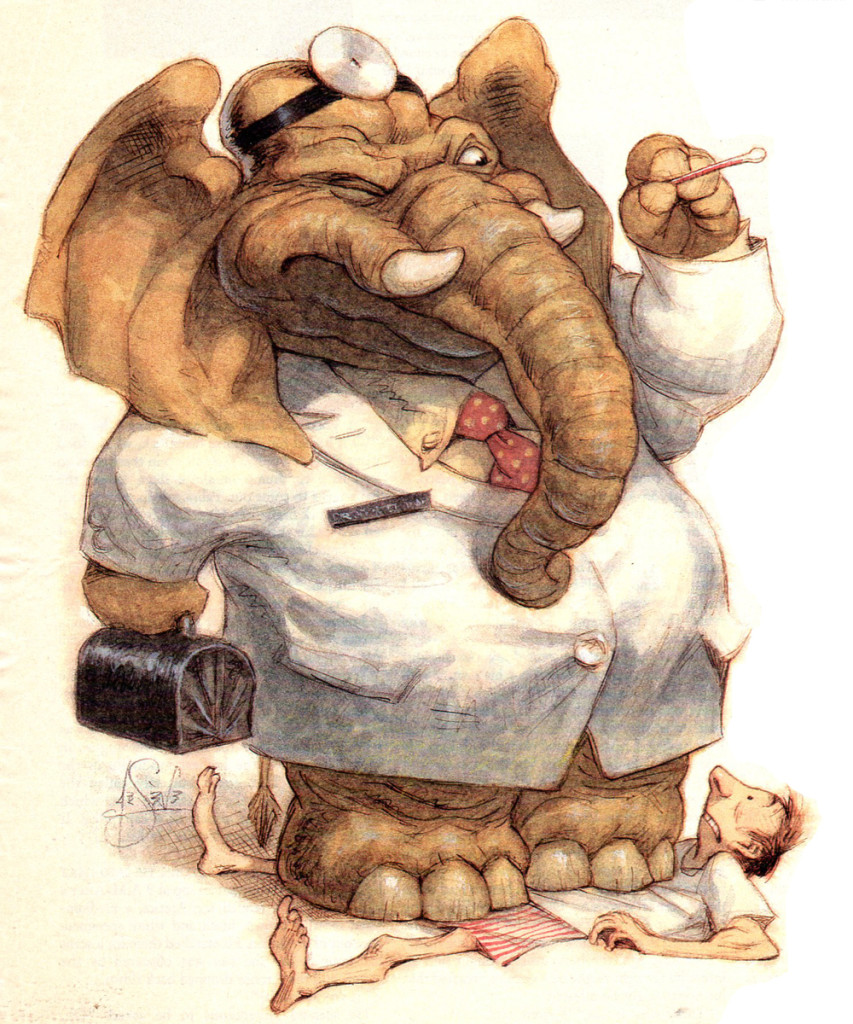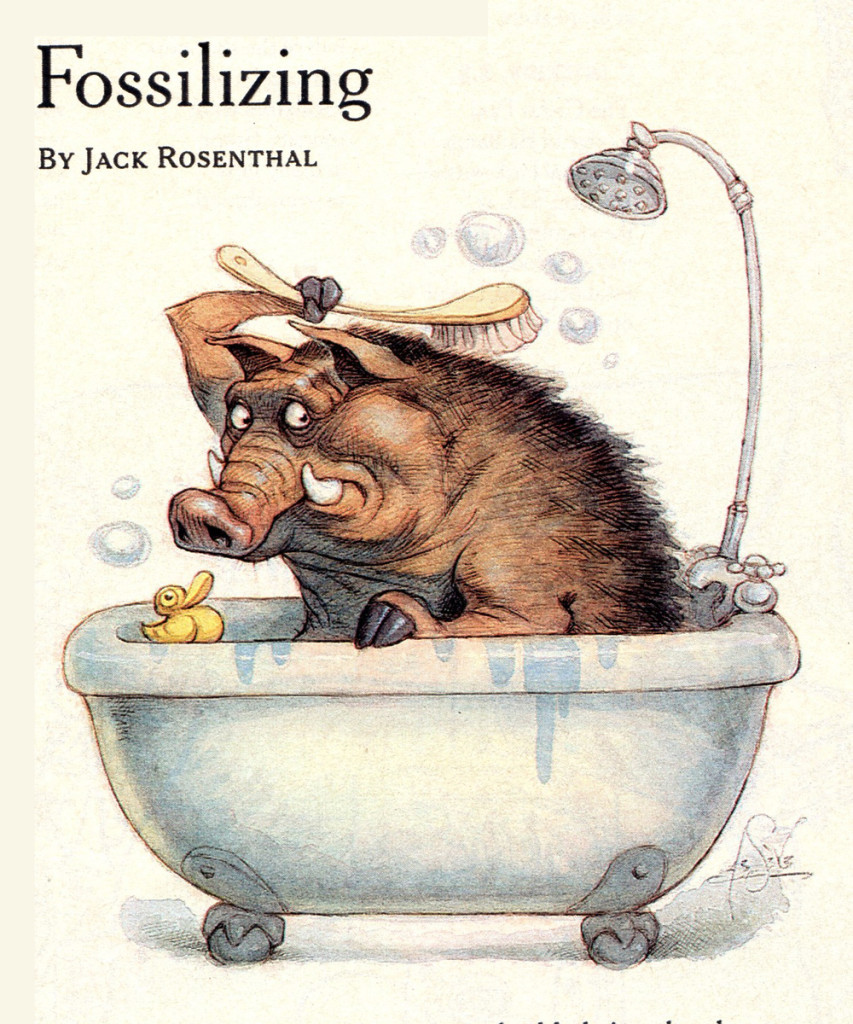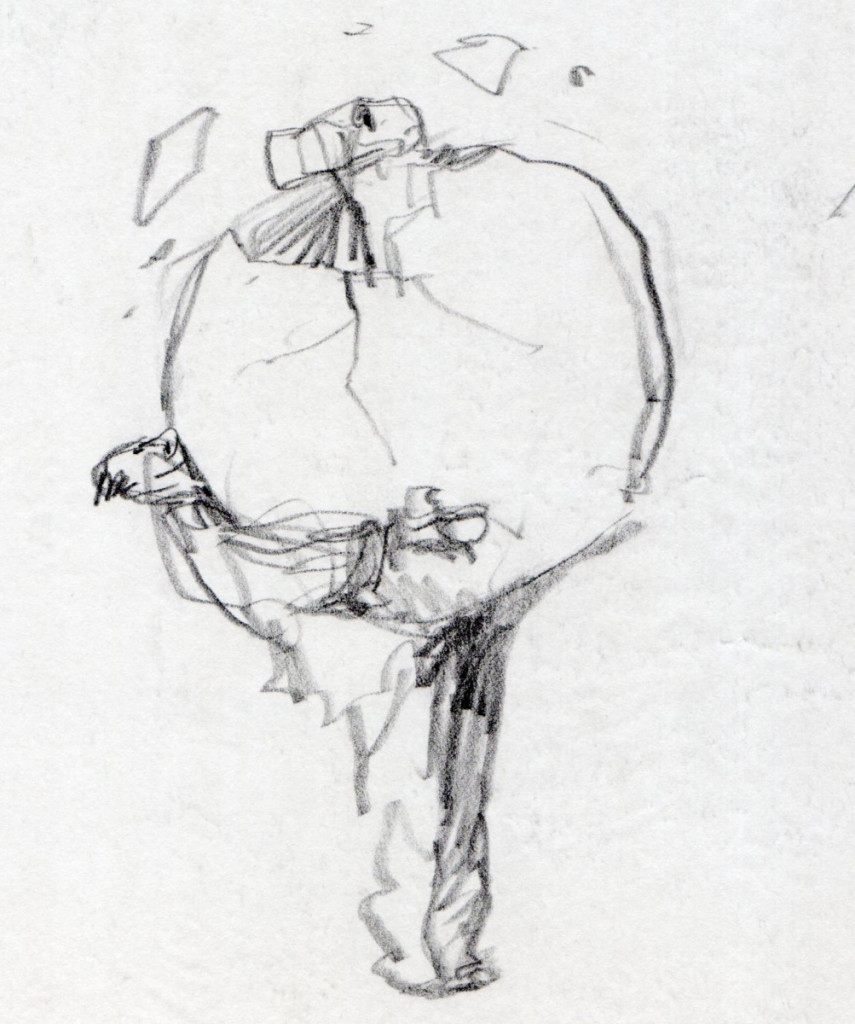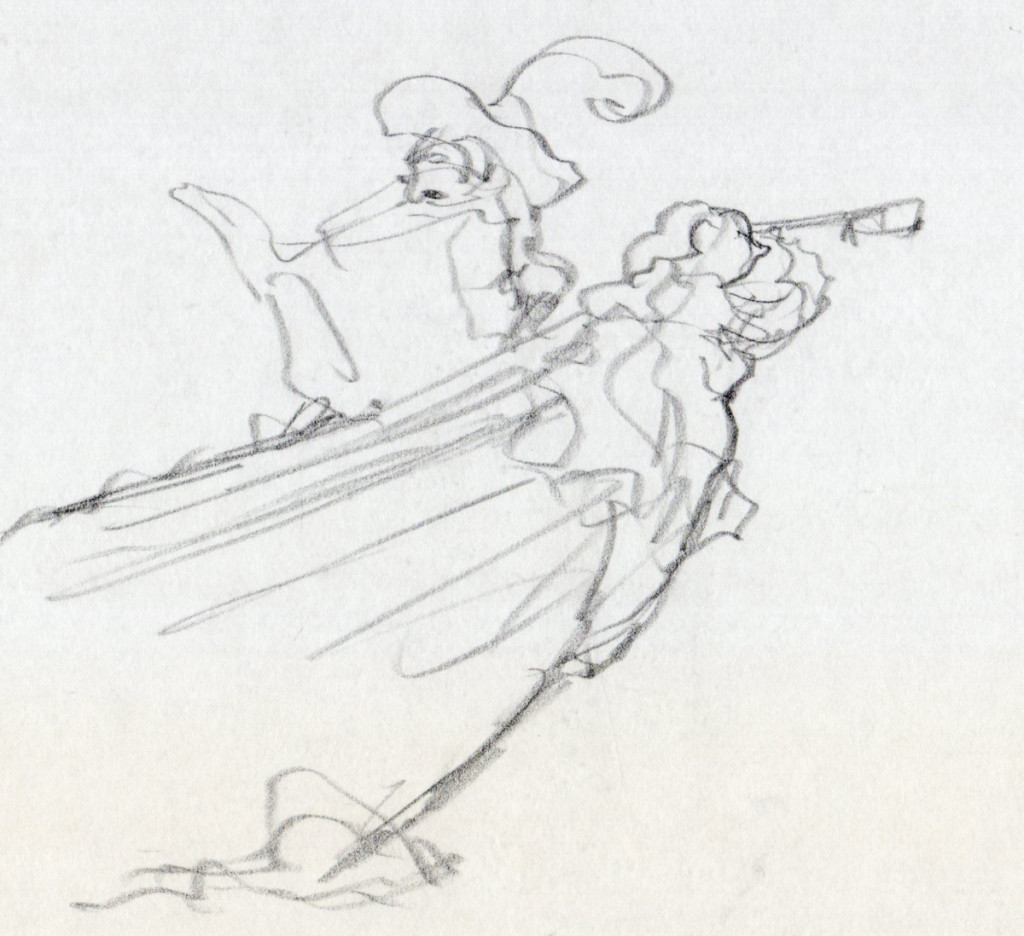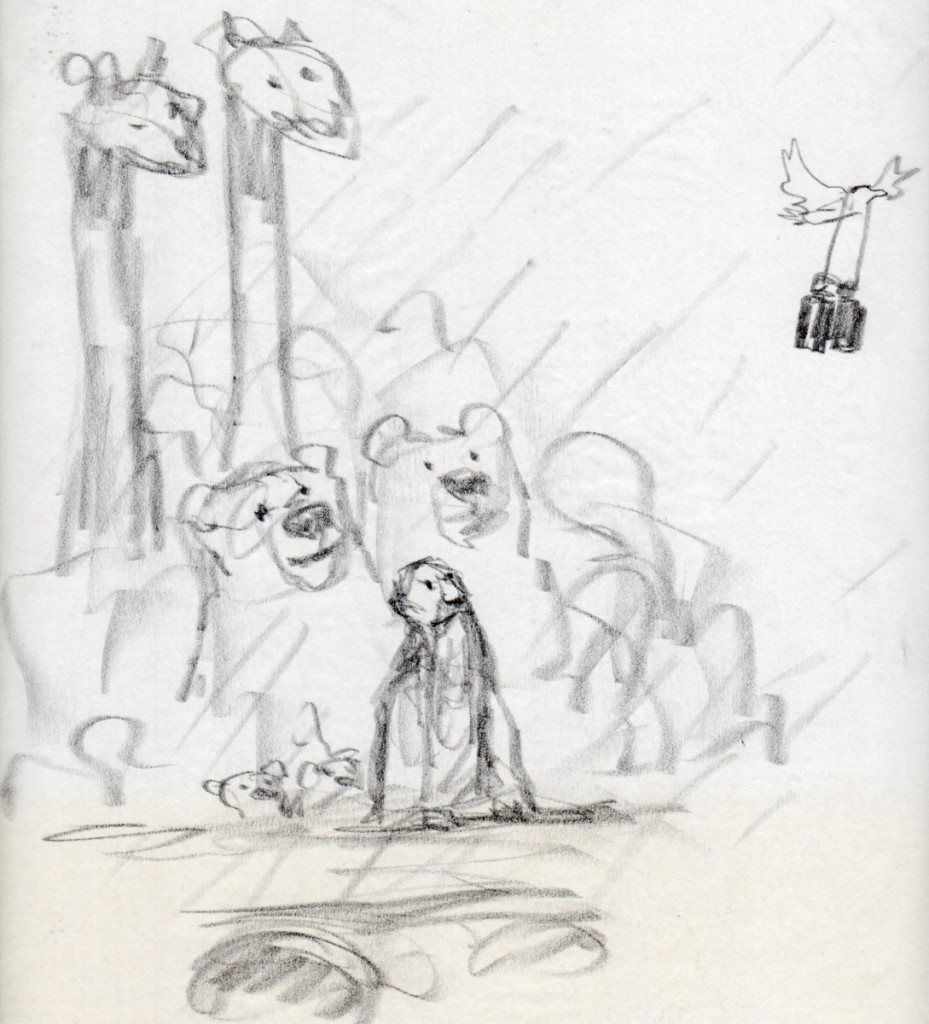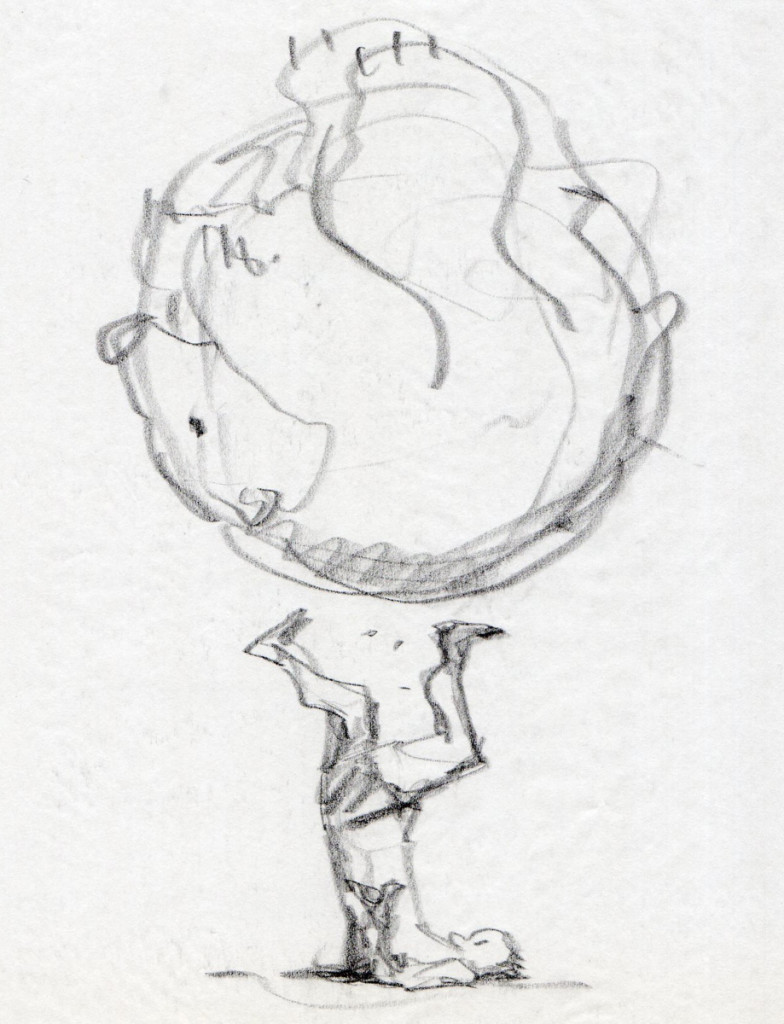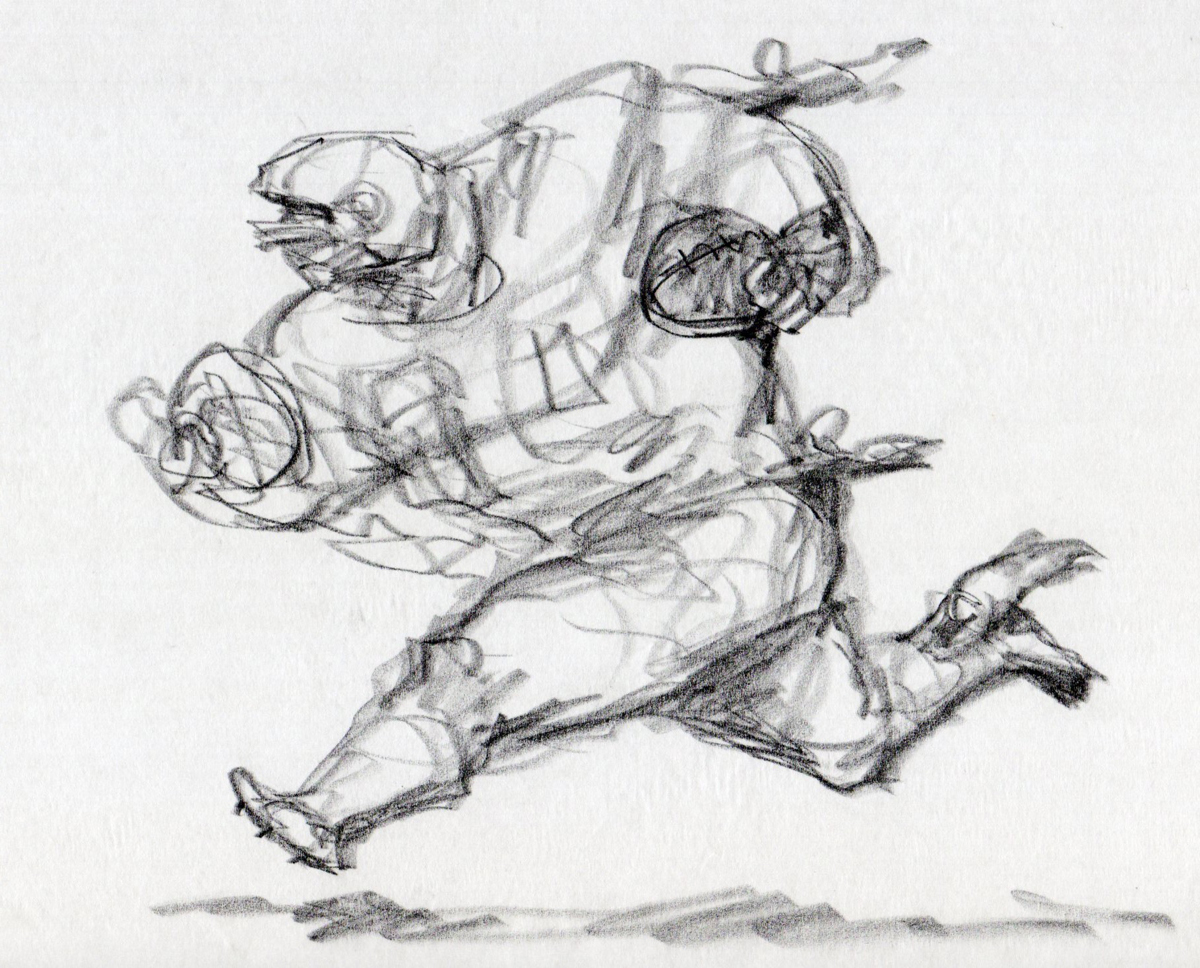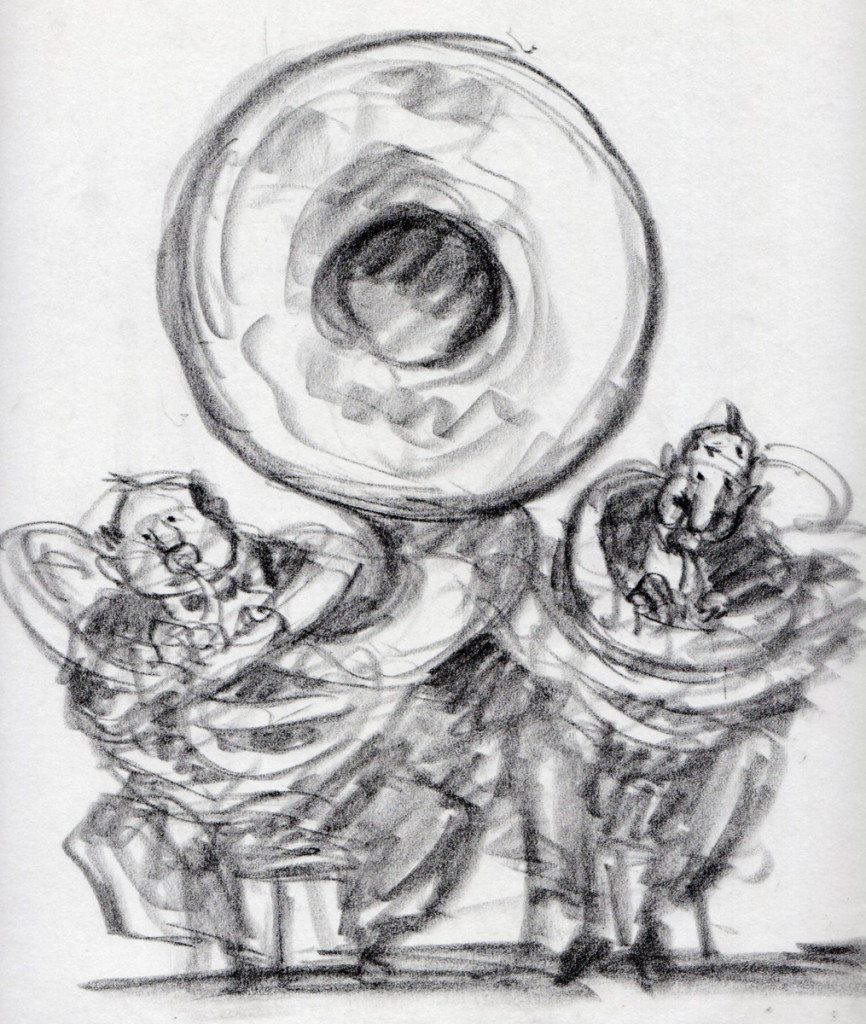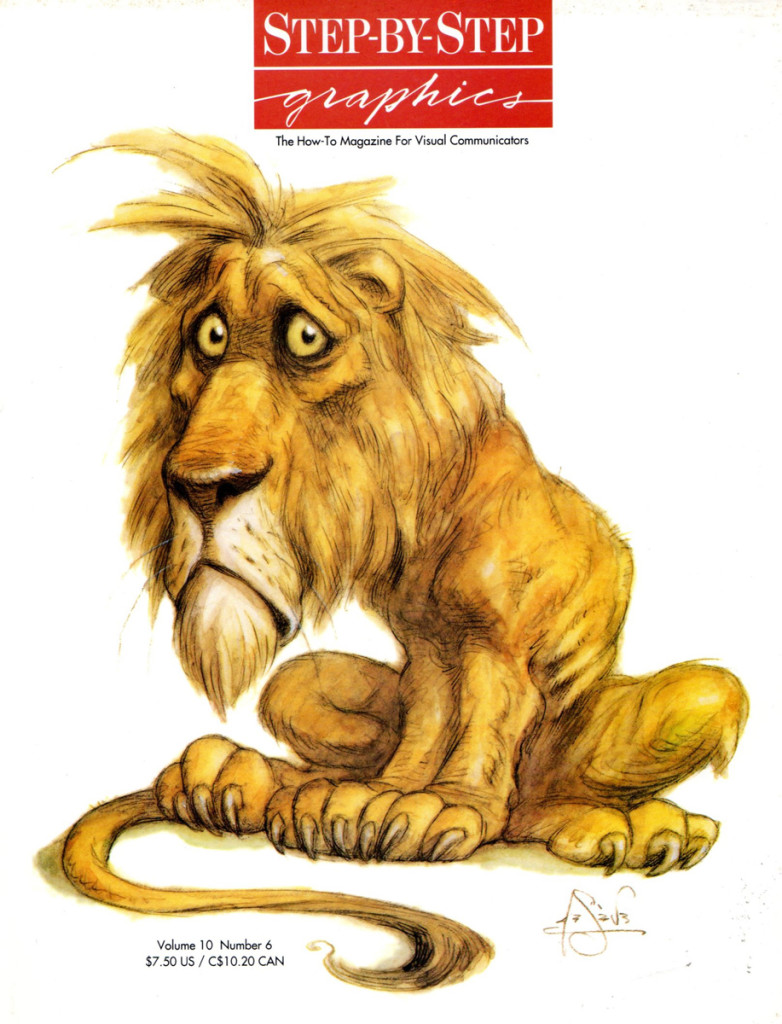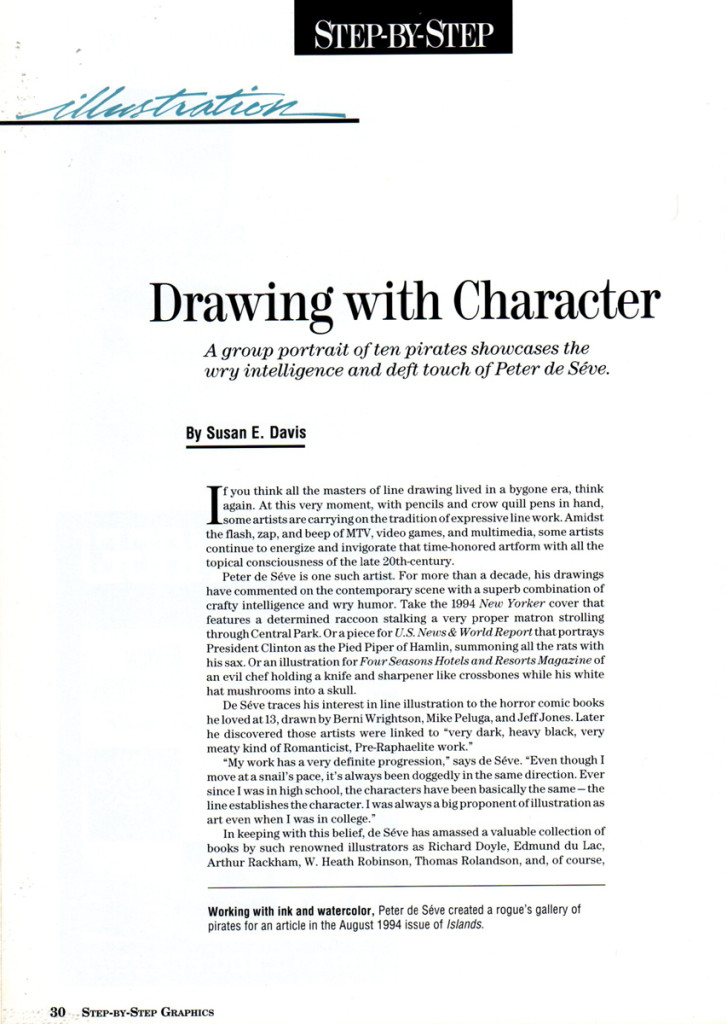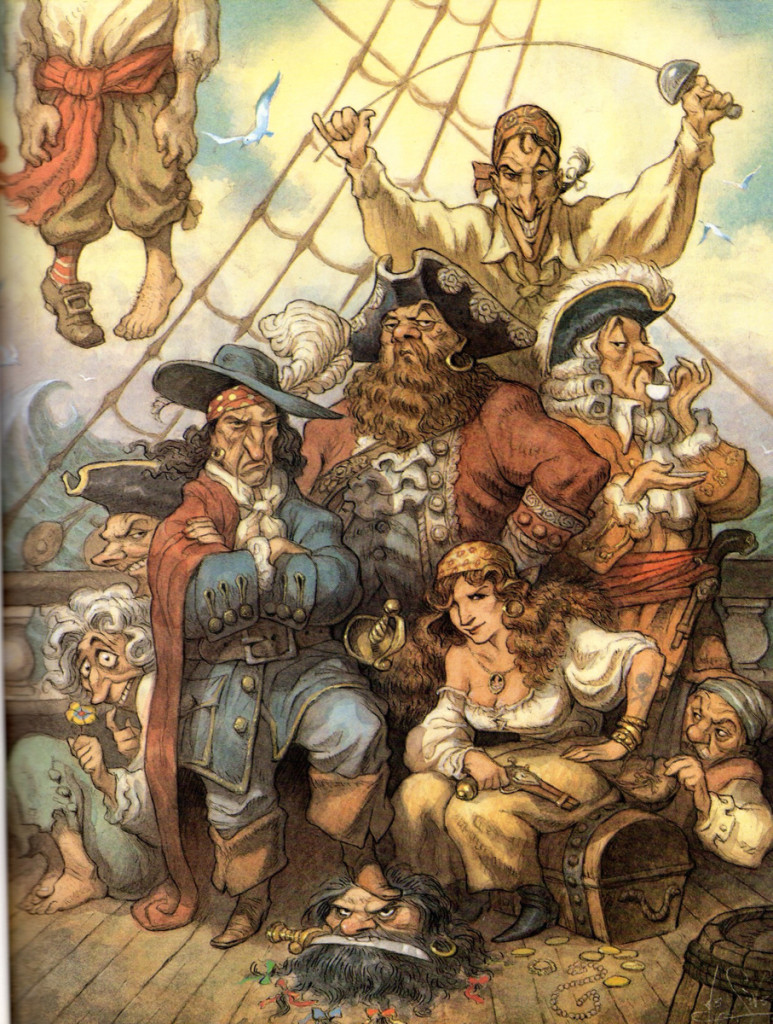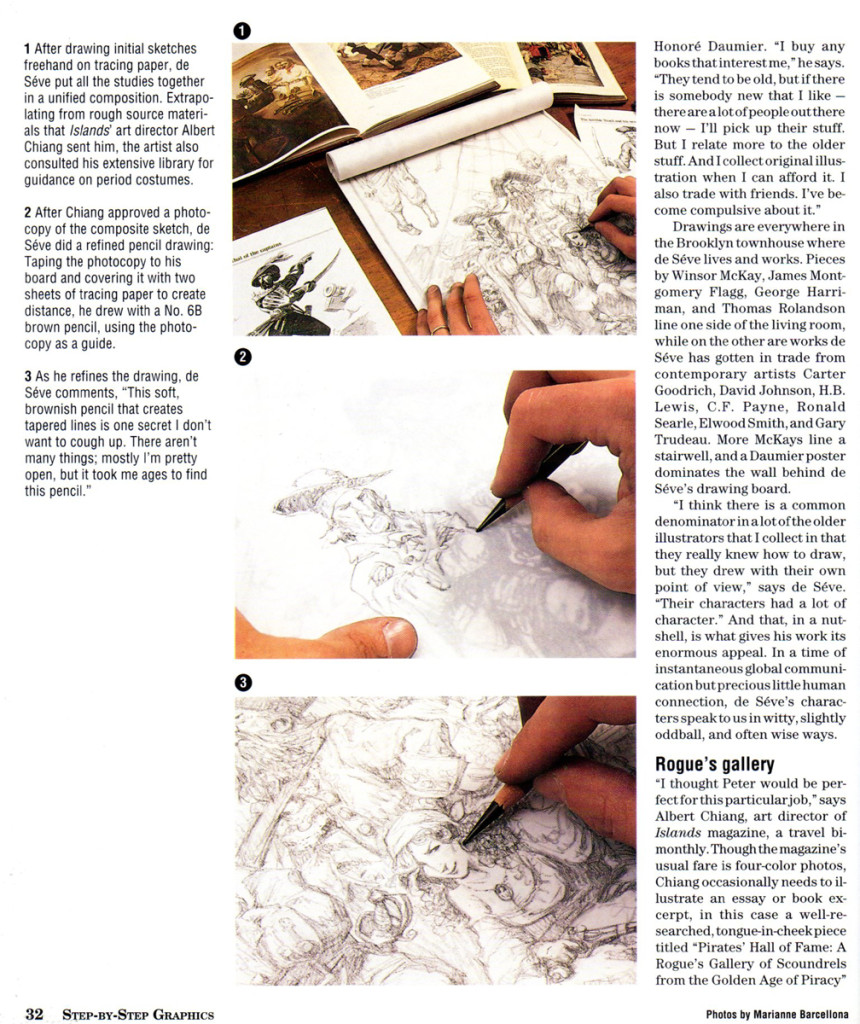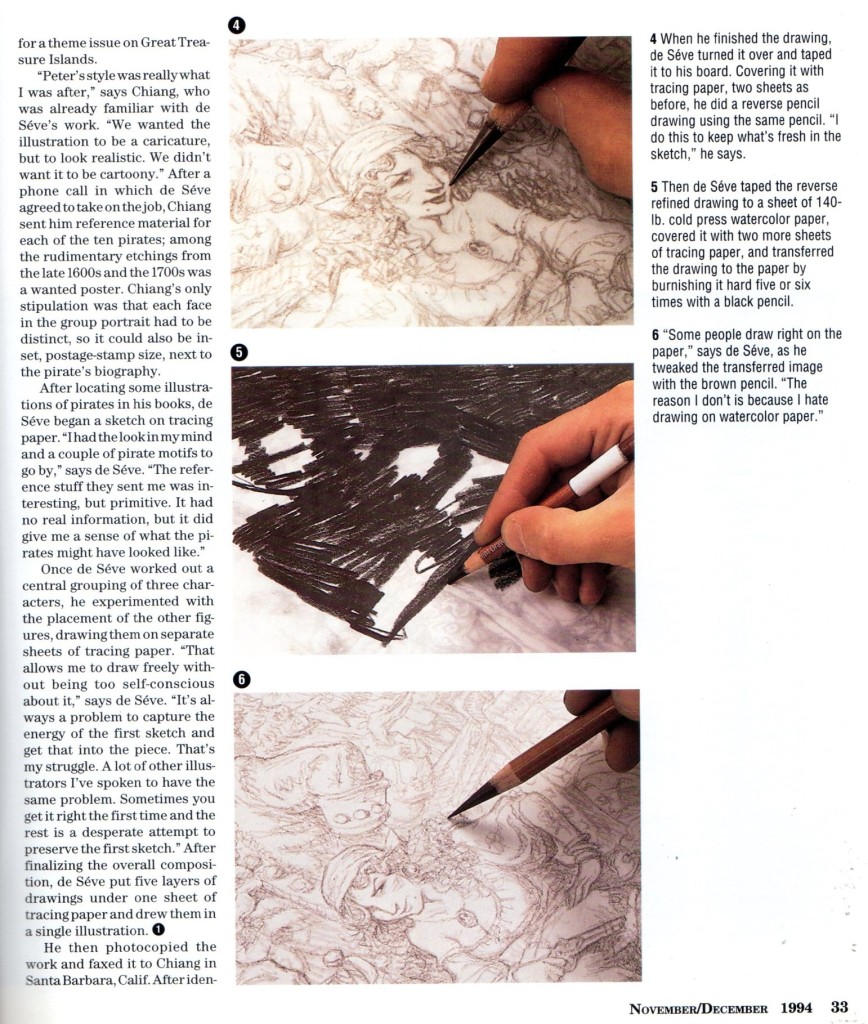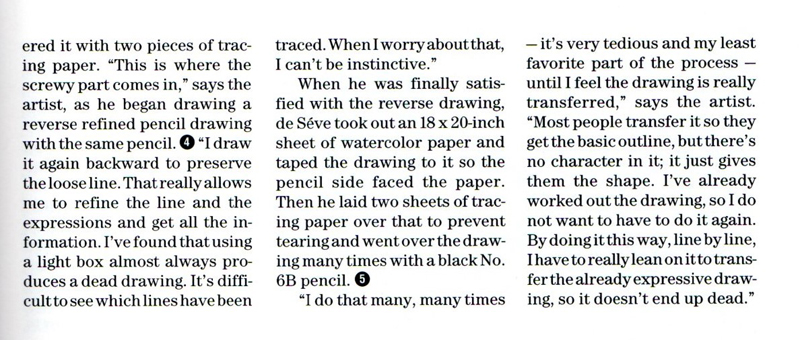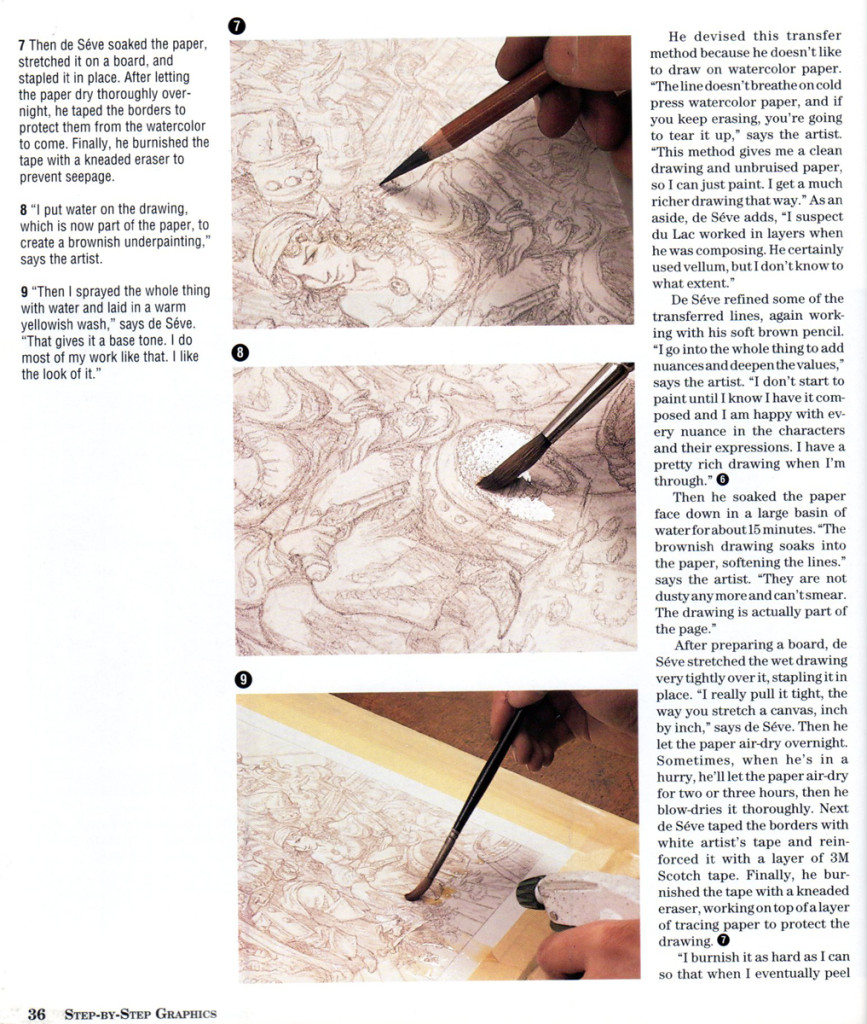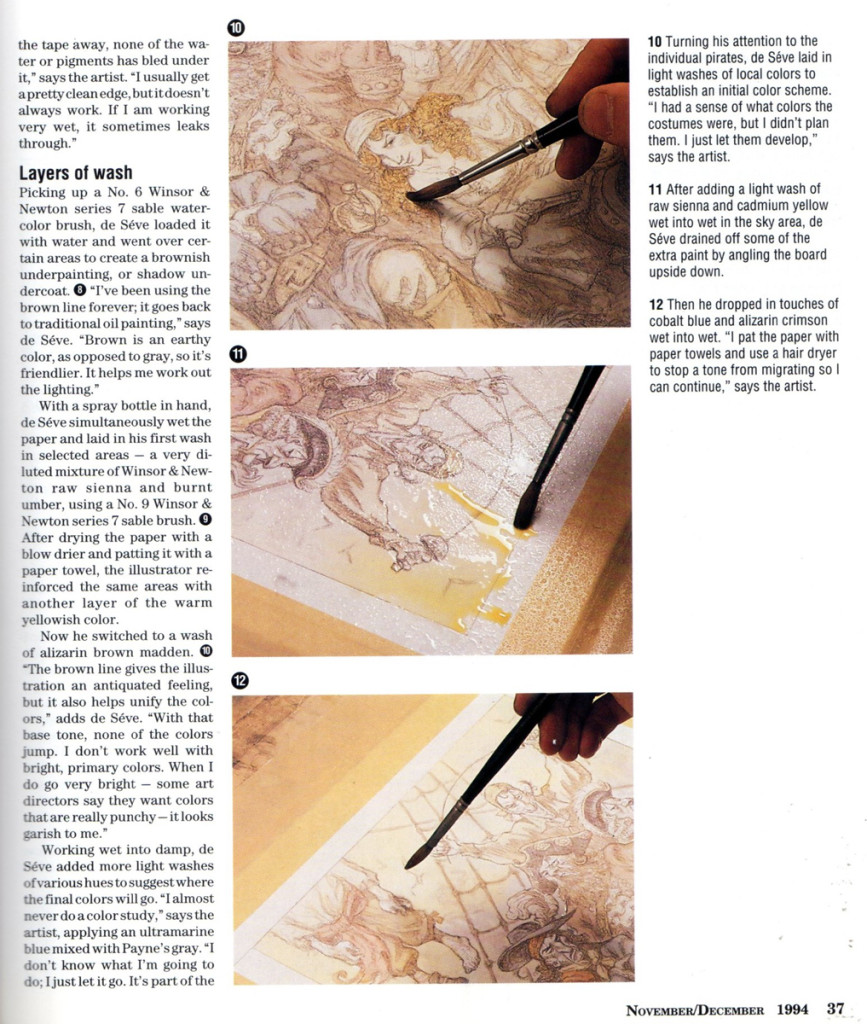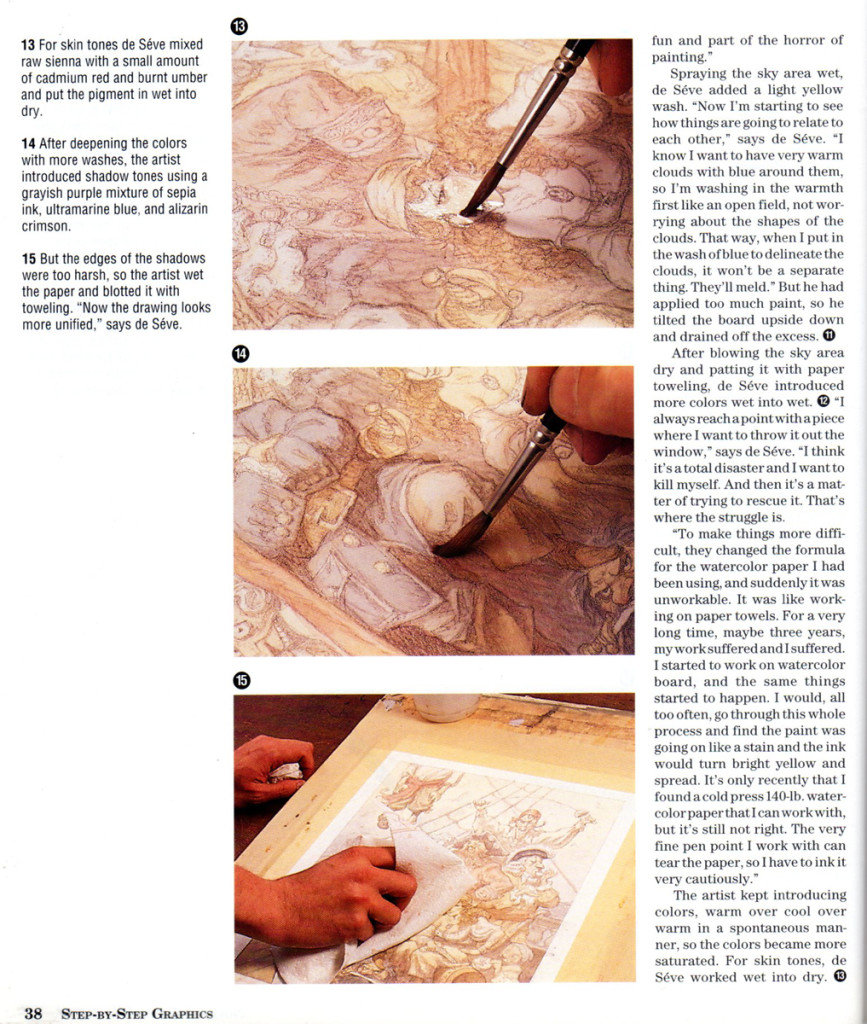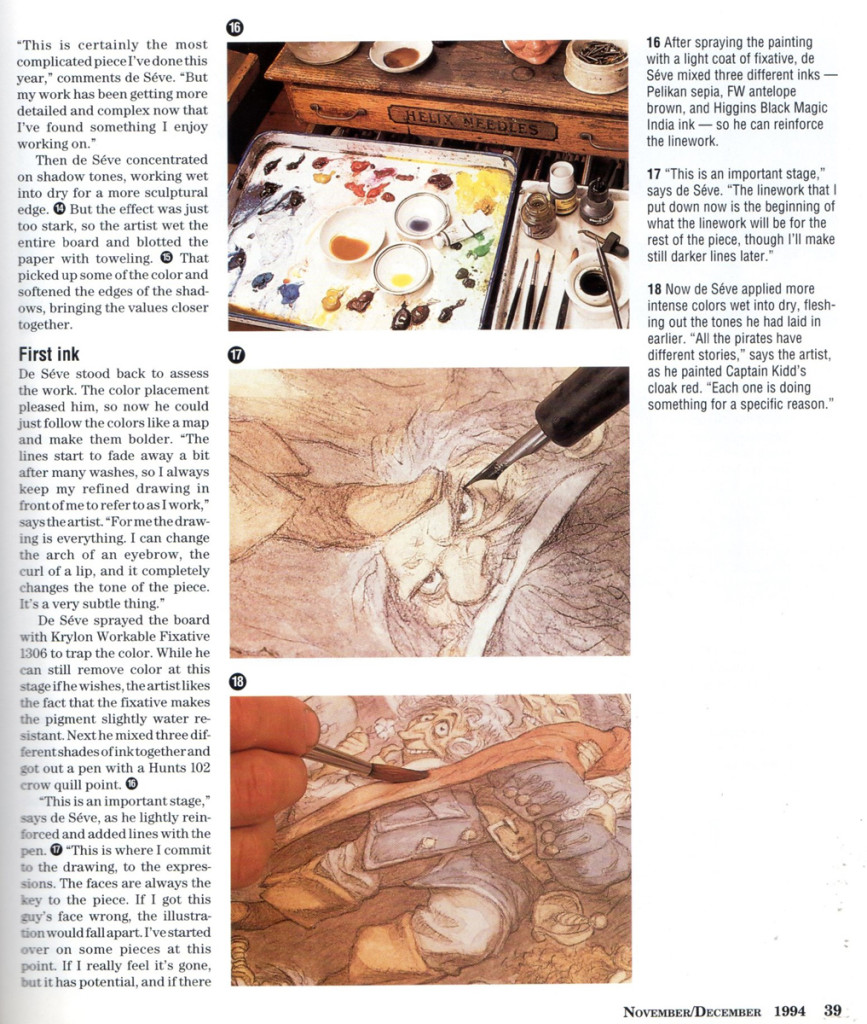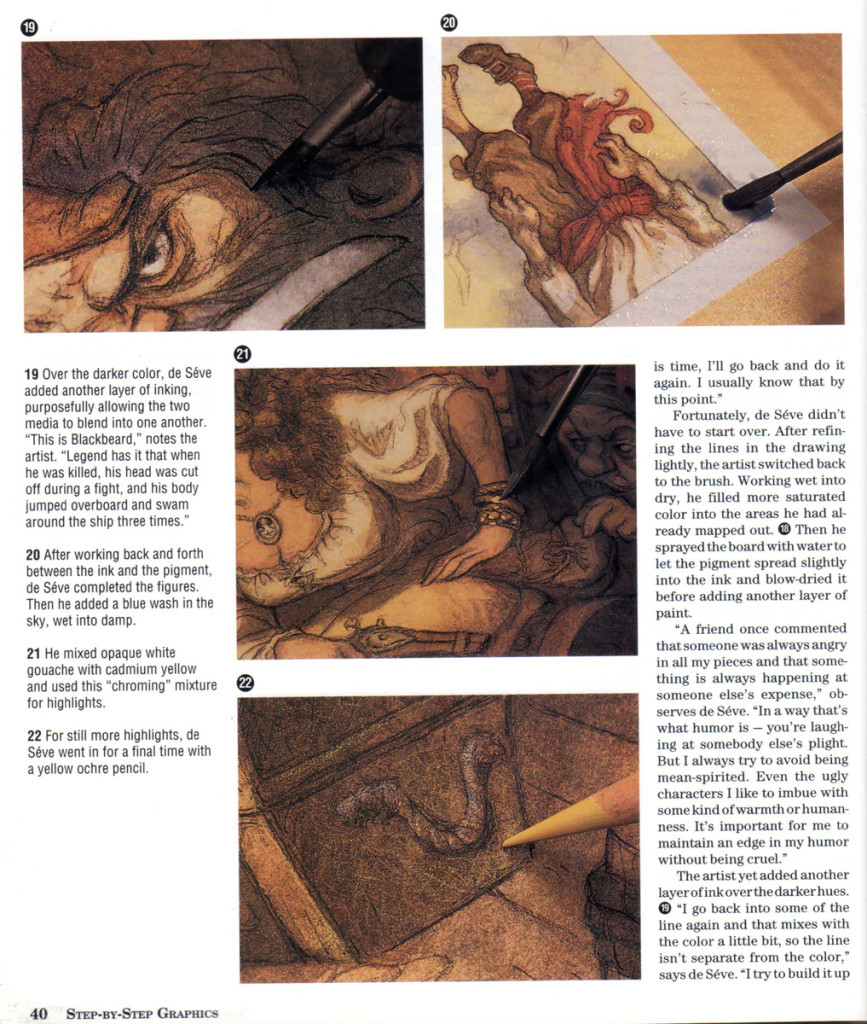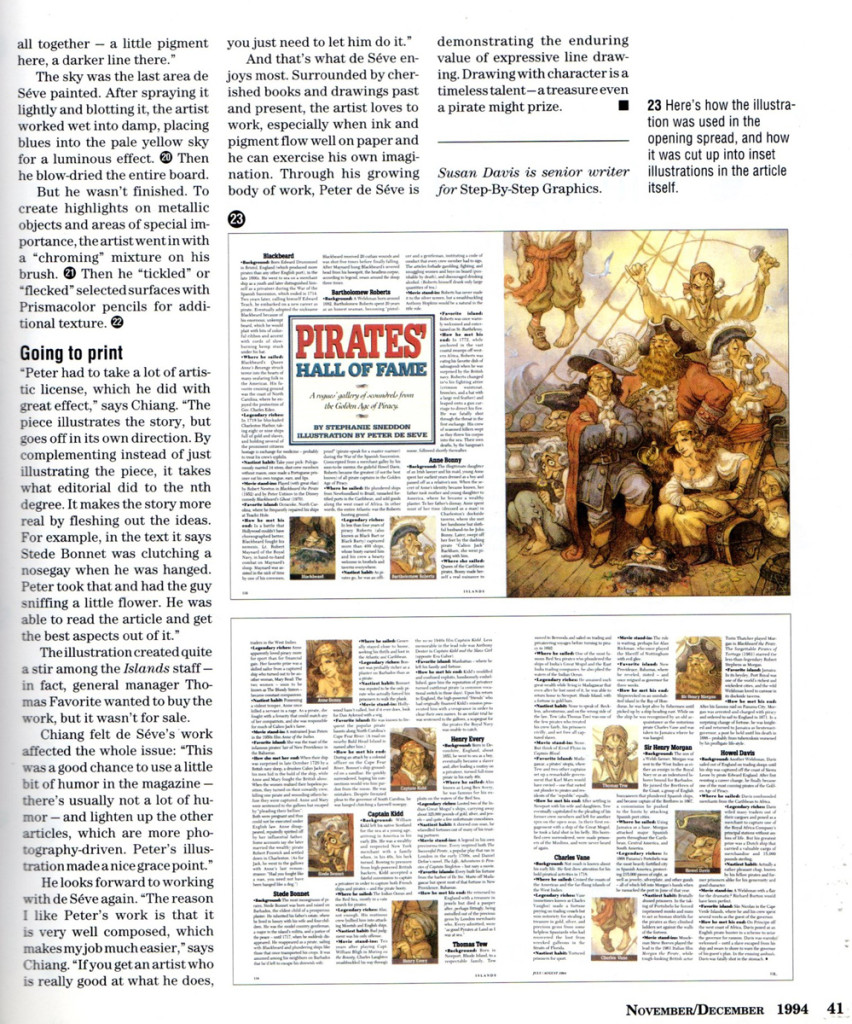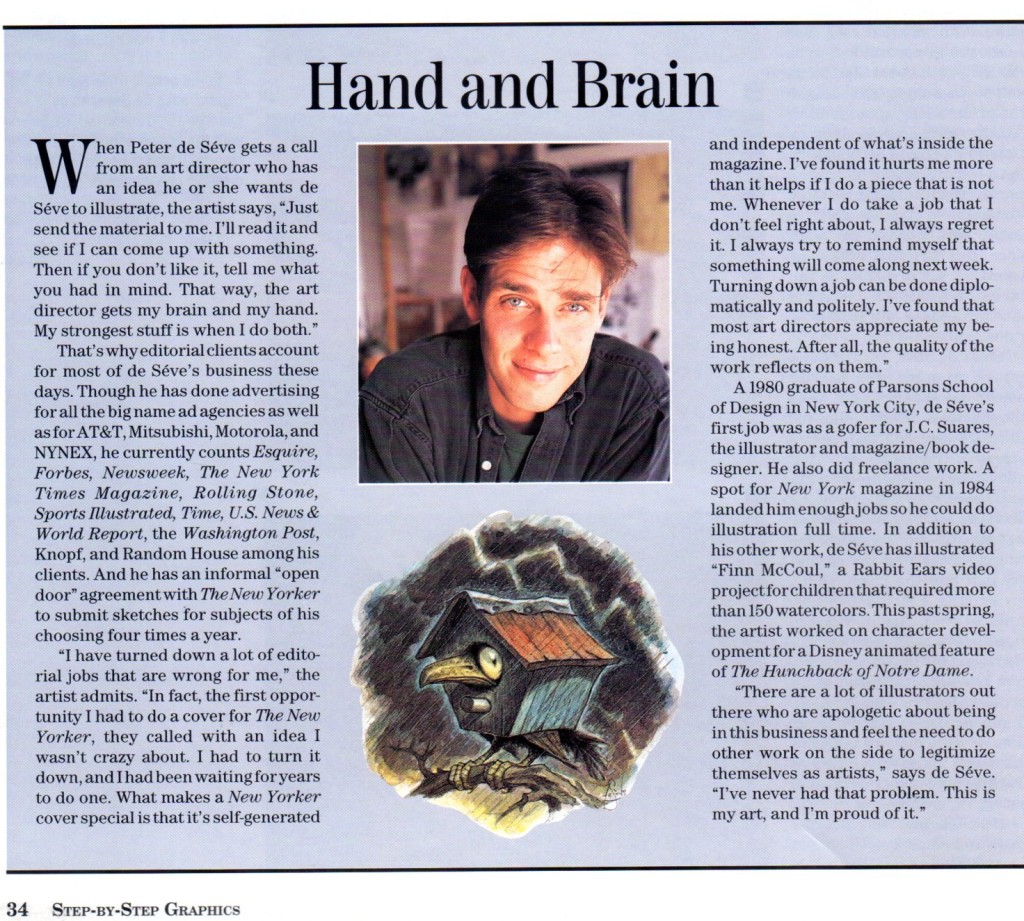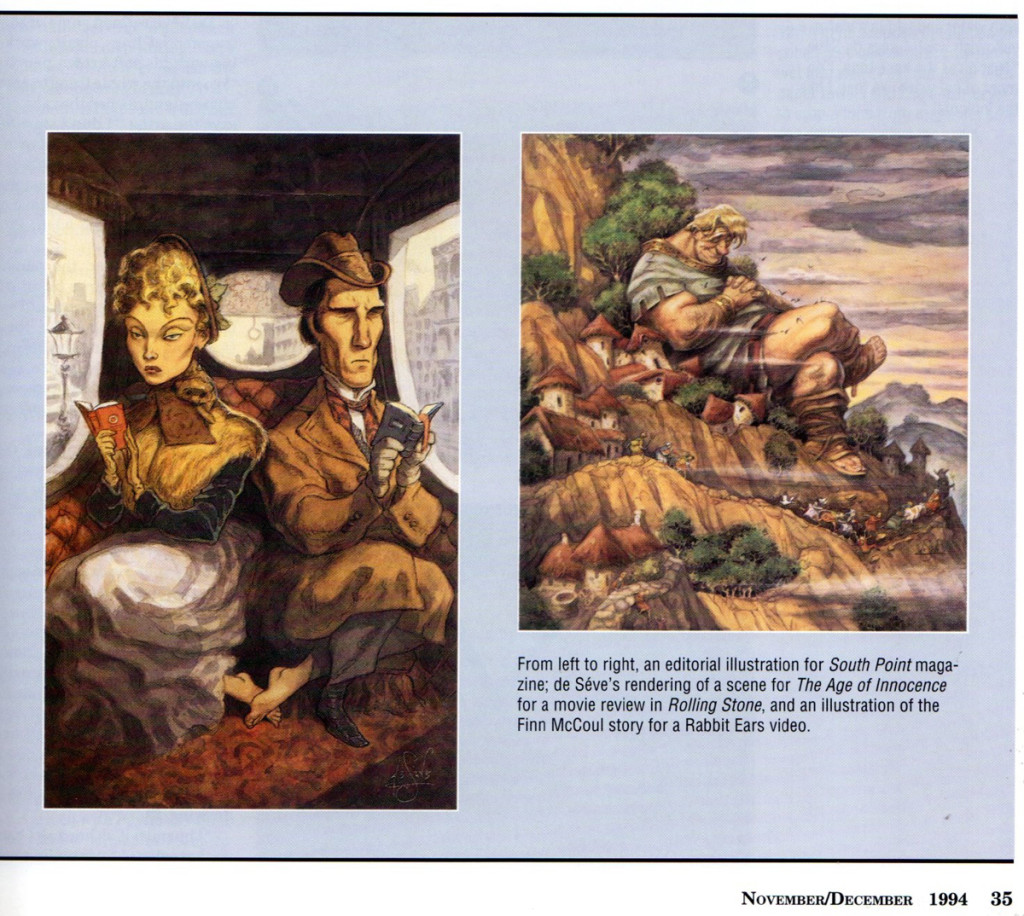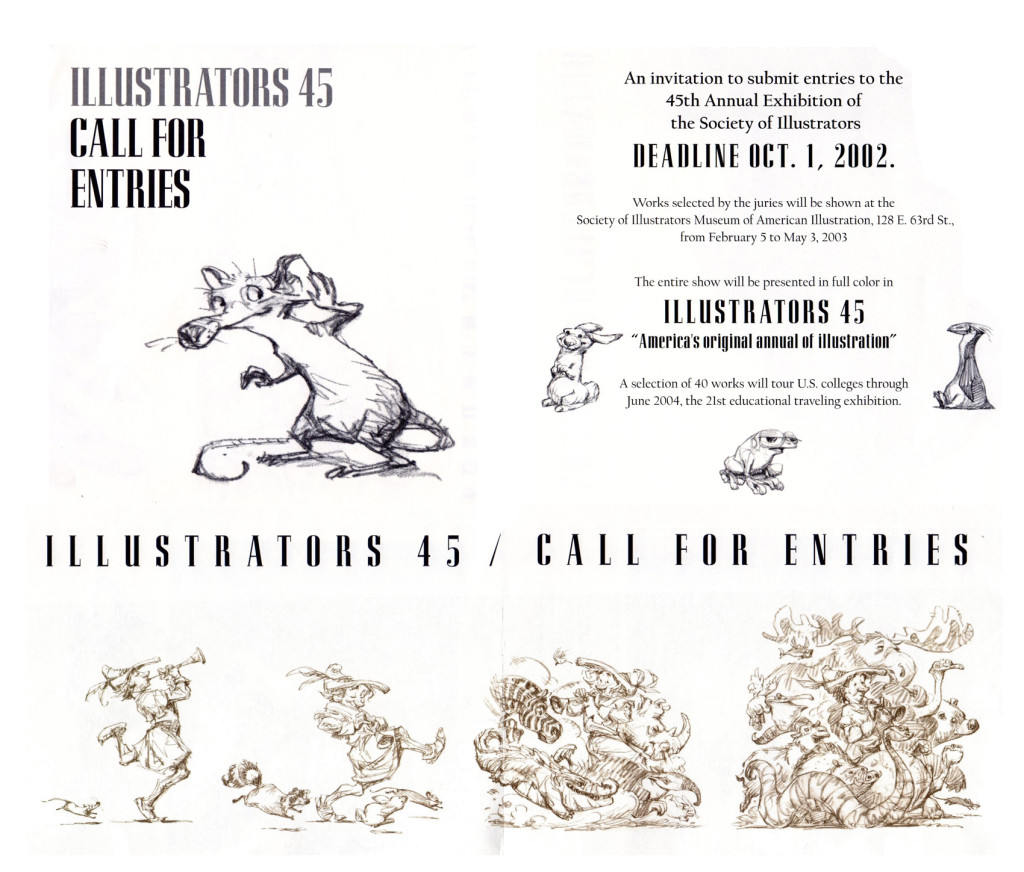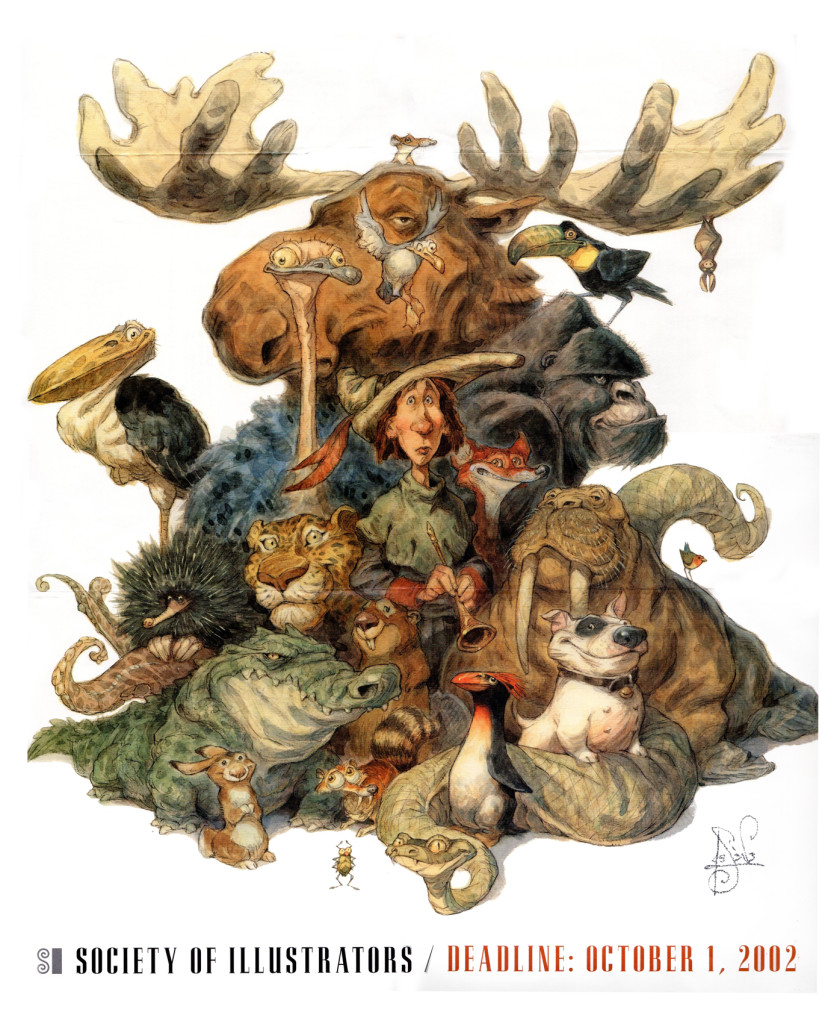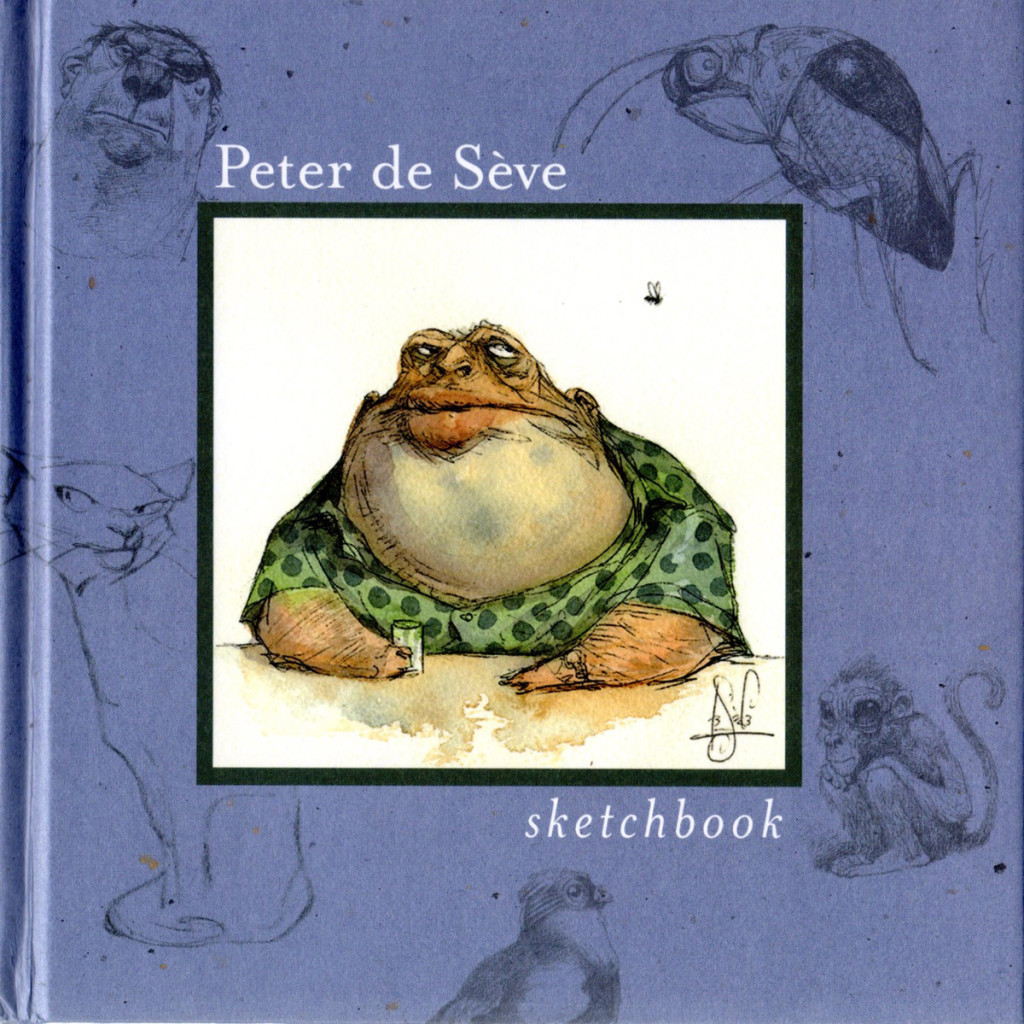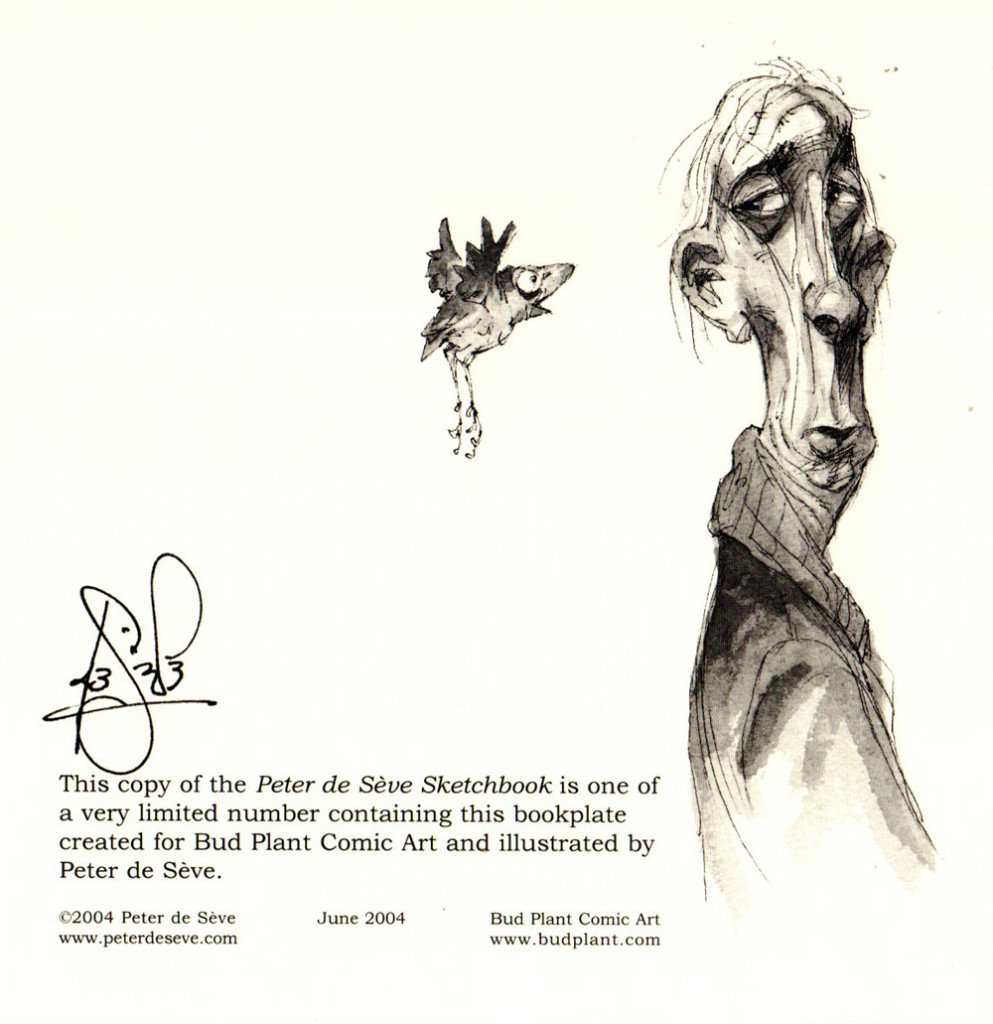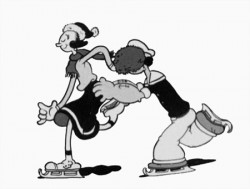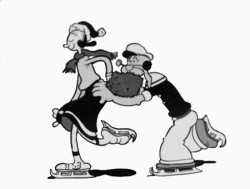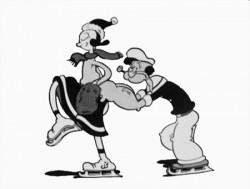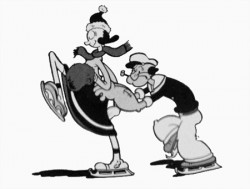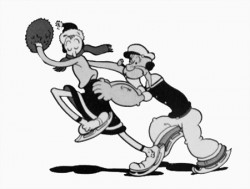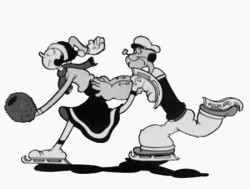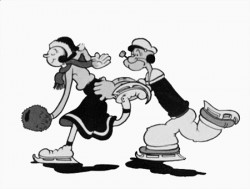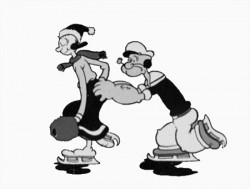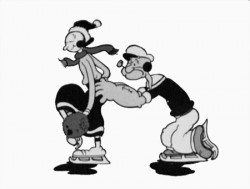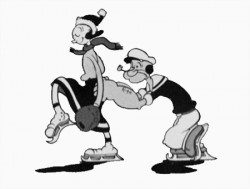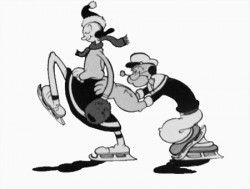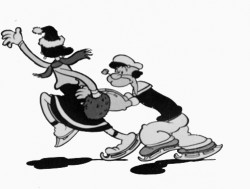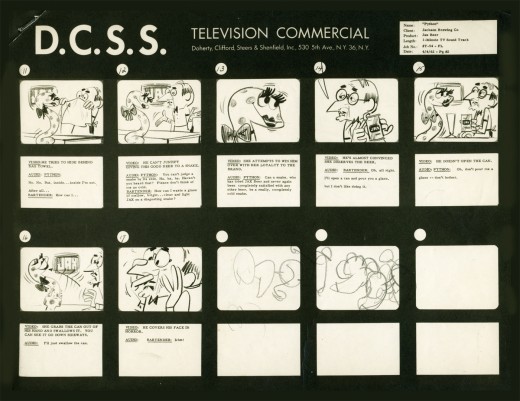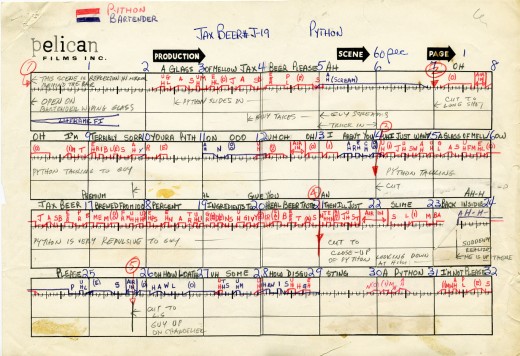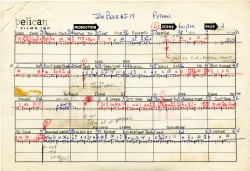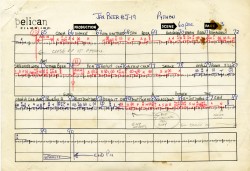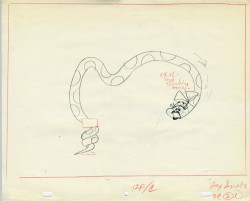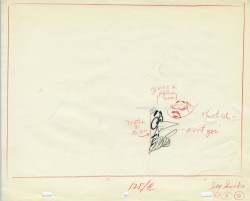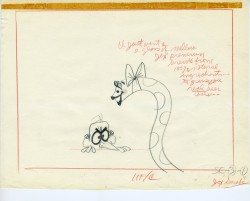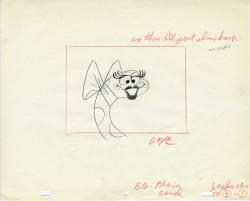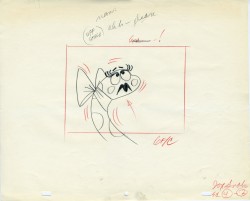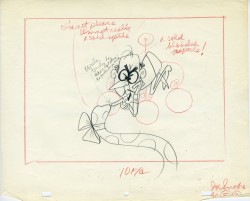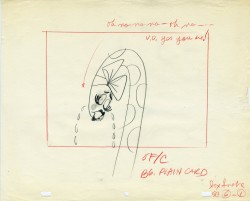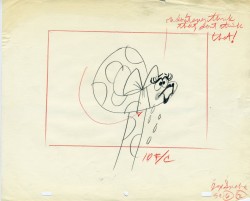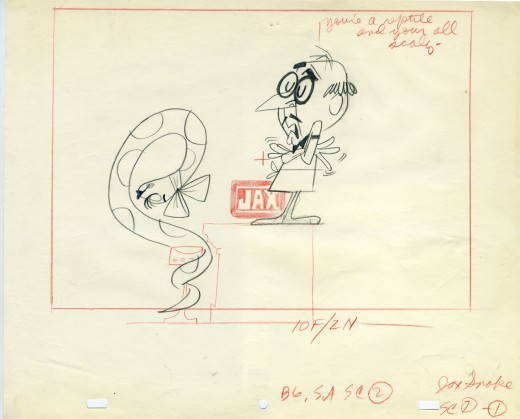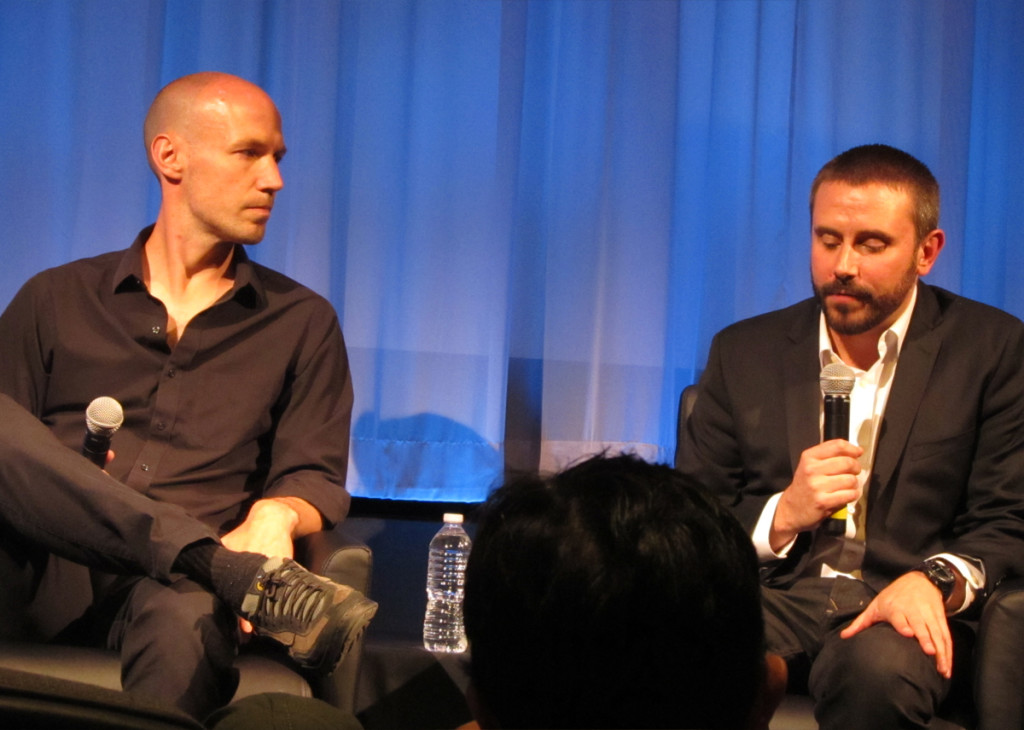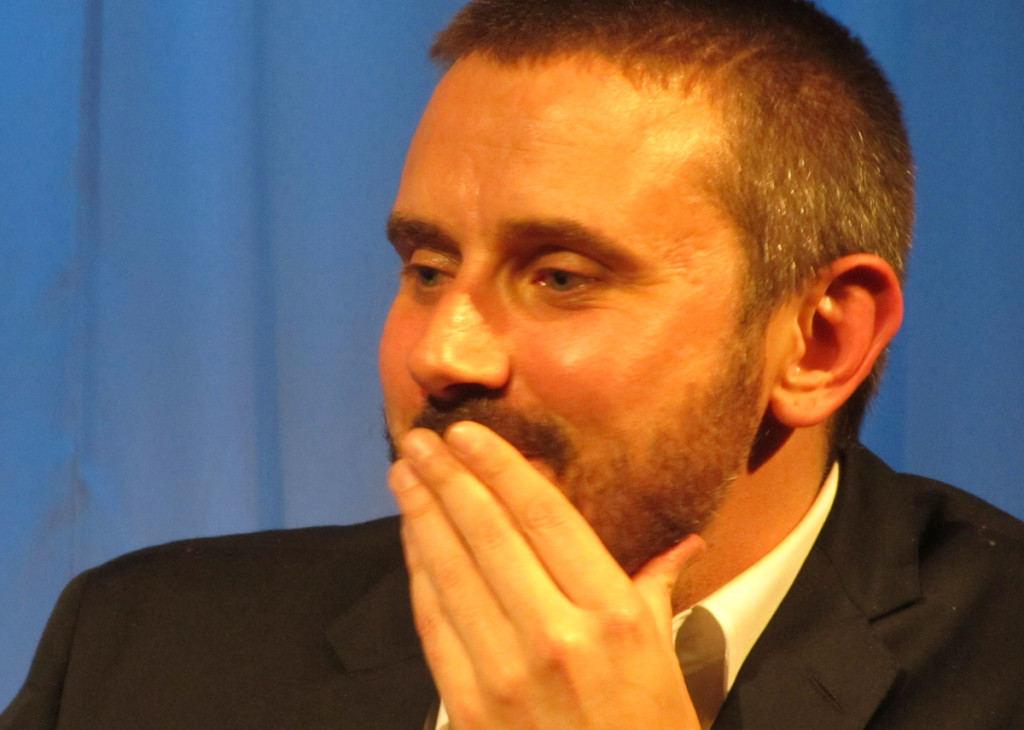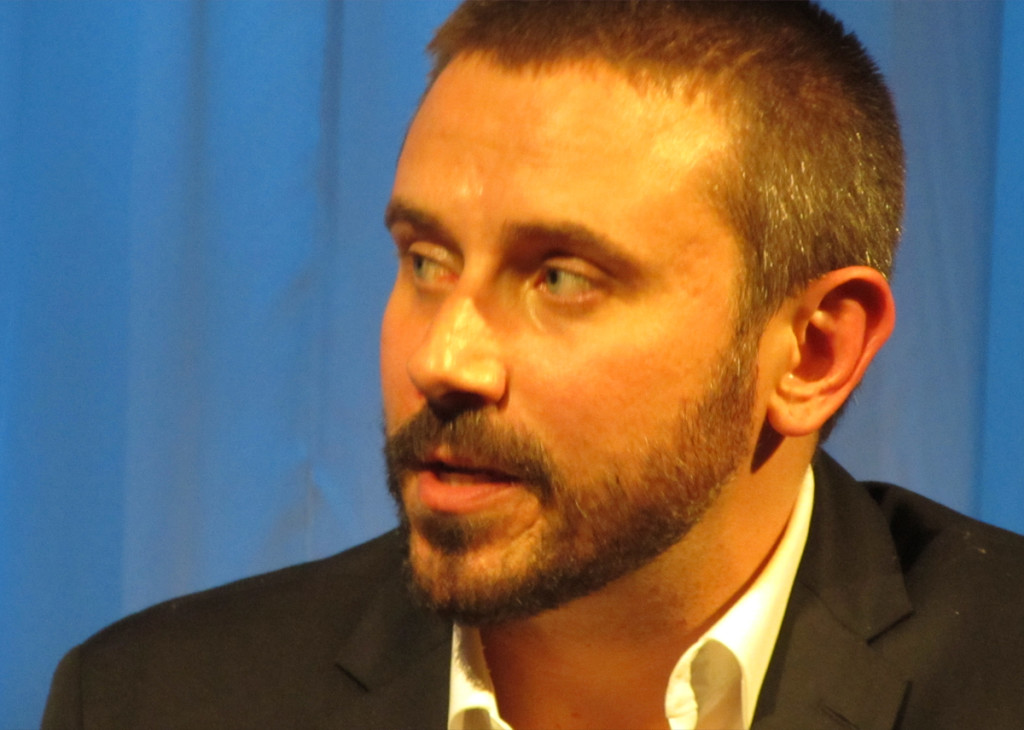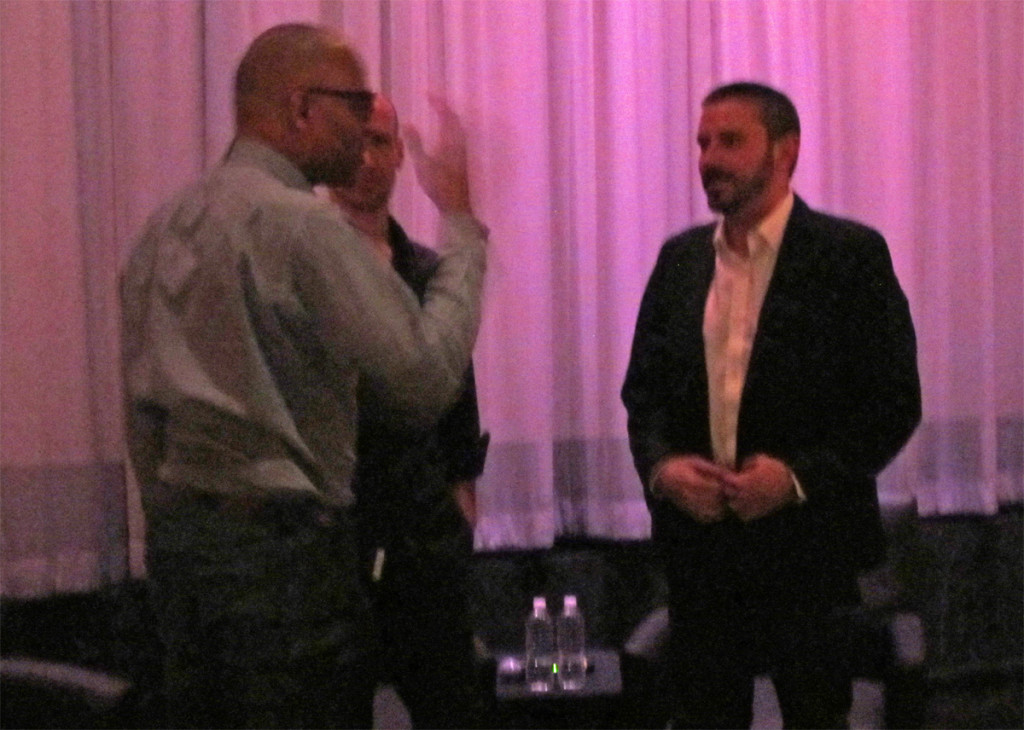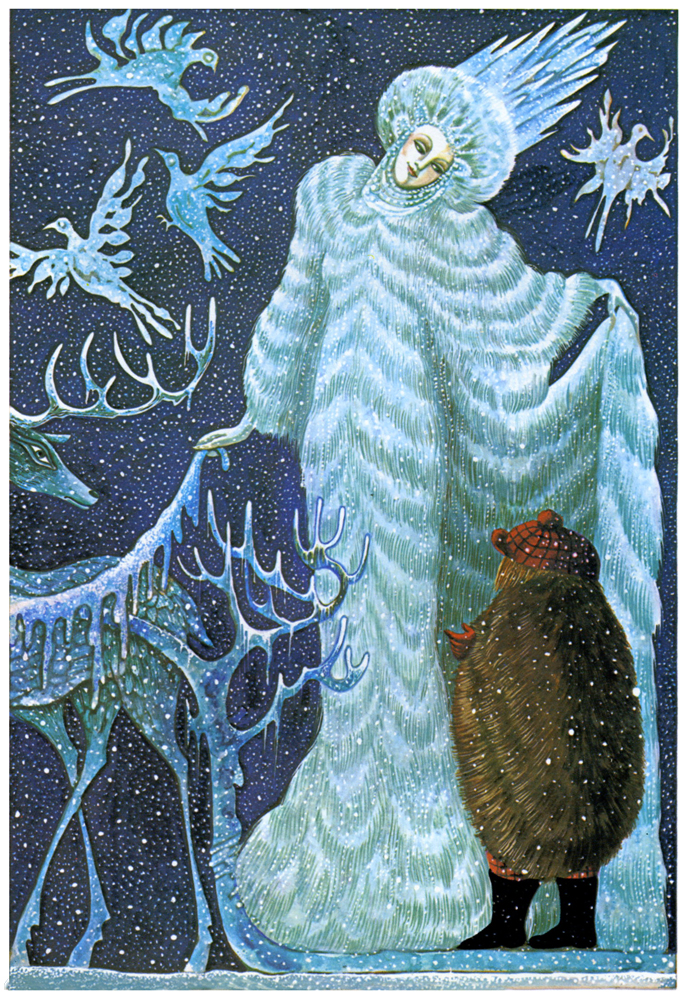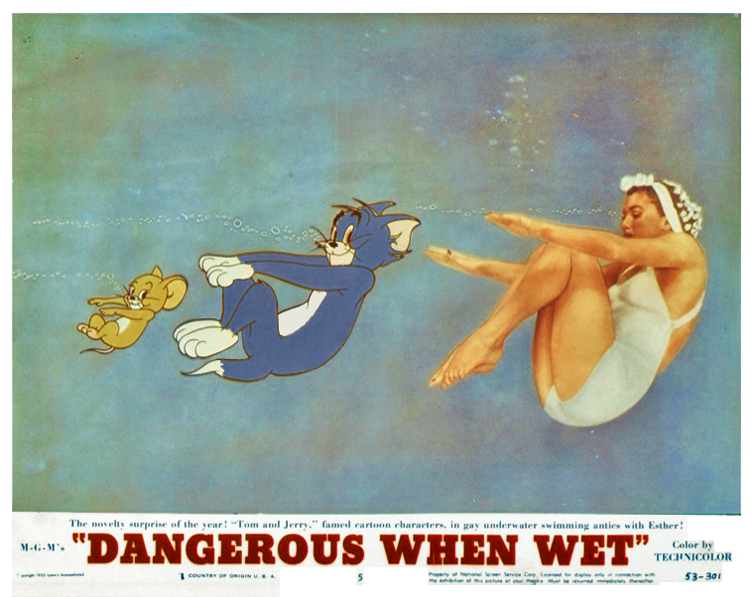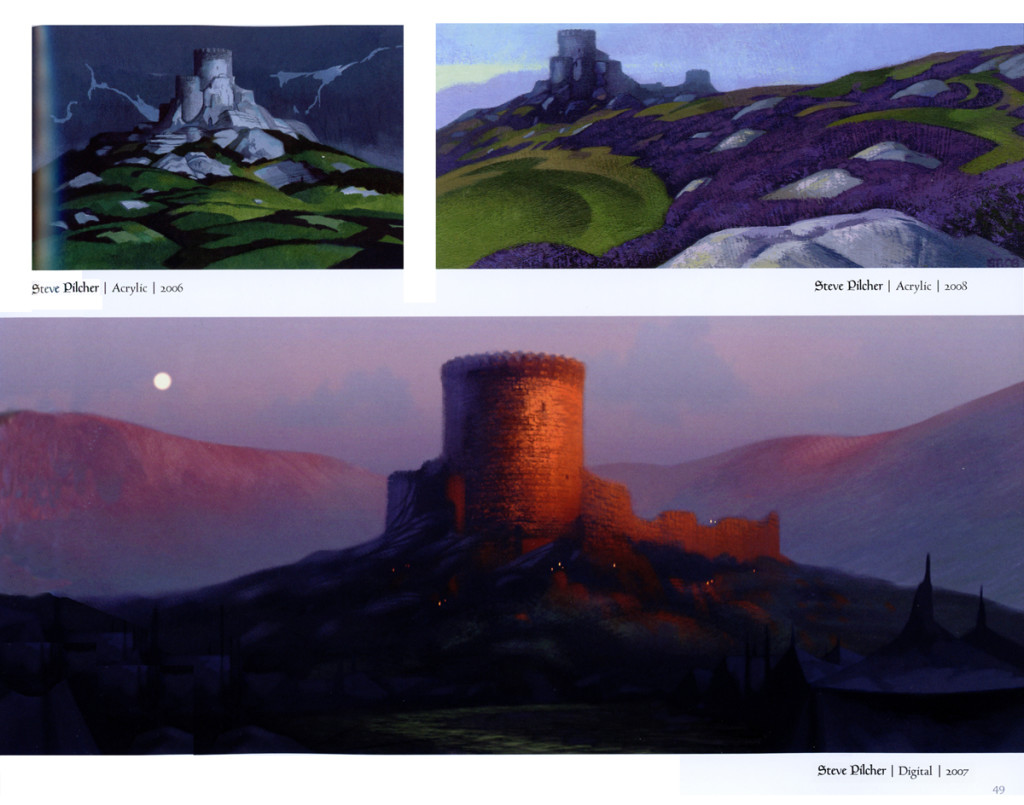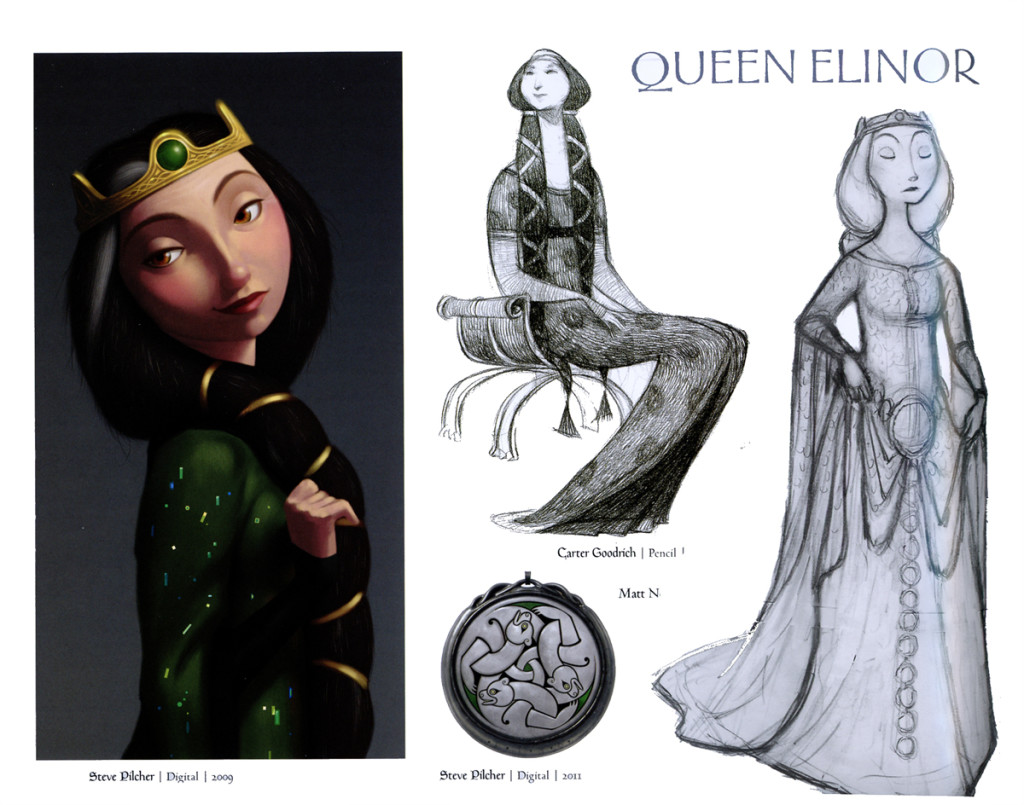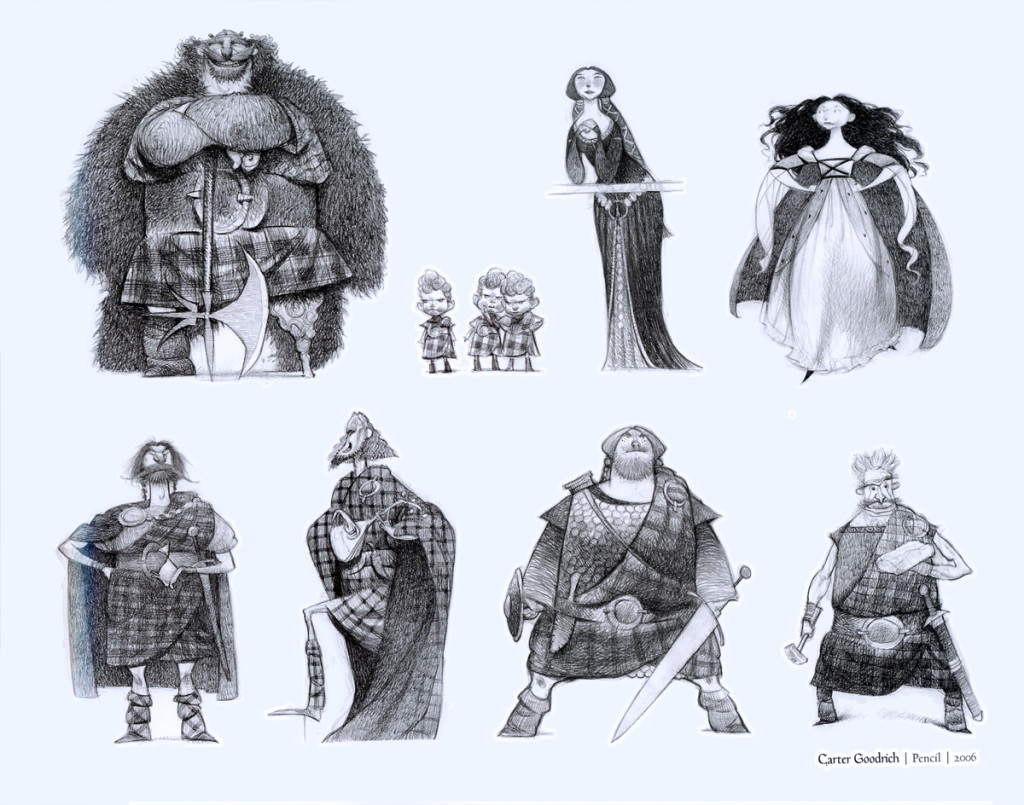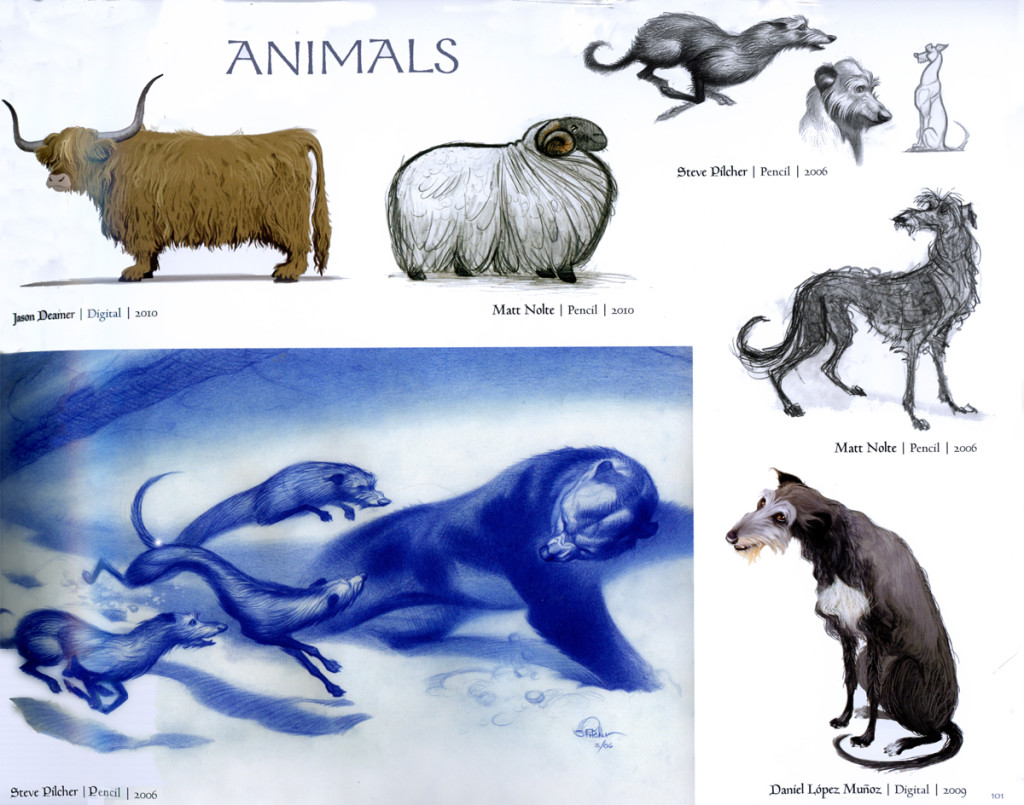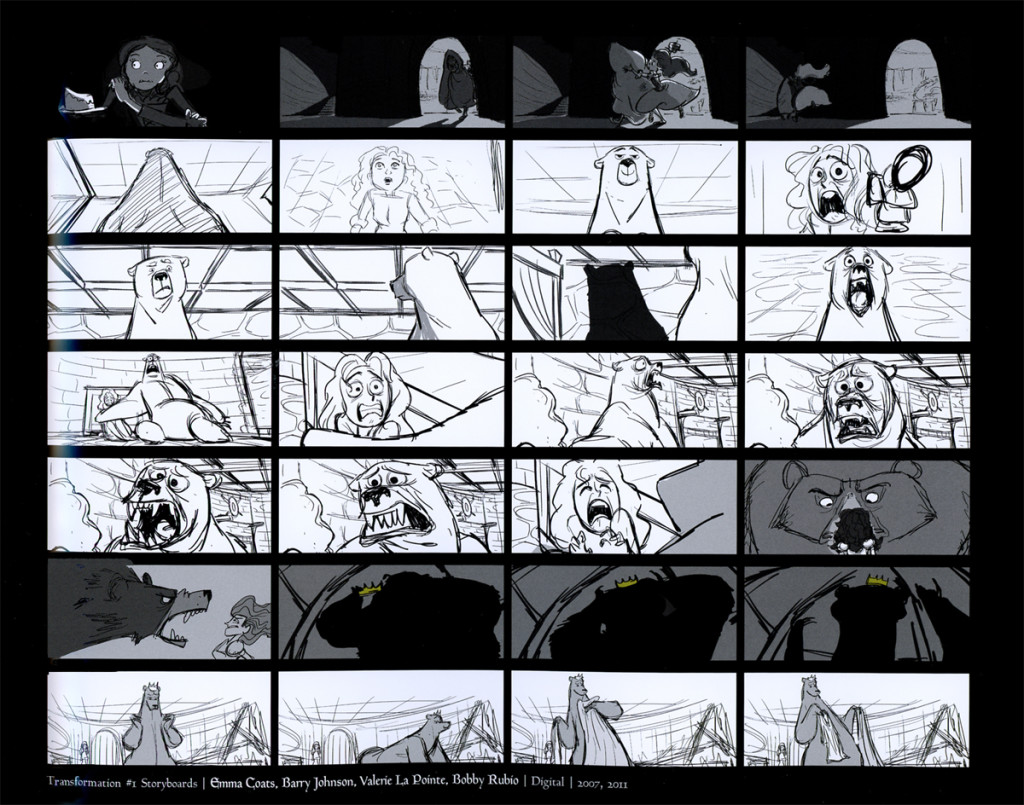Category ArchiveCommentary
Bill Peckmann &Commentary &Illustration 21 Jun 2013 06:24 am
Charles Saxon
I’ve always loved the extraordinary work of Chuck Saxon and have watched it closely. I do have one cel from a commercial done in his style, thanks to a good friend, Jim Logan who acted as an assistant on the spot. Unfortunately, it’s currently in storage or I’d post it.
Bill Peckmann sent me a number of pieces,and I’m glad to share them. Here’s Bill:
- Exquisite and scrumptious are two words that describe the work of New Yorker artist Charles “Chuck” Saxon to a fair thee well. The cover below which I had clipped, was one of my favorites because of his animals in it. The human condition was always Saxon’s main concern, but one can still wish that he could have included more critters, stuffed or otherwise in his incredible art.
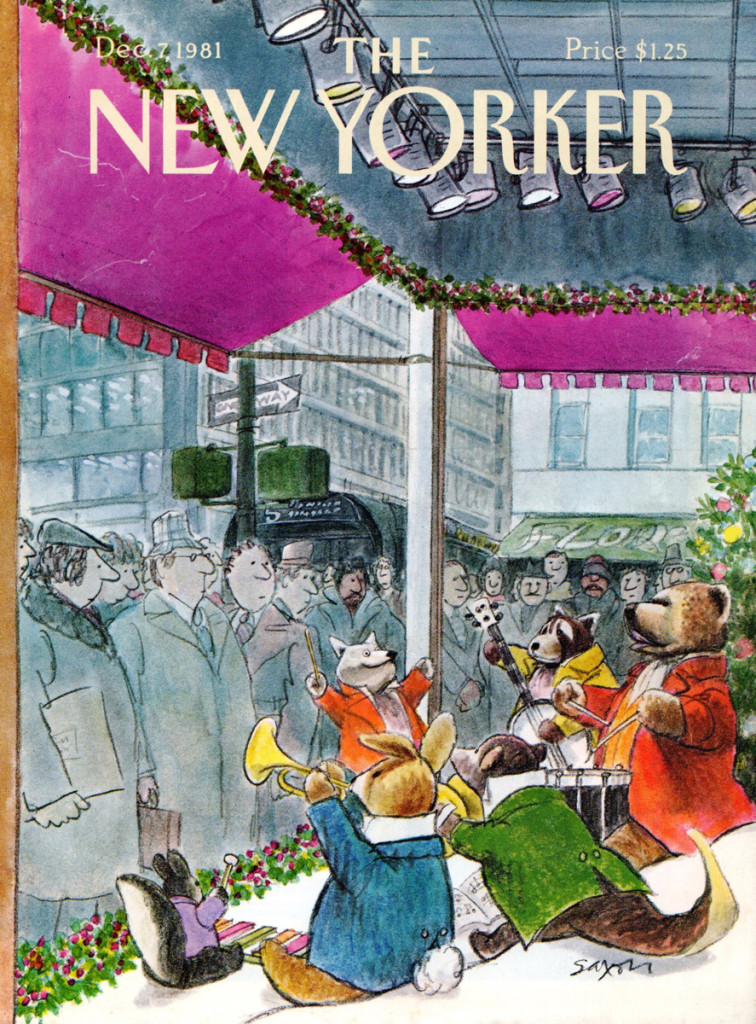 1
1
Bill Peckmann &Books &Commentary &Illustration 20 Jun 2013 05:28 am
Peter de Seve
We, in animation, are all familiar with the work of the talented designer, Peter de Seve. Bill Peckmann has sent me a number of clippings of his work: covers from New Yorker magazines, ruff illustrations and articles about him. It makes for a good post on this talented artist.
Back in the mid 1990′s, friend Tom Yohe was art directing an ad agency print job and he called in Peter De Seve to do the illustration. Tom knew I was a huge De Seve fan and he was kind enough to give me Peter’s discarded roughs. Here they be…
The following is an article from a 1994 issue of STEP-BY-STEP GRAPHICS.
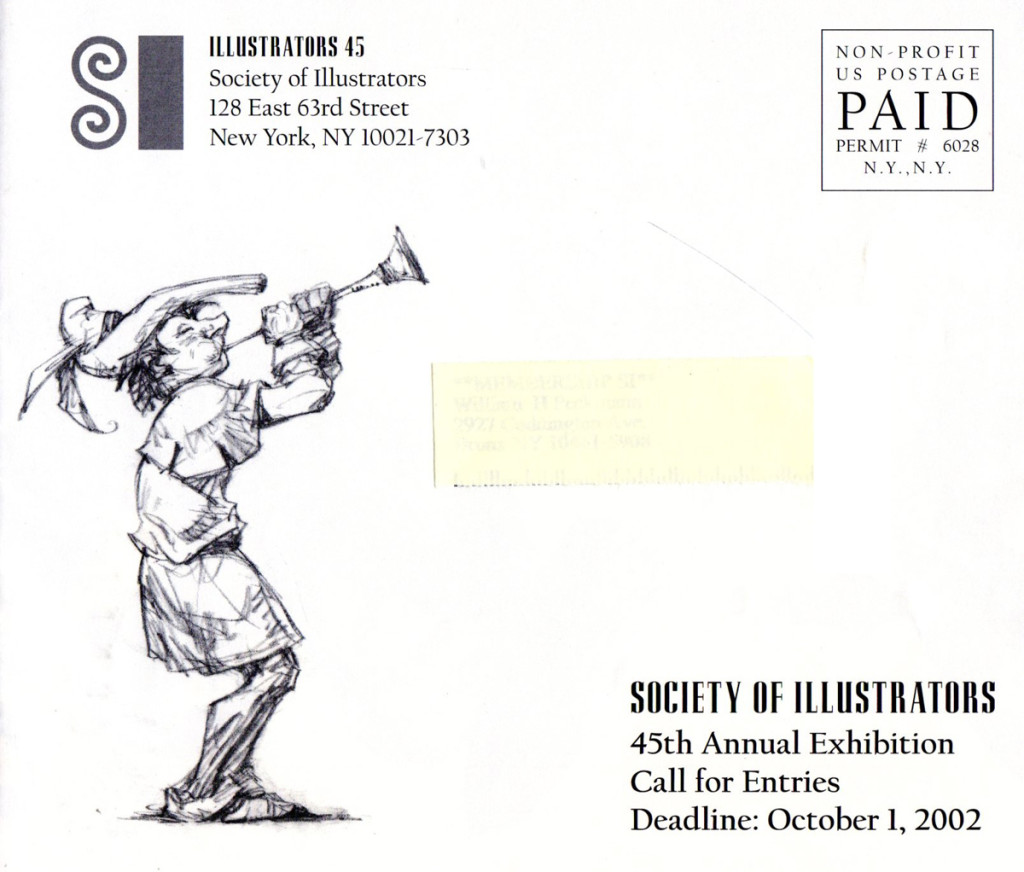 29
29
Action Analysis &Animation &Animation Artifacts &Commentary &Fleischer &repeated posts 18 Jun 2013 07:41 am
Popeye and Olive Cycle – repost
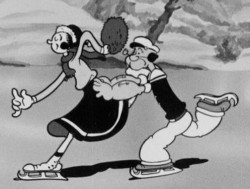 – Here’s a good example of something you won’t see animated in cgi. This is an ice skating cycle out of a Popeye cartoon, Seasin’s Greetinks!. It’s, of course, on the Popeye dvd, and is animated by Roland Crandall and Seymour Kneitel.
– Here’s a good example of something you won’t see animated in cgi. This is an ice skating cycle out of a Popeye cartoon, Seasin’s Greetinks!. It’s, of course, on the Popeye dvd, and is animated by Roland Crandall and Seymour Kneitel.
These Fleischer cartoons are so original in their jokes that there’s always a surprise or ten in every scene. The twists and turns are designed only to get laughs; I can give you a dozen examples from this short alone, but I’ll just recommend you watch the film.
It’s not just the stories that take odd spins, it’s the animation as well. There are bits that move in their own idiosyncratic way that are designed purely for laughs. Eccentric movements that would rarely show up in a Disney film dominate these Fleischer shorts.
Check out this cycle. Every eighth drawing is completely off the book. It gives the cycle a hilarious turn and completely dominates the move. It’s probably not the best way to build 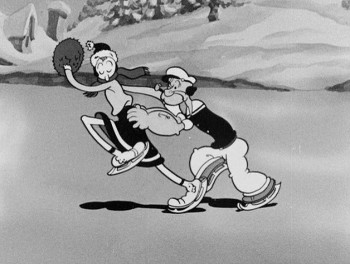 character (unless, perhaps, only one character moves like this), but it sure makes for some funny animation.
character (unless, perhaps, only one character moves like this), but it sure makes for some funny animation.
The thing about these Fleischer films is that it moves this way all the time. There’s always something about to take you for an odd turn, and while you’re looking for the big move, you’re just buying these small ones. The effect is cumulative, and the animation in these Fleischer films is just plain wacky.
A cgi animator doesn’t look for the odd twist in every frame. They can, but it wouldn’t make sense to be doing it that way, especially when the goal is to make the animation fluid in the final. The animation is too based on real life, as the computer sees it, and the individual frames don’t exist in the same way they do in 2D paper animation. There’s more risk in the 2D mode, but the reward can also be more ingenious and gratifying.
But what do I know? I don’t animate with cgi, and I’m just making a supposition based on what I’ve seen so far. Everything’s possible, but it sure doesn’t seem probable from my seat.
Having said that, let me also say that there aren’t too many animators doing 2D animation like this anymore. Maybe that’s the complaint I really have. Invention and daring in our medium seems to be a thing of the past.
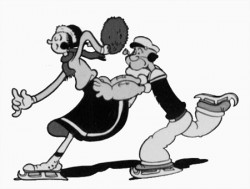 1
1 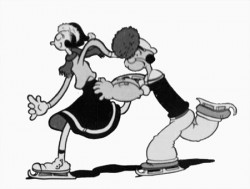 2
2
(Click any image to enlarge.)
Commentary 14 Jun 2013 11:17 pm
Huh?
.
I received this note from the “Wise Old Man” of Holland, Borge Ring, after I posted my piece about the Disney studio in the last days of the “Nine Old Men” – just before the new guys took ownership:
- hi MICHAEL
For you to add, share or ditch:
You touch upon top Walt Disney animators relaxing and losing their (story)mind
after Walt Disney died on them
I asked Marc Davis if Walt Disney’s death was followed by a period of
interregnum among the Nine Old Men.
Marc’s face turned sour
“Oh yes. There was no orderliness of production – Everybody did as they
pleased. Frank would go upstairs and take scenes that should’nt have been done
by HIM.”
greetz
Borge
Auto Boarded
.
 I must be getting old. I’ve gotten so tired of drawing storyboards, after all these years, that it came as a great relief to read that I no longer have to do all that arduous labor.
I must be getting old. I’ve gotten so tired of drawing storyboards, after all these years, that it came as a great relief to read that I no longer have to do all that arduous labor.
Now thanks to Amazon Storyteller (and the short description given by Amid Amidi from Cartoon Brew) the computer program will do the drawing for me. As the Amazon ad for the piece reads, “A storyboard can be 10 panels, or 100.” Once you place your “original script” into the program, designed and previously drawn characters will act out your script. All you have to do is add the script.
In a few days, Amazon Storyteller will rate your storyboard and tell you how good it is. (Just what I need, another boss.) This could be the start of something good.
All I need is Amazon Animator, so I don’t have to do that work either. I can just hire the machine to move my storyboard drawings with previously-animated scenes.
Movies
The films this week came fast and furious. It started with Sofia Coppola‘s latest film called The Bling Gang. Based on a true story, it’s about a group of teenagers in LA who sneak into and rob the houses of celebrated girls, such as Paris Hilton and Lindsay Lohan. Though we see alarms record the break ins and robberies, it takes a while for the police to investigate any of them. Eventually, all the teens are captured and end up in jail. You people living in LA can feel safe that they’re not out there to search your apartments for the latest in Laboutin shoes. Paris Hilton actually loaned her real home for the shooting.
The film feels a bit disinterested in the characters, and the whole thing feels a bit passive-aggressive. The best part of the film was that it ran quickly through its short 90 minute length.
Unfortunately, I forgot to bring my camera to photograph Sofia Coppola who came prepared to answer questions and whipped through those from moderator Brian Rose, a local film historian. Ms. Coppola does have a large and beautiful head, in the way of most stars. she reminds me a bit of Sophia Loren. Her interview will be on=line soon.
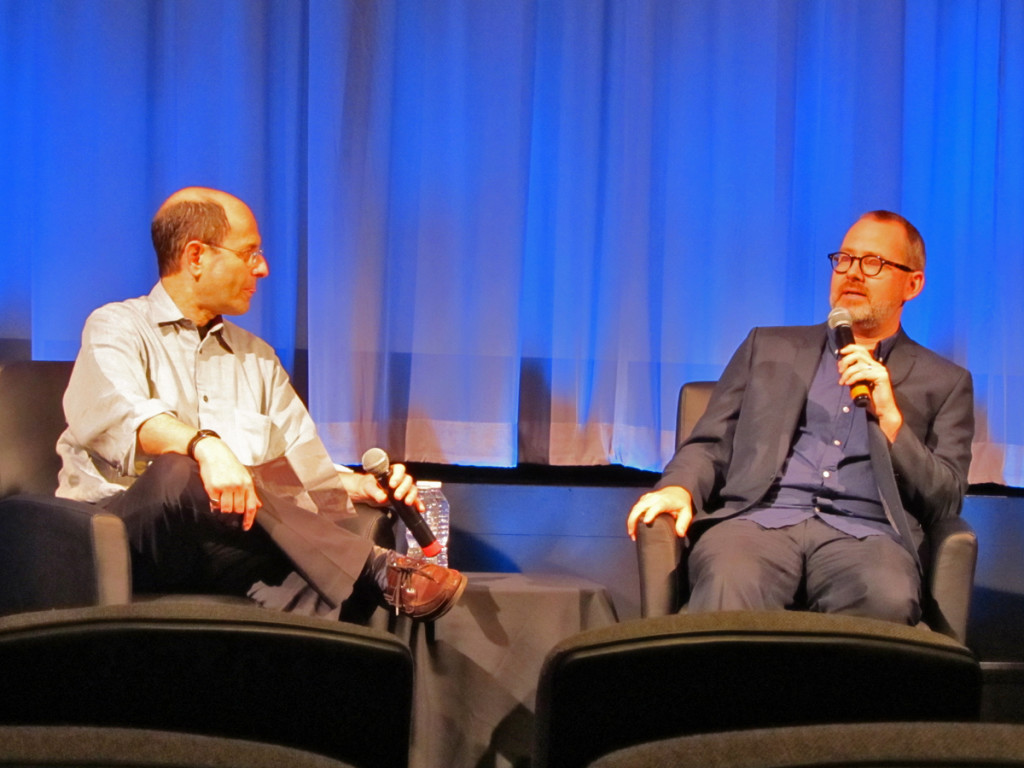 The next night brought a different kind of documentary, Twenty Feet from Stardom. It sounds like some kind of horror film, but it’s really about back-up singers. Their talent is obviously enormous, but stardom seemed to resist most of those on screen. It was nice to hear Bruce Springsteen and Sting talk about their back-up singers. Of course, the film was full of melody and had us dancing in or seats. Darlene Love is part time focus in the movie. Only after she’s working cleaning houses, does she gain respect for herself and her talent. She moves to New York where her career takes off, and she was a success story. She’s become a staple on the David Letterman
The next night brought a different kind of documentary, Twenty Feet from Stardom. It sounds like some kind of horror film, but it’s really about back-up singers. Their talent is obviously enormous, but stardom seemed to resist most of those on screen. It was nice to hear Bruce Springsteen and Sting talk about their back-up singers. Of course, the film was full of melody and had us dancing in or seats. Darlene Love is part time focus in the movie. Only after she’s working cleaning houses, does she gain respect for herself and her talent. She moves to New York where her career takes off, and she was a success story. She’s become a staple on the David Letterman
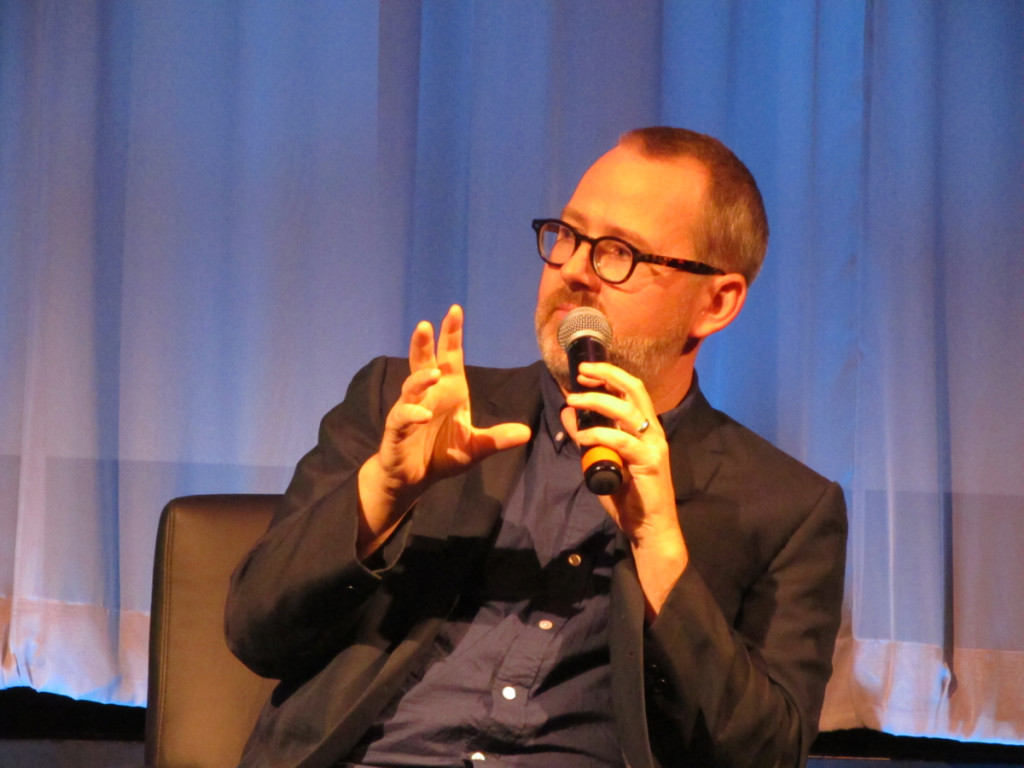 show every Christmas where she sings her hit, “Christmas (Baby, Please Come Home).” A very entertaining 90 minutes, the movie zipped along and told its story well. One wonders how the producers of this film were able to secure the rights to many of the songs that played out on the soundtrack, everything from “Space Oddity” to “Walk on the Wild Side” to “Lean on Me.” The post screening interview between director, Morgan Neville and Brian Rose also moved quickly.
show every Christmas where she sings her hit, “Christmas (Baby, Please Come Home).” A very entertaining 90 minutes, the movie zipped along and told its story well. One wonders how the producers of this film were able to secure the rights to many of the songs that played out on the soundtrack, everything from “Space Oddity” to “Walk on the Wild Side” to “Lean on Me.” The post screening interview between director, Morgan Neville and Brian Rose also moved quickly.
The Man of Steel was screened on Thursday evening. The latest adventures of Superman deal with his having to shave on Earth and his difficulties in getting a job prior to work at the Daily Planet.
There was no post-screening interview, but I’m not sure how interested I would’ve been in one.
Conversations
I’ve been talking about these post screening conversations for the pat few weeks, since the NY chapter of the Academy started scheduling them. These conversations have been placed on line and can be viewed if you’re interested. They’ve just posted the interview with Chris Wedge for his film, Epic. The virtual leader of Blue Sky talks about his film here.
RIP – Murray Rosen
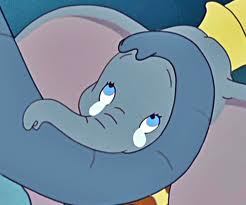 Cartoonist, Murray Rosen passed away this past week. Murray attended schools in New York City. Graduating from Pratt Institute, he went on to work for Walt Disney on Dumbo as a Cartoonist. He then returned to New York and worked for Famous Studios on Little Lulu and Popeye cartoons.
Cartoonist, Murray Rosen passed away this past week. Murray attended schools in New York City. Graduating from Pratt Institute, he went on to work for Walt Disney on Dumbo as a Cartoonist. He then returned to New York and worked for Famous Studios on Little Lulu and Popeye cartoons.
After marrying his wife, Shirley Binder on May 27, 1956, they moved to Maine where Murray operated an installation company for a friend’s storm window firm, remaining in the storm window business for 20 years. On May 8th, following a brief illness, he died with with his wife Shirley and friends at his side.
Current
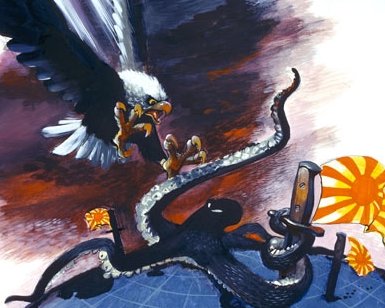 Recently, in response to Andreas Deja’s comment – on his own blog – he called the animation for 101 Dalmatians an excellent example of “Modern Anmation.” I commented on this use of “Modern Animation”, and was challenged by one of my readers. Andrea K. Haid wrote: “The reason that Andrea Deja calls 101 Dalmations “modern†is because it is set in a contemporary environment with contemporary music. It was the first story told in an animated feature by Disney to be placed in a modern setting with modern artwork.”
Recently, in response to Andreas Deja’s comment – on his own blog – he called the animation for 101 Dalmatians an excellent example of “Modern Anmation.” I commented on this use of “Modern Animation”, and was challenged by one of my readers. Andrea K. Haid wrote: “The reason that Andrea Deja calls 101 Dalmations “modern†is because it is set in a contemporary environment with contemporary music. It was the first story told in an animated feature by Disney to be placed in a modern setting with modern artwork.”
To this I began to think back on animated features that were more current than others and came away with a bit of surprise for myself.
Viewing the Disney features in chronological order:
Snow White, of course, operates within a Fairy Tale land.
Pinocchio also oerates within that world.
Fantasia is all over the place, so I ignore that one.
Bambi, however, is absolutely current. We see no clothing or hear no coversation, but it can be without doubt that the film takes place when it was made, 1942.
Dumbo, however, is very current. The people are dressed for 1942, the action takes place then. Even the fringes of the civil rights movement attest to the date of the story.
Victory Through AirPower takes place during WW2 and is immediate in its action. The film, itself, is an attempt to sell the idea of using aviation to help win the War.
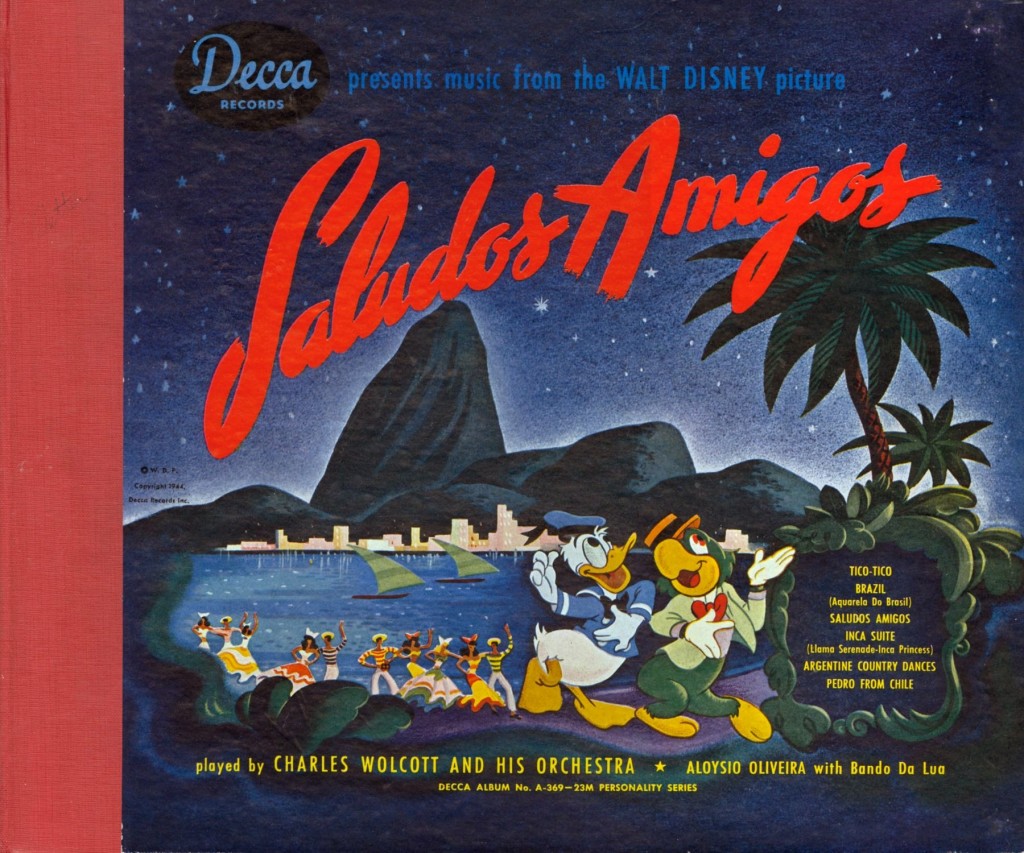 Of the package features, Saludos Amigos and Three Caballeros both take place currently. There could be no other approach in an attempt to melt the international curtains between North and South America.
Of the package features, Saludos Amigos and Three Caballeros both take place currently. There could be no other approach in an attempt to melt the international curtains between North and South America.
For the sake of this essay, I won’t analyze the shorts in the rest of the packaged films. The Headless Horseman, The Wind in the Willows, are probably dated. While other shorts like Little Toot, Trees and Bongo are all current. They’re not worth defending.
Cinderella was 18th Century fairy tale land.
Peter Pan and Alice In Wonderland were 19th Century.
Sleeping Beauty, to the 17th Century fairy tale world.
Lady and thte Tramp back to the early 20th Century.
 That brings us to 101 Dalmatians. Modern humans and dogs in modern dress.
That brings us to 101 Dalmatians. Modern humans and dogs in modern dress.
Sword in the Stone was 16th Century England.
The Jungle Book was 19th Century, per Rudyard Kipling.
The Aristocrats was early 20th Century. (There were cars.)
Robin Hood was 17th Century England.
Let’s skip to the new generation of animators:
Toy Story 1, 2, & 3 were all today.
As was The Rescuers and The Rescuers Down Under. The UN is there, for pete’s sake.
Basil of Baker”s Street dated. The Fox and the Hound, current.
Beauty and the Beast, Aladdin, Hunchback of Notre Dame and Pocahontas were all hundreds of years old.
I don’t think I need go on. We are into “Modern Animation” and I think it has nothing to do with what period the film is set in.
CitiBikes
You step out onto the street on Monday, and you’re greeted by a hundred blue bikes. Sort of the same color as the lines on this page. I wasn’t expecting it. No double-parked cars.
The Citi decided that it’d be better for me if I took a bike. Rent the bikes for 2 minutes, then roll to the next check-in point. You pay some bucks and you take the biks. (They don’t offer bike-helmets for the softer-brained, accident-prone people. There’s just a lot of info about the fines you’ll pay if you go over the twenty minute rental time.
Last weekend everybody wanted a bike. (Aren’t they all girls’ bikes? What’s up with that?) They were all rented by couples speaking non-English. (A tourist thing, undoubtedly.) Only two gone so far this weekend. Meanwhile, no one has a parking space. At first I thought they were mopeds, like in Europe. We’d be hearing buzzing all day long in conjunction with the square jeep-type taxis.
We’ll see how it goes, though. No buzzing, a crash of cerulean blue, and lots of tourists reading the signs in groups of about eight.
Jerry’s Visit and a Great Film Program
This is a note I received from Jerry Beck. It doesn’t take place until the end of July, but thought you’d like some advance notice, now.
- I don’t know if you usually attend the Animation Block Party in Brooklyn,
but this year I’m going to come back to New York and introduce
a screening of Oscar winning shorts on Sunday night July 28th at 7pm
Munro / Gene Deitch / 8:20 min / 1960
Ersatz (The Substitute) / Dušan Vukotić / 10 min / 1961
The Hole / John Hubley and Faith Hubley / 15 min / 1962
The Critic / Ernest Pintoff / 4 min / 1963
The Pink Phink / Friz Freleng and Hawley Pratt / 6:38 min / 1964
Dot and the Line: Romance in Lower Mathematics / Chuck Jones & Maurice
Noble / 10 min /1965
Herb Alpert & the Tijuana Brass Double Feature / John Hubley / 6 min / 1966
The Box / Fred Wolf / 9 min / 1967
After the films I’m hoping to lead a 15-20 minute panel discussion about these films, and the Oscars, and the filmmakers… etc. I do not know who Animation Block Party are asking to be a part of it, but I thought I’d reach out to you myself – as an actual Oscar nominee, you’d be a great addition to the discussion.
I completely understand if you cannot attend, but I thought it was worth a shot.
Event is at Brooklyn Academy of Music (BAMcinématek) located at 30 Lafayette Ave, Brooklyn.
Animation &Animation Artifacts &Commentary &commercial animation &Models &repeated posts 13 Jun 2013 09:07 am
Jax Beer – recap
- In November 2006 I posted the storyboard, workbook and final layouts for a Jax Beer spot which was directed by Mordicai Gerstein. I thought it interesting enough to recap the two posts, so here they are.
- This is the material for a Jax Beer commercial. It was done by a NY studio named Pelican in 1962. There were about 75 people on staff at Pelican back then.
This spot was directed by Mordi (Mordicai) Gerstein. He left animation in th 70′s to write & illustrate children’s books. (He won the Caldecott Medal for his book, The Man Who Walked Between The Towers. This was the book I adapted to animation in 2005.)
What follows is the storyboard and the director’s workbook. (It appears to be an agency board, though it’s drawn in a style that looks to be Mordi Gerstein‘s. Perhaps boards from the agency were drawn by the studios back in 1964; I’m not sure. The layouts were drawn by the same artist.)
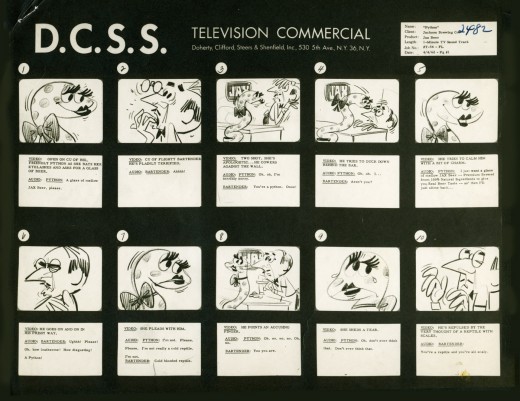
_____(Click any image to enlarge.)
The workbook has several flaps on it that indicate changes in timings. There are also glue stains where I assume other flaps fell off. (See page one, last row, first column.) Each column represents 16 frames/one foot of film. Odd numbers are marked off.
Each row contains 8 feet of film/128 frames. Each page represents 32 feet/512 frames. It would have been smarter to keep to even numbers.
More modern exposure sheets generally have 80 frames/five feet per page. This also divides into two feet of 16mm film. (Handy.) The numbers add and divide smartly and easily. But then most people don’t use exposure sheets anymore.
 - Continuing with the above post, a Jax Beer commercial, I present some of the film’s layouts. This represents about 2/3 of them.
- Continuing with the above post, a Jax Beer commercial, I present some of the film’s layouts. This represents about 2/3 of them.
The art was done by Mordi (Mordicai) Gerstein, who also directed the spot. Grim Natwick animated the spot and Tissa David assisted him. Of course, this was in the days before auido tapes could be handed out, so the animator would get a phonograph of the soundtrack. They could mark it with a white pencil to indicate key spots.
I thought that this in conjunction with yesterday’s prep material gave a good indication of the preproduction that went into making a commercial back in 1962.
That said, here are the layouts:
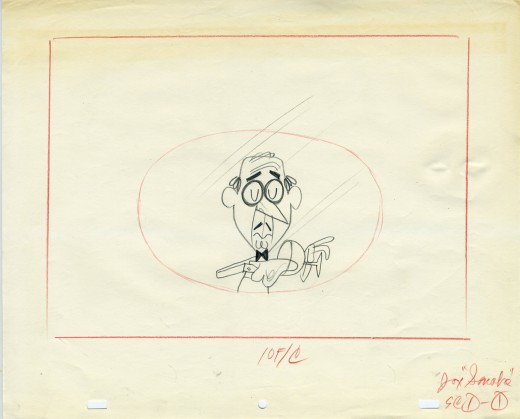
(Click on any image to enlarge.)
Action Analysis &Animation &Articles on Animation &Books &Commentary &Disney &Illustration &Richard Williams &Rowland B. Wilson &SpornFilms &Story & Storyboards &Tissa David 10 Jun 2013 03:31 am
Illusions – 3
I’ve written two posts about Frank Thomas and Ollie Johnston‘s book, The Illusion of Life the last couple of weeks. I came to the book only recently and realizing that I’d never really read the book, I thought it was time. So in doing so, I’ve found that I have a lot to write about. The book has come to be accepted almost as gospel, and I decided to give my thoughts.
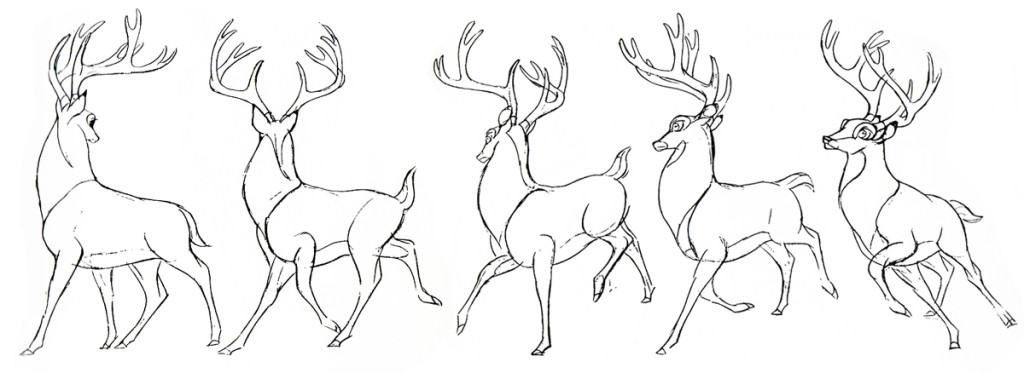
There were two major complaints I’ve had with what I’ve read in their book so far, and I spent quite a bit of time reviewing those.
- First out of the box, I was stunned to read that these two of Disney’s “nine old men” said that they’d originally believed that each prime animator should control one, maybe two characters in the film. Then, later in life they decided that an animator should do an entire scene with all of the characters within it. This is not what I’d seen the two (or the nine) do in actual practice. post 1
Secondly, they argue for animating in a rough format, and they give solid reasons for this. As a matter of fact, it was Disney, himself, in the Thirties who demanded the animators work rough and solid assistants who could draw well back them up. Then much later in the book the two author/animators suggest that it’s better for an animator to work as clean as possible with assistants just doing touch-up. This helped out the Xerox process, but didn’t necessarily help for good animation. post 2
The book starts out sounding like it’s going to be a history of Disney animation, but then starts getting into the rules of animation (squash and stretch, overlapping action and anticipation and all those other goodies) exploiting Disney animation art in demonstration. Soon the book moved into storytelling and how to try to keep the material fresh and interesting. It all becomes a bit obvious, but you keep hoping that some great secret will be revealed by the two masterful oldsters.
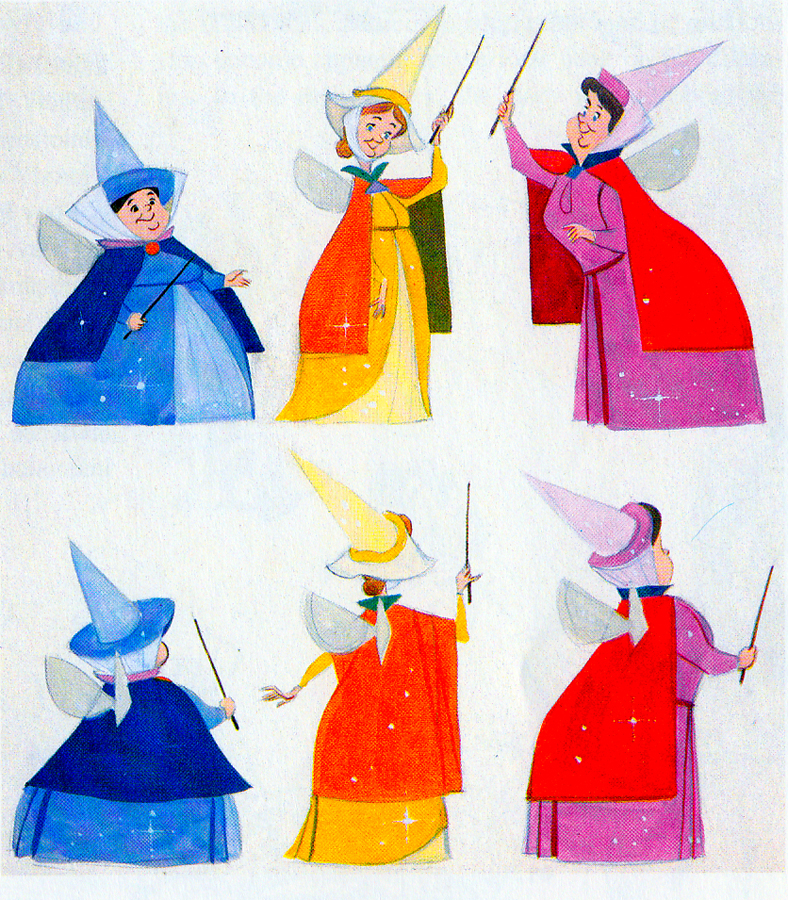 They do go into depth about how to develop characters when making animated films. They offer lots of examples from Orville, the albatross in The Rescuers to the three fairies in Sleeping Beauty, but their greatest attention goes to Baloo the Bear in The Jungle Book. They were having a hard time with this guy; they had been trying to do an Ed Wynn type character, until Walt Disney, himself, suggested Phil Harris. Once they auditioned Harris, they knew they were on the right track, and the character kept grabbing more screen time and grew ever larger. In the end, audiences just loved him.
They do go into depth about how to develop characters when making animated films. They offer lots of examples from Orville, the albatross in The Rescuers to the three fairies in Sleeping Beauty, but their greatest attention goes to Baloo the Bear in The Jungle Book. They were having a hard time with this guy; they had been trying to do an Ed Wynn type character, until Walt Disney, himself, suggested Phil Harris. Once they auditioned Harris, they knew they were on the right track, and the character kept grabbing more screen time and grew ever larger. In the end, audiences just loved him.
Personally, I’ve always hated Phil Harris’ performance in this film. What was it doing in Rudyard Kipling’s book? When I was a kid, Harris and Louis Prima were the perfect examples of my father’s entertainers. He loved these guys and spent a lot of time in front of the family TV watching the Dinah Shore Show______Tom Oreb designs for Sleeping Beauty.
and other such entertaining Variety Shows with
lots of little 50′s big-band jazz-type acts. I hated it; this was my parent’s kind of music and humor and had nothing to do with me. I was the kid who paid his quarter to see the Walt Disney movies (that was the children’s price of admission in 1959.)
In their book they say they knew he was perfect because generations of kids later (who have no idea who Phil Harris was) still take joy from Baloo. What they forgot is what I knew all along. This was The Jungle Book. If they had been truly creative, they would have developed a character in line with Kipling’s material that would have been an original, not an impersonation of Doobey Doobey Doo, Phil Harris. The same is true of Louis Prima as a monkey. (There was a time when Disney said that they should never animate monkeys because monkeys are funny on their own, in real life. Animation wouldn’t make them funnier.) Sebastian Cabot, as Bagheera, works as does George Sanders as Shere Khan.
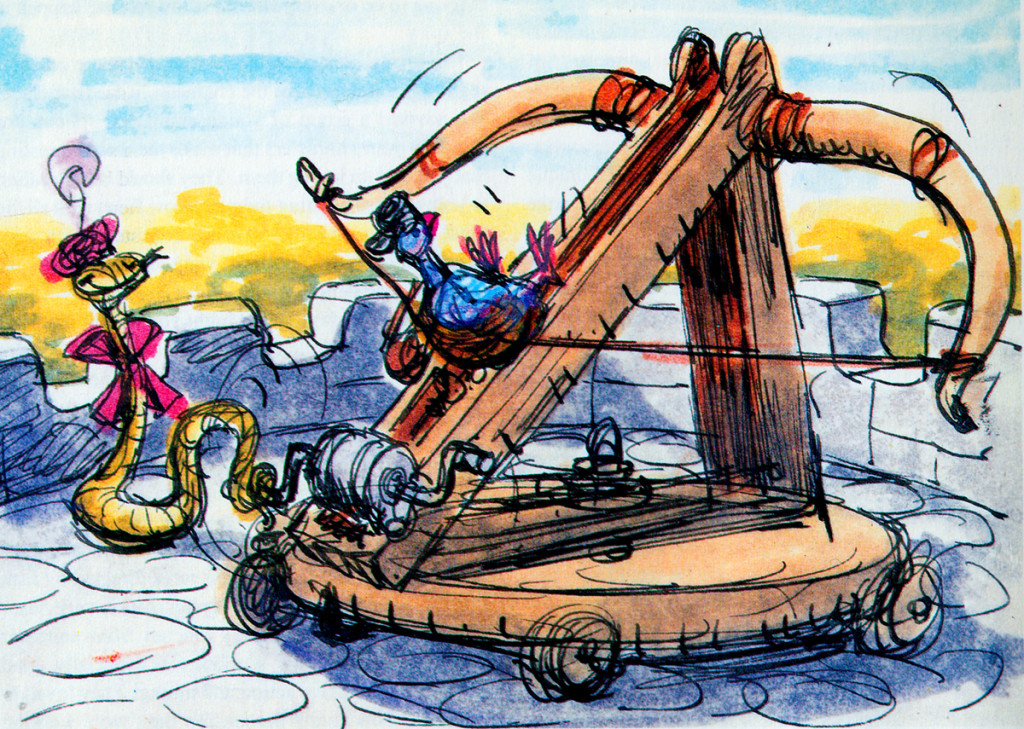
- Right: A discarded sequence from Robin Hood showed a messenger pigeon so fat and heavy he had to be shot into the air. This gave the animators the beginnings of The Albatross Air Lines in The Rescuers.
Phil Harris was so successful, they dragged him into Robin Hood as well. Robin Hood. The very same character from The Jungle Book is now Little John! All those cowboy voices in Robin Hood don’t work either, especially when you mix them up with Brits like Peter Ustinov and Brian Bedford. When these two thespians work against Pat Buttram, Andy Devine and George Lindsey, it’s one thing. Throw in a Phil Harris, and you have something else again. Where are we, the audience, supposed to be? Is it “Merry Ol’ England”? Or is it the lazy take on character development by a few senior animators who have taken license to jump away from the story writers for the sake of easy characters of the generation they’re familiar with. Robin Hood is a mess of a story – even though it’s a solid original they’re working from, and I find it hard to take written advice from these fine old animation pros who take an easy way out for the sake of their animation; shape shifting classic tales to fit their wrinkles.
At least, that’s how I see it – saw it. And perhaps that’s why it’s taken me so long to read this book. I felt (at the age of 14 when these films came out) that the Disney factory had turned into something other than the people who’d made Snow White and Bambi and Lady and the Tramp.
They had, in fact, become the nine old men.
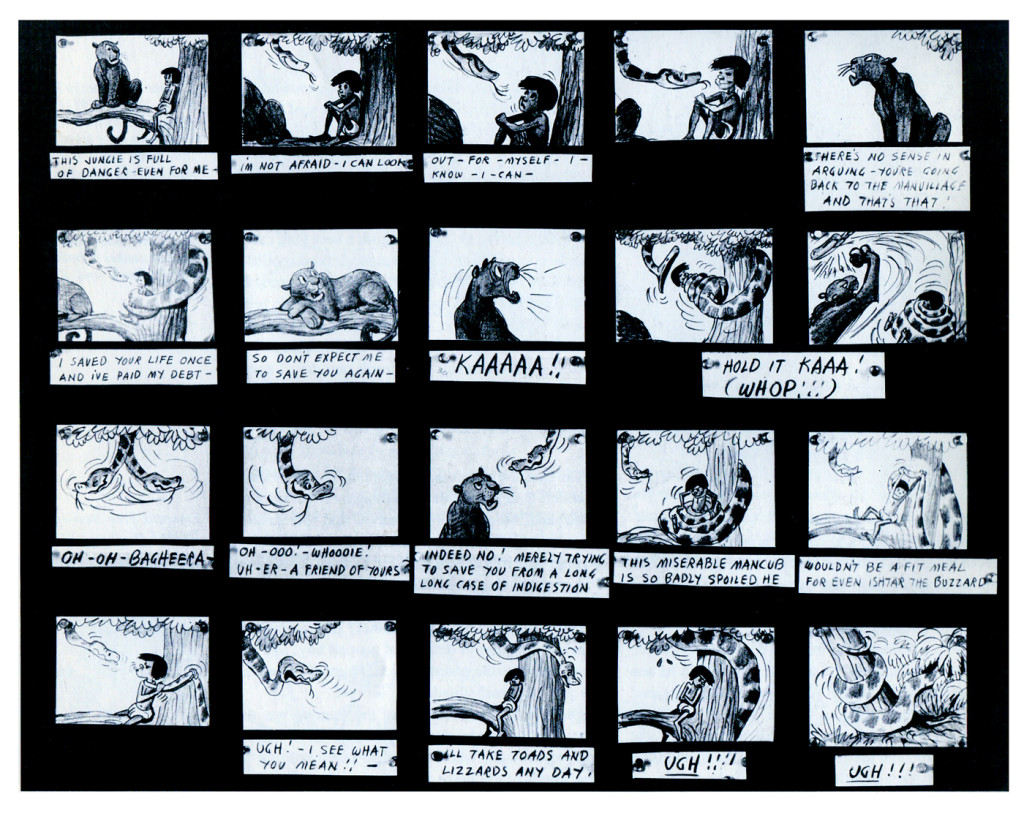
The Jungle Book was the last film Bill Peet worked on. He left
before the film was done. He’d had a long, contentious relationship
with Disney. He never felt he’d gotten the respect he deserved.
They were incredibly talented animators, and they certainly knew how to do their jobs. The animation, itself, was first rate (sometimes even brilliant as Shere Khan demonstrates), but try comparing the stories to earlier features. Even Peter Pan and Cinderella are marvelously developed. Artists like Bill Peet and Vance Gerry knew how to do their jobs, and they did them well. When Peet quit the studio, because he felt disrespected, Disney’s solid story development walked out the door.
The animators were taking the easy route rather than properly developing their stories. The stories had lost all dynamic tension and had become back-room yarns. Good enough, but not good.
Today was Nik Ranieri‘s last day at Disney’s studio. He’s definitive proof, in the eyes of Disney, that 2D animation is dead as an art form. This is the end result of some of the changes Thomas and Johnston suggest in their book. The medium took a hit back then; it just took this long for the suits to catch up. Good luck to Nik and the other Disney artists who no longer work steadily in what is still a vitally strong medium.
Commentary 08 Jun 2013 04:20 am
Forever Frozen
This week’s films included the documentary, The Dirty Wars. This is the film taken from Jeremy Scahill‘s book of the same title. It’s about the wars America is pulling secretively atacking whomever they choose without proof of reason.
The film centers on Ayman al Zawahri, an American who protested the workings of the U.S. in the past tseveral years. He was assassinated by a drone after having been called the #1 enemy of the U.S. after the murder of Bin Laden.
Scahill presents and argument and gets no response of proof of al Zawahri’s guilt. He is beyond belief when Zawahri is killed by a drone. The film makes its point and has a strong theme. It’s quite a good documentary.
THe NY chapter of the Academy had Jeremy Scahill and Richard Rowley present to answer questions from the Academy’s Patrick Harrison.
These Q&A sessions are going to be on the Academy’s website soon. When Chris Wedge‘s session is up, I’ll let you know.
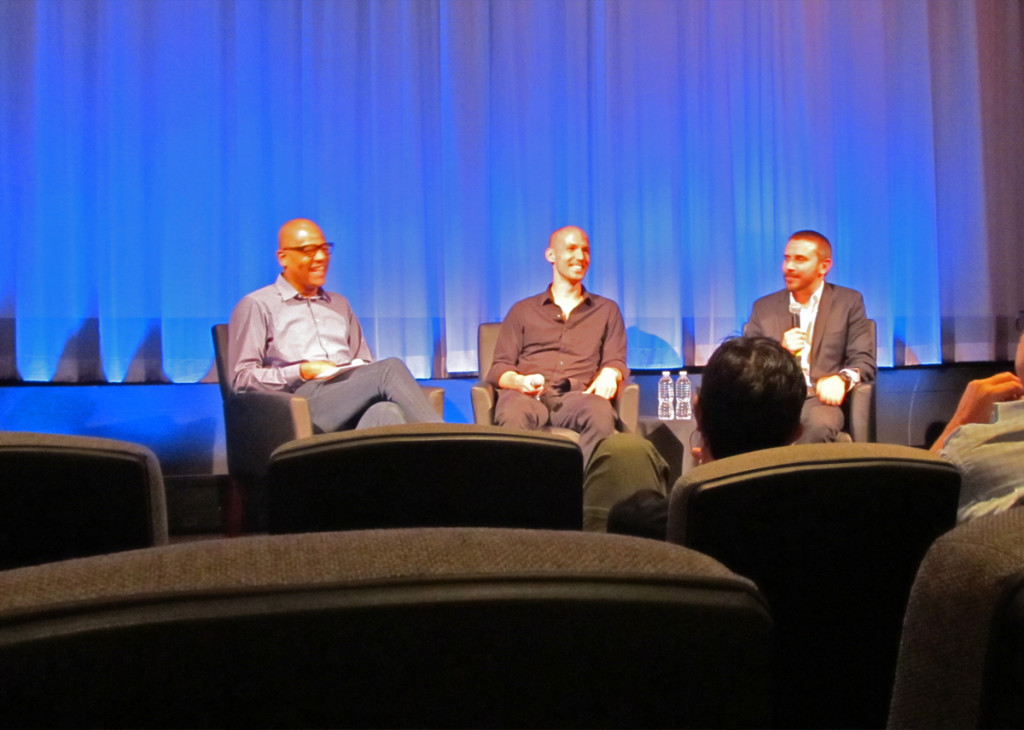 1
1  2
21) L-R: Harrison, Rowley, Scahill . . | . . .2) Harrison . . . | . . . 4) Scahill . . . | . . . 6) L-R: Harrison, Rowley, Scahill
Here’s a NYTimes interview with Mr. Scahill.
There was a second Academy film to see this past week. On Thursday the Pedro Almadovar film was a real bust. Seventies disco meets an Hispanic airline, from the point of view of the cockpit. Absolutely dreadful is about all I can say for it. Since I’m a big fan and waited patiently to see this one, it was very disappointing. That’s about all I can say.

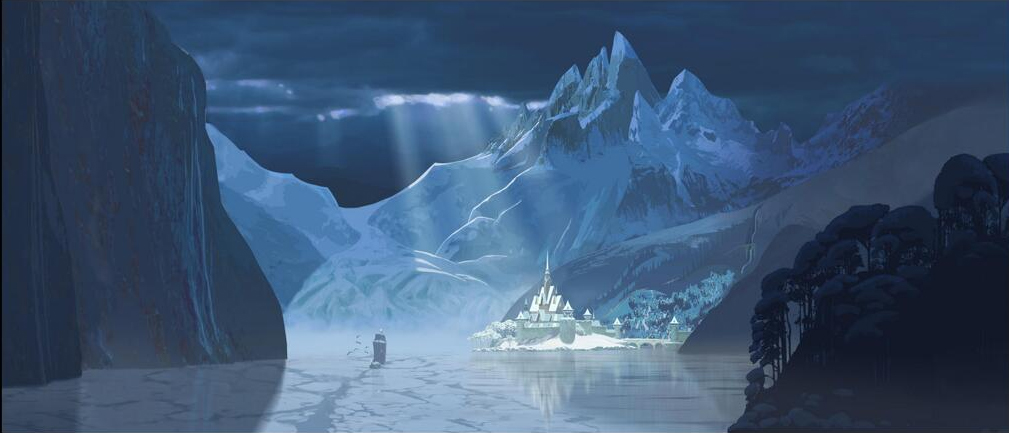
The Disney kingdom of Arendelle trapped in eternal winter
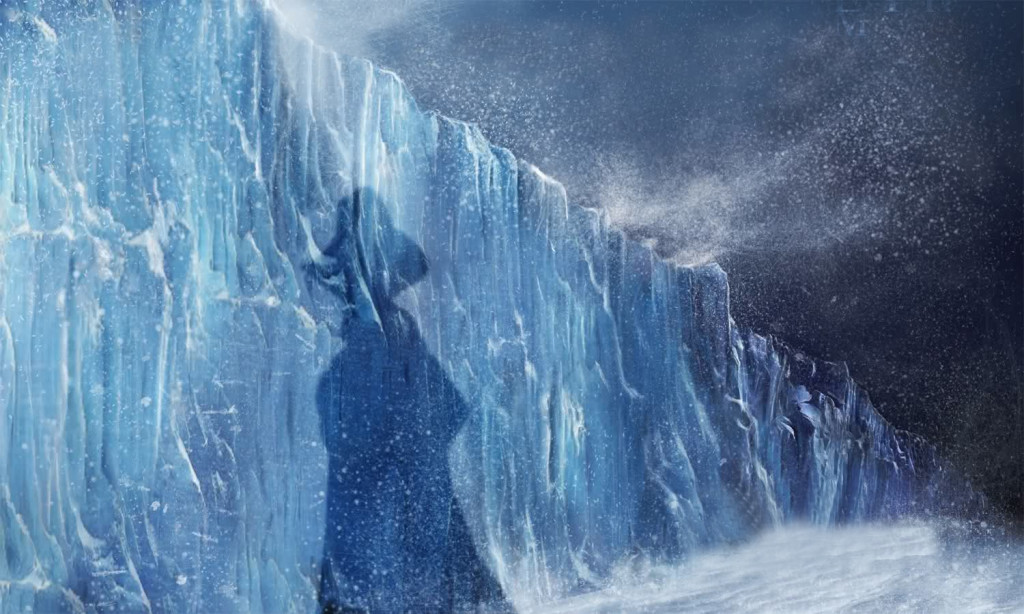
More of the Disney “Frozen”.
Let’s hope that that shadow does not belong to the following character.
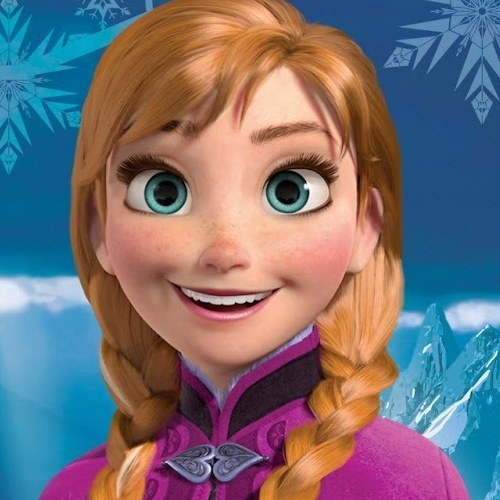
Trouble
It’s like being trapped in a little doll shop that
both my sisters would have rejected.
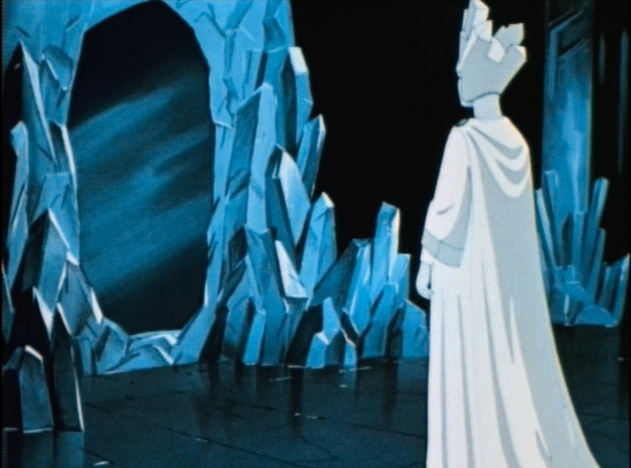
In comparison, how less pretentious and more beautiful in its
simplicity, was the Russian feature.
His Line?
Speaking of Frozen, it’s too bad that this clip isn’t s much fun as I had expected. It’s nice, though to see Disney in his natural state. Just thought I’d share.
Draft Notes
Part of the treat of gathering the drafts from Hans Perk‘s site, A Film LA is that he leaves notes about what he’s read on those animators’ drafts. Here are some samples from just the Peter Pan and the Lady & the Tramp notes:During the posts of Peter Pan:
- My MOST important reason for posting these is to give recognition to those many animators whose names are forgotten since the iconic status of the “Nine Old Men” has overshadowed them all. Mind you, I revere the Nine as the next man, but there were so many more great artists.
- Today we find e.g Marvin Woodward who was with Disney since September 1930. Jack Campbell started in 1933 and did such memorable scenes as the ones with the Blue Fairy in Pinocchio. Don Lusk started just a year later – and more memorable scenes. As a matter of fact, except for Art Stevens, all animators mentioned above started at Disney in the mid 1930′s, excepting Fergie and Woodward, so they had between some 15 and 22 years of experience at this time, not counting their time before they got to Disney’s studio.
- And there were many more animators working on Peter Pan that should be recognized. Cliff Nordberg, Hal Ambro, Jerry Hathcock, Eric Cleworth, Hugh Fraser, etc. etc. It is to recognize the skills and talents of ALL the animators that I post these drafts.
On the drafts for Lady andthe Tramp, Hands commented:
- As I wrote before: I find this film incredibly well drawn and very well animated – less occasional “fumbling” than on the previous couple of films. It is a step up from Peter Pan, and on it’s way to the meticulousness of Sleeping Beauty. The inking is SEVERAL steps up! The inking of the ending of lines in Pan was at times erratic – here it is under FULL control! It is a beautifully drawn film, with beautiful layouts, backgrounds and inking. Also, it is a nicely told story with a few surprises (though after seeing it for the umpteenth time, I am not all that surprised anymore) and especially fun side characters, like Jock, the beaver, the pound dogs and the Siamese cats. And then Milts marvelous scenes – Frank‘s (Thomas) spaghetti with-a da meat-sa balls… This film is truly a classic.
Last Laps
Actress, Esther Williams died this past Thursday at the age of 91. At the age of 17 she won the Olympic gold medal for swimming and this led to a good film career. Her swimming sequences in the films became Busby Berkeley-type numbers with dozens of swimmers surrounding her in large pools. Apparently, she burst her ear drums some nine times in the making of these sequences, over the course of her career.
She swam with the Hanna-Barbera characters, Tom and Jerry, in the film Dangerous When Wet. A very colorful sequence that isn’t terribly wonderful in its animation, but it certainly suits the film. She started as a gymnast and ended as a bone fide movie star.
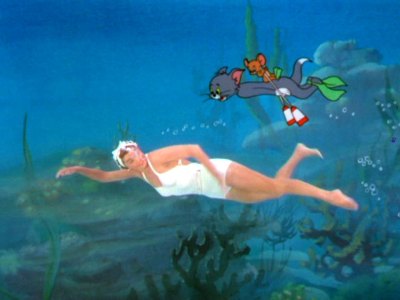
creepy Eyes
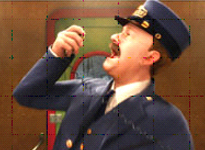 Tom Hanks was on David Letterman last night, and he came with his big moustache direct from his Broadway part in Lucky Guy.
Tom Hanks was on David Letterman last night, and he came with his big moustache direct from his Broadway part in Lucky Guy.
Letterman cut in mid sentence during a conversation with Hanks to say, “Now I remember who you remind me of, with that moustache.” Hanks was somewhat surprised but said, “Who?”
Letterman responded, “. . . that conductor from The Polar Express.” Hanks asked, without a second’s break, “Are my eyes creepy enough?”
Animation &Commentary 06 Jun 2013 06:24 am
Modern Animation
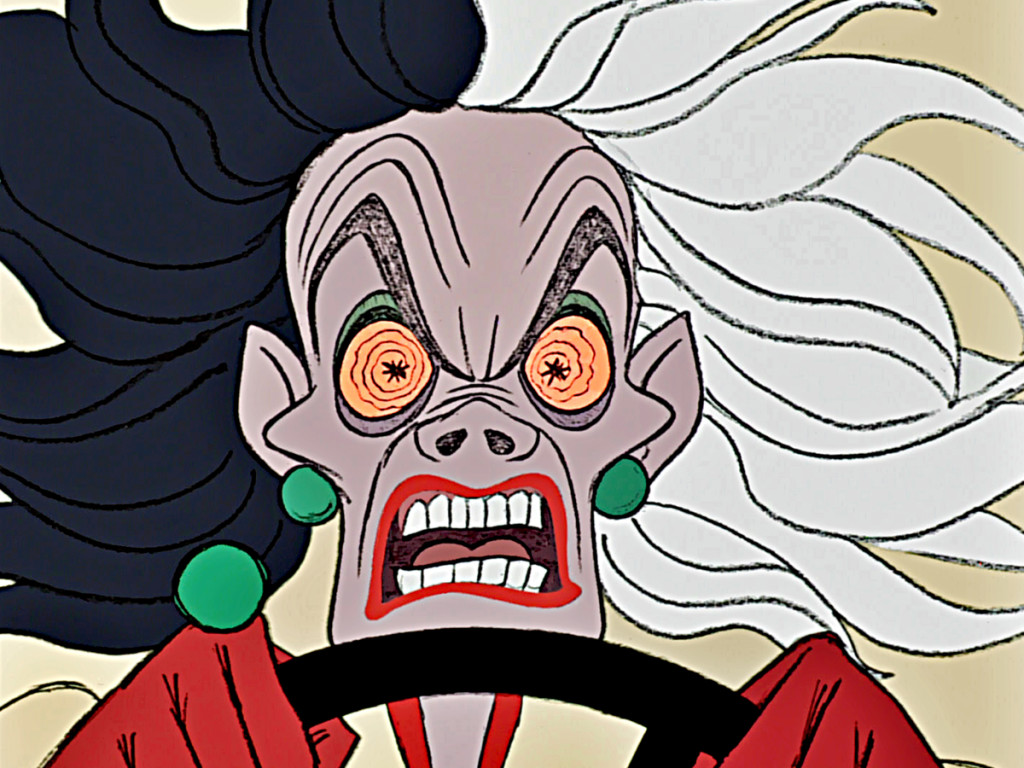
Andreas Deja has a recent post which begins with Cruella de Vil in bed, in curlers, reading the newspaper. She is annoyed by a phone call from Jasper, one of her henchman. Andreas reports her half of the conversation, “‘Jasper!’ she pauses in anger, then ‘Jasper, you idiot!’”
Andreas, finishing up his comment on Marc Davis‘ beautiful animation, writes,”Everything is top notch here, her body composition, wonderful grotesque expressions – those cheekbones are priceless – and of course subtle, controlled animation.
Modern animation as good as it gets.”
That last phrase really got me thinking, “Modern animation as good as it gets.” How astute of him. It’s something I’d thought about before, but here it’s actually articulated by Mr. Deja, one of the most important of the 2D feature film animators. (To me, he’s probably the finest of all current animators.)
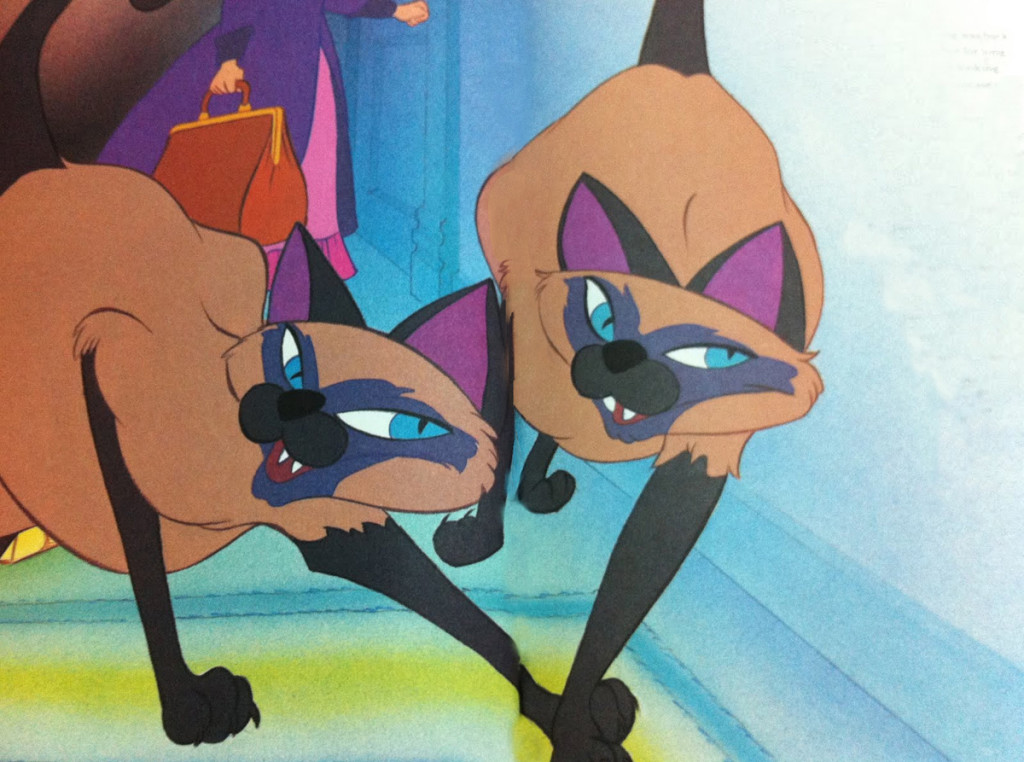 I’d placed the break in animation from Richard Williams onward. Dick had studied all the masters, imitated and reworked many of their best moves. He turned his thriving studio in the seventies and eighties into the pinnacle of the medium, teaching animation to many gifted artists and producing commercials, predominantly, had trained a small army to go out into the world and make good, strong theatrical style animation of the highest caliber. Rules were reworked and made to work to get the richest form of the medium.
I’d placed the break in animation from Richard Williams onward. Dick had studied all the masters, imitated and reworked many of their best moves. He turned his thriving studio in the seventies and eighties into the pinnacle of the medium, teaching animation to many gifted artists and producing commercials, predominantly, had trained a small army to go out into the world and make good, strong theatrical style animation of the highest caliber. Rules were reworked and made to work to get the richest form of the medium.
Animation was reborn in the style of Richard Williams and his influences such as Art Babbitt, Ken Harris. and Milt Kahl.
Hans Perk on his blog, A Film LA, publishes the drafts of the animators working on the Disney features allowing us to know who did what scenes. These are usually very informative. Hans recently completed posting the drafts to Lady and the Tramp. In among these drafts, Hans made this comment:
- Again, very serviceable animators, no masterpieces…
I like the CinemaScope note for sc. 28: “Lady will have to be alive throughout scene.”
Then if you notice other scenes on this page there are some that dictate “held cels” of other characters to the left or right of screen. They were certainly trying to control the animation for the wide, Cinemascope screen. See if you can find a note like that on any feature done today. See if you can find ANYTHING held on any feature done today.
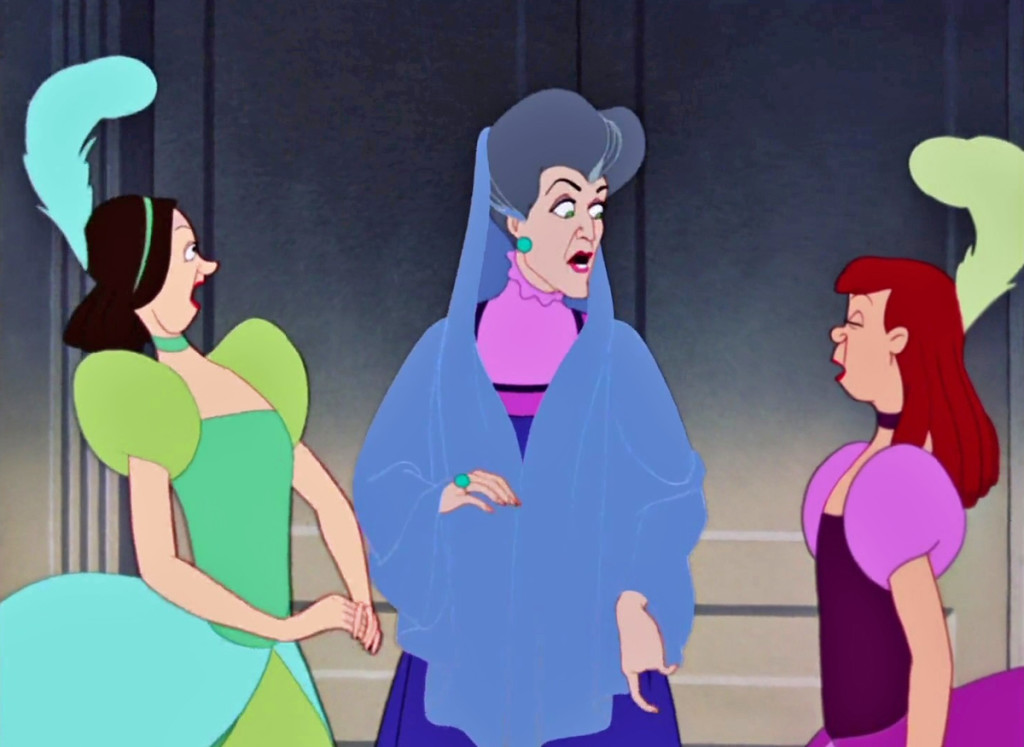 Of course, I’m talking principally of 2D animation – Disney (or Dreamworks) 2D features.
Of course, I’m talking principally of 2D animation – Disney (or Dreamworks) 2D features.
Andreas is writing about animation features done from Cinderella forward. I believe he’s considering the changes that the live action reference work to make Cinderella, Alice and Peter Pan led to Sleeping Beauty and later films. 101 Dalmatians was the big change with the human animation, led by Milt Kahl, Marc Davis, and to a great extent Frank Thomas.
This was the big change. This was the model followed by animators that came after the “Nine old men.” With a couple of films, such as Beauty and the Beast and Aladdin, a cartooning style entered the work and stayed there. The genie in Aladdin almost turns that film into a reworked Warner Bros cartoon. But a couple of the animators: Andreas Deja, Glen Keane, Mark Henn, Duncan Marjoribanks, Ruben Aquino and several other prominent among this generation went directly to the Milt Kahl model. Interestingly, this is also Dick Williams‘ model.
Of course, Milt Kahl is perfect to place at the center as an ideal.
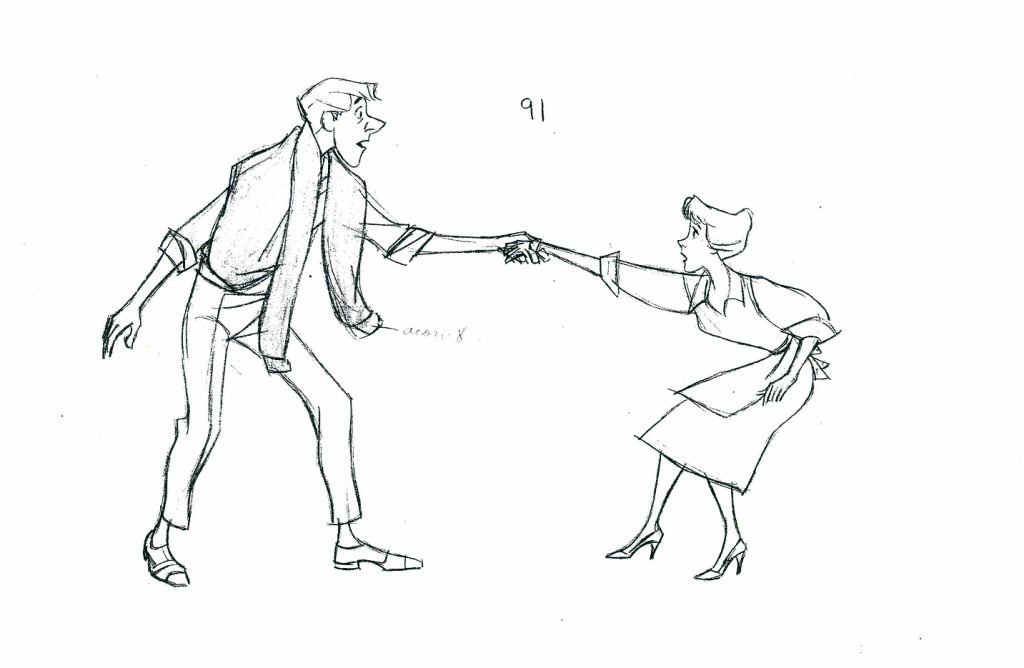 Just as Snow White and Pinocchio were a step up from the Silly Symphonies, so too, 101 Dalmatians and Sword In The Stone were a step up from Cinderella and Peter Pan. Tarzan, The Lion King, and The Prince of Egypt were remarkable changes from The Little Mermaid, Beauty and the Beast, and Aladdin.
Just as Snow White and Pinocchio were a step up from the Silly Symphonies, so too, 101 Dalmatians and Sword In The Stone were a step up from Cinderella and Peter Pan. Tarzan, The Lion King, and The Prince of Egypt were remarkable changes from The Little Mermaid, Beauty and the Beast, and Aladdin.
Given the work on Lilo and Stitch, Mulan, Spirit and several of the later features, it seems like a major change – a new growth period was due. Yet it was cut short by the financial success of some of the cgi features. 2D animation stopped.
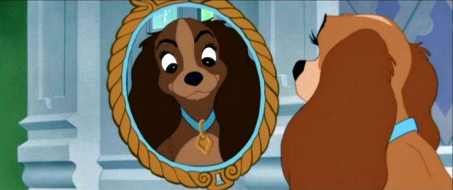
Modern animation was stilled for the moment.
Commentary 01 Jun 2013 04:47 am
Posty Posts
- I received a couple of dispatches from the great Borge Ring. Of course, I’d like to share them with you.
- hi MICHAEL
I enjoyed reading your article about clean lines and ruff animation at Walt’s
Disney Studio:
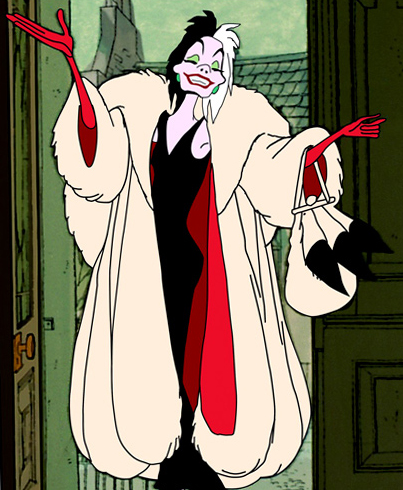
At Annecy I asked Marc Davis how many men he employed on the animation of
Cruella de Vil.
“None whatsoever. – The number of scenes showing Cruella was not more than one
artist could handle. (then with a laugh) there wasn’t even a modelsheet”
“But she interacted at times with other characters such as the two villains”
“That’s right – they were animated by John Lounsbury – He and I worked well
together even though he was seated in another wing.There was a scene where the
two villains get slapped in the face by Cruella. I made Cruella do the tho slaps
and brought the drawings over to John. It was up to him to see that the villain
heads were there where the slaps hit.”
greetings
Borge
PS
That which I’m quoting here may not tie in directly with your article, but I
thought that you (of all people) aught to know about it because you already have
so many pieces of the allbeloved jigzawpuzzel we call The Golden Years.
And then I received this note on the Martin Toonder post.
- hi Michael
Marten Toonder and I became close friends over the years and we played the game
of “Do You Remember?”
Marten said: “If you will write a book about me as a filmmaker, I will finance
it – It will take you a year.”
I once said: “Marten, why did we clash so often?”
“Ach, Ring, that was my mega ego”.
best
Borge
Lotsa Cartoons
Jerry Beck‘s excellent blog, Animation Scoop, has an interesting post by Charles Kenny. It questions the abundance of animated features rushing out to the theaters. Just this Thursday there was a report that Disney/Pixar plans on releasing 15 features in the next six years. According to Cartoon Brew, they’ve released the titles and the release dates for all of them. That seems to support Mr. Kenny’s comment.
Jeffrey Katzenberg has already stated that he hopes for Dreamworks to start producing two features a year starting next year.
We can question the quality of these releases but this really isn’t the point as I see it. Live Action features come out by the hundreds each year. From that large number maybe a dozen are really good films, maybe a hundred turn a profit, and far fewer are the sought after block busters.
Animated features have been fewer, far fewer released each year. It was just two years ago that we ere astonished to see 18 films qualify for the Oscar. That, of course, had nothing to do with quality. They just had to be eligible according the Academy’s rules, which basically means they had to be the right length, have the right release date at the right theaters and be animated.
Just as with the Live Action films the animated films will naturally fall into similar categories: the good the bad and the ugly. Bu we already have that, in my view. There will just be more of them.
If animated features increase their production, it means more work for animators, more of a chance for a couple of really good films to get produced. The hope would be that there would also be the opportunity of more films getting released that aren’t all big studio movies. That’s probably where our gems will come from. If there are more animated films being produced the likelihood of a greater sample might encourage the smaller distributors.
Whatever we think of it, it’s probably going to happen.
Lady Drafts
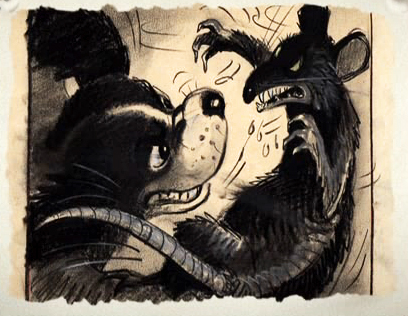 I just thought I’d post a quick note. Hans Perk has been currently posting the drafts for Disney’s Lady and the Tramp on his blog A Film LA.
I just thought I’d post a quick note. Hans Perk has been currently posting the drafts for Disney’s Lady and the Tramp on his blog A Film LA.
This film was such a landmark for anyone of my generation who sought out the Disney features back in 1955. All those incredible ads and tv shows we saw on the Disneyland show make it really stand out from many of the others. It was, consequently, and enormous success for Disney. (It’s also a pretty great film.) Bill Peet’s work is sensational.
To coincide with Hans’ blog I’m going to post a couple of pieces on Lady and the Tramp, as well. Starting Monday.
Mantoloking Memories
A letter from Friend, Tom Hachtman, from the New Jersey Shore.:
- HI Michael, Joey and I were working in Toms River so we took Rt. 35 South through Mantoloking. It has been seven months since Sandy.
I shot these from the window of Joey’s truck. There are over 500 houses in Mantoloking and all of them were damaged. Over fifty houses totally vanished.
The name Mantoloking, according to Wikipedia, is derived from Lenni Lenape Native American language and possibly means ‘sand place’.
 1
1
Books &Commentary 30 May 2013 04:36 am
Art of Brave
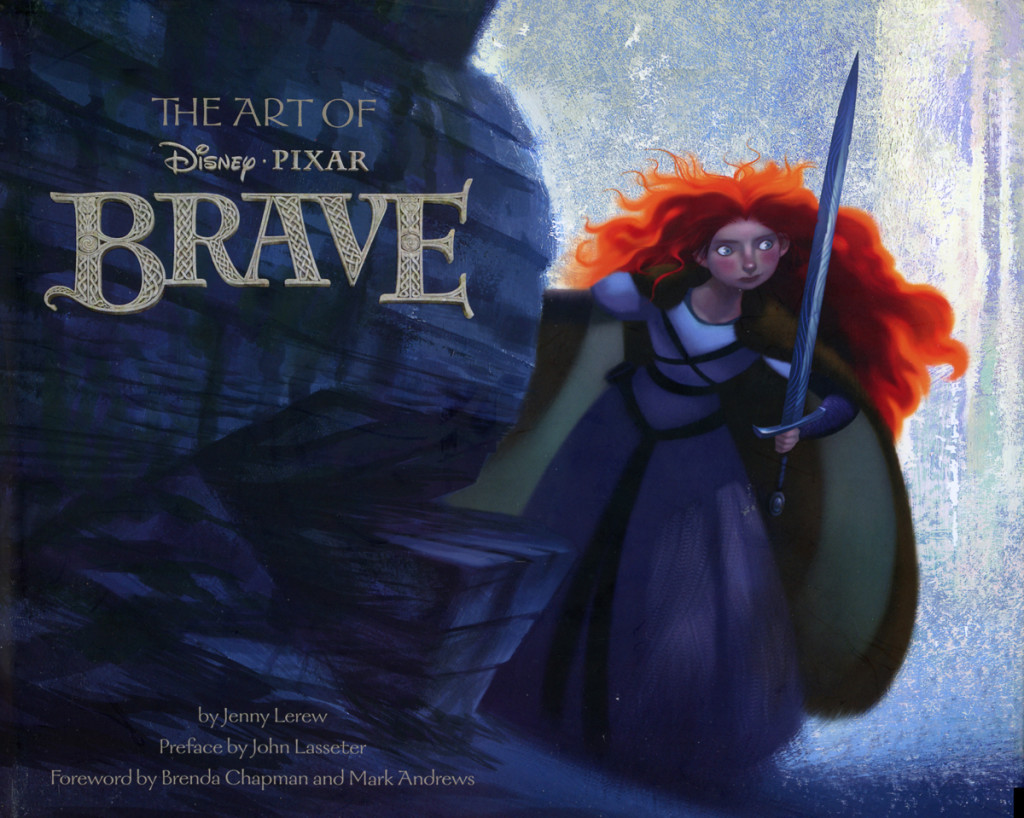 I didn’t get to review an animation book last year and have sorely wanted to. The publisher was going to send a copy, then they couldn’t, then it was too late, and then, lo an behold, I received a copy of Art of Brave by Jenny Lerew. Chronicle books has long been a favored publisher of mine – at least of art books, particularly animation art books. Their attention to detail is usually great and meticulous. That’s definitely true of this volume.
I didn’t get to review an animation book last year and have sorely wanted to. The publisher was going to send a copy, then they couldn’t, then it was too late, and then, lo an behold, I received a copy of Art of Brave by Jenny Lerew. Chronicle books has long been a favored publisher of mine – at least of art books, particularly animation art books. Their attention to detail is usually great and meticulous. That’s definitely true of this volume.
I’m delighted to finally have a copy for my library, The book is a beauty. The Production Designer, Steve Pilcher has an enormous volume of art here and all of it’s incredible. Whether pen and ink, chalk, acrylic or digital his artwork is jaw-droppingly beautiful, and the bulk of the work seems to be his. Others such as Noah Klocck for his digital renderings, Mike Mignola and his great ink & paint character sketches, or Matt Nolte’s pencil sketches, Mark Andrews’ sketchbook drawings or Nelson Read’s castle details; they’re all terrific artwork. Cassandra Smolcie gives complex Celtic Graphics, and, of course, Tony Fucile offers beautiful character drawings. The Art backing up Brave is overwhelming. How could they NOT make such a beautiful film?
Jenny Lerew, the book’s author, comes in quietly and before we know it we’re reading about the film’s beginnings and its make up. We get a good picture of Brenda Chapman who originated the film almost fully formed, and, because of the steady writing of Jenny Lerew we can easily see how the film grew. Unlike many other books of this sort Jenny doesn’t shout out her writing, but she just goes about the business and articulately explains the production for us. We see past the initial pitch meetings right to the green light.
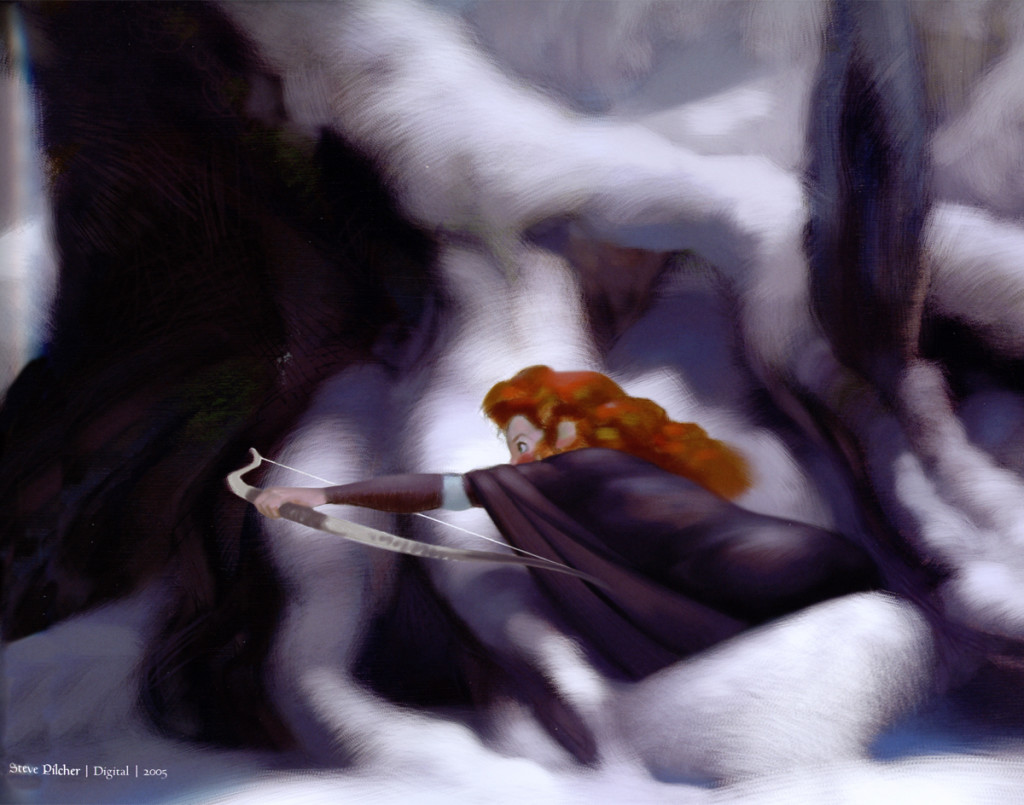 1
1
The heavy duty politics that must have accompanied this movie – Brenda Chapman having been replaced midstream as director – isn’t even discussed (or maybe I missed it). What is detailed is the development of the film, particularly its story, and even more pointedly the “Art”.
We do learn that the imagery goes from almost 100% snowbound settings to a wider variation. This is most definitely one of Mark Andrews‘ directions in taking the reigns. And with that knowledge I can’t but help wonder whether it was a good change.
I might have enjoyed seeing the book go a bit more into the cgi realm. We have all these glorious hand-painted images, but when does it get interpreted into the digital? Not even much discussion of the true heart of this film’s story – the hair. Merida’s beautifully flowing mane of curls. It’s a wonder of computer animation that they pulled it off. Ang Lee had Richard Parker, Brave had that red hair! Both won Oscars for their achievements.
As a gossip-hound I would have liked seeing some of the dirt to know what happened, but the plan and the method is to just tell about the art of Brave. In her closing acknowledgement, Jenny Lerew says she went directly to Brenda Chapman to ask what she wanted seen in the book. Chapman said that “. . . what mattered most to her was that the book would shine a light on the artists, the crew who had worked so hard and for so long and achieved such beautiful results.” This is definitely the book Lerew has written.
Storyboards
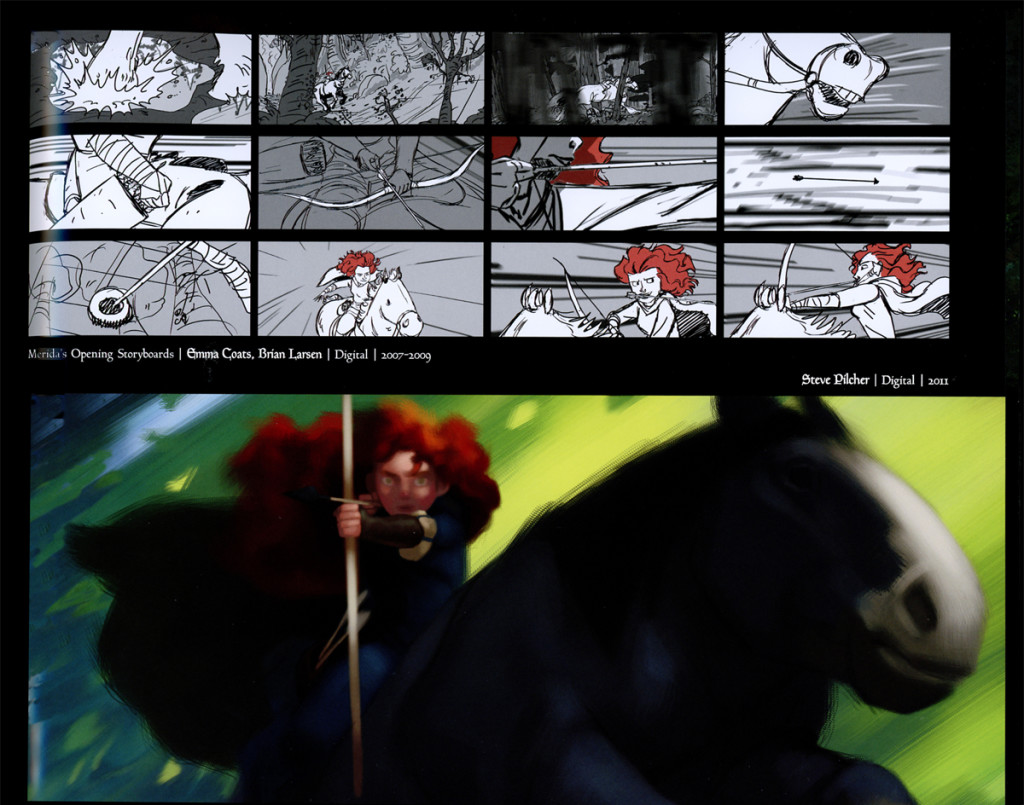 7
7
It’s only natural that a good number of illustrations display
the storyboard. Jenny Lerew, the book’s author, is
a talented storyboard artist.
The stunning artwork and the confident writing of Jenny Lerew make this, for me, a valuable book that I’m glad to have as part of my animation library.
.
